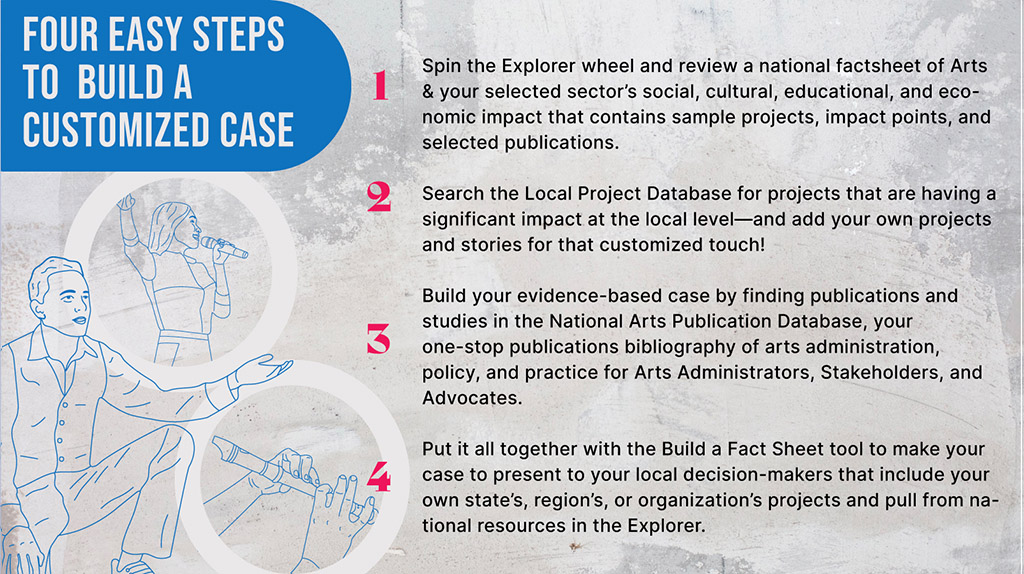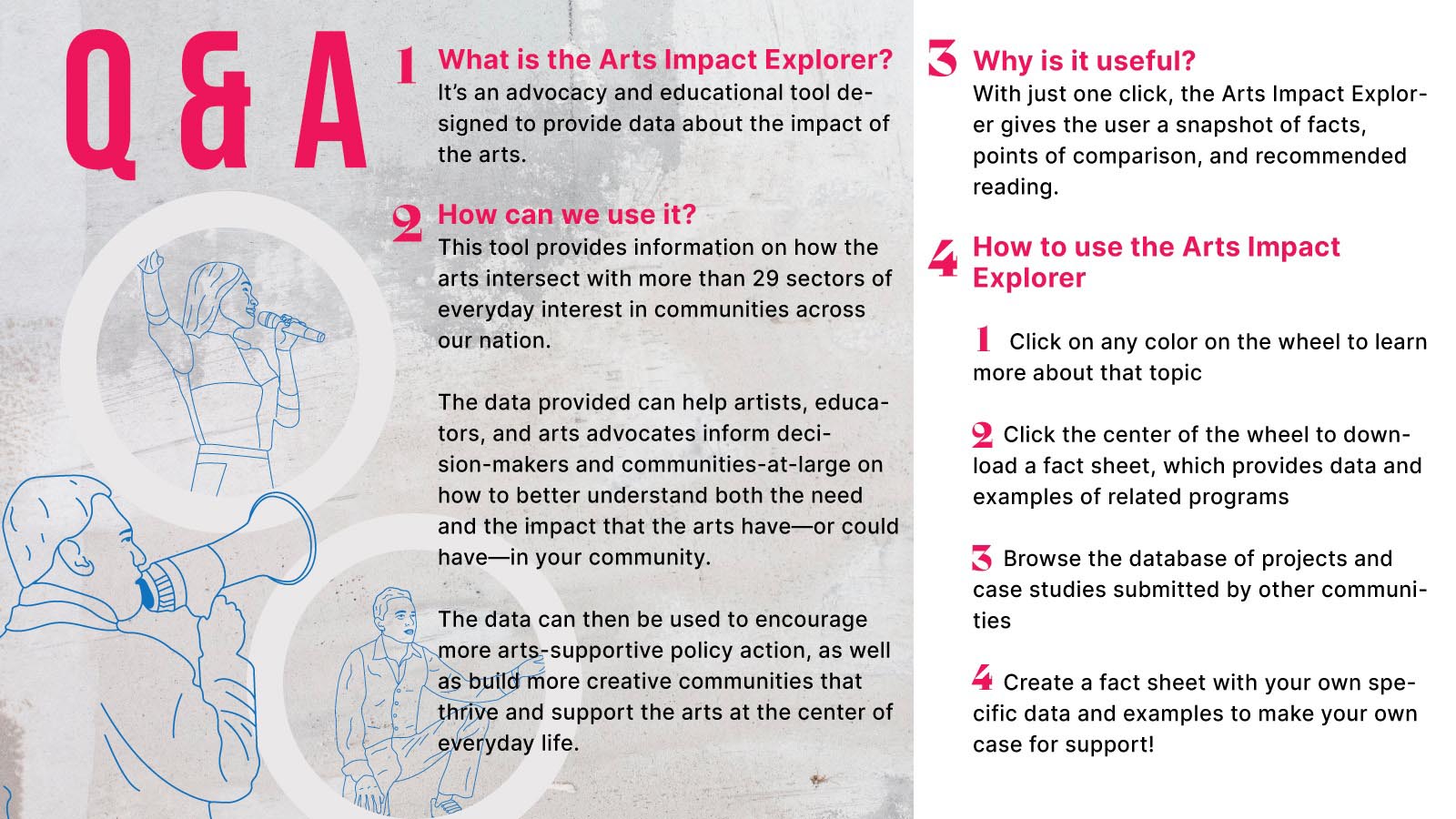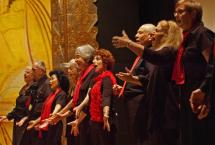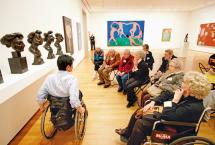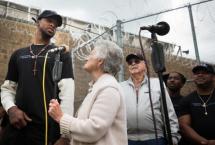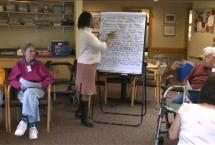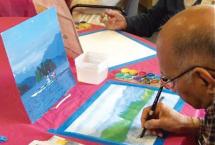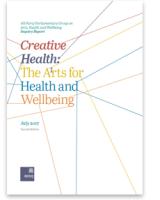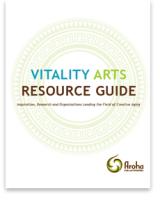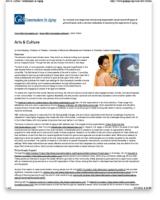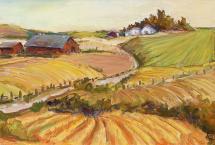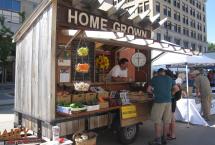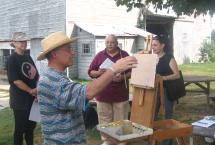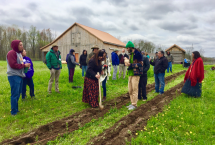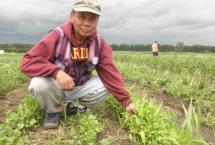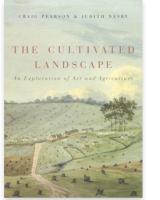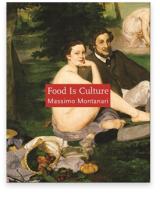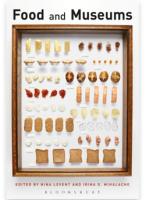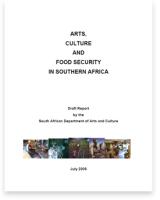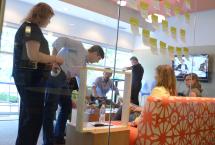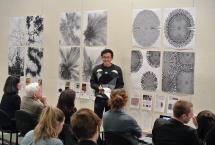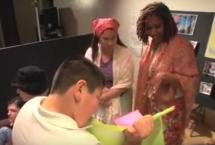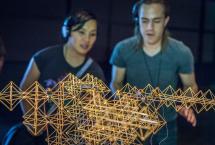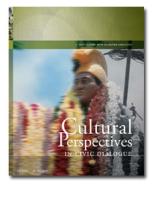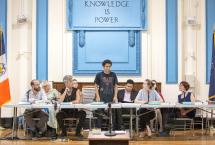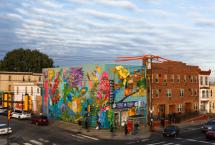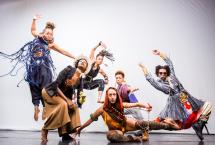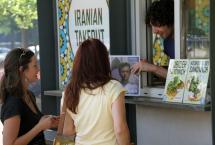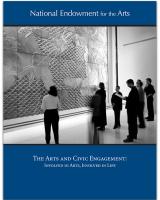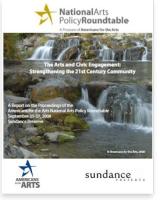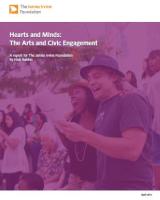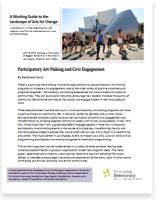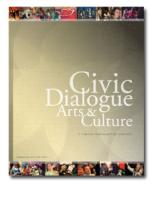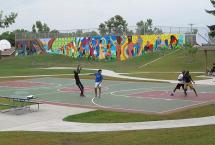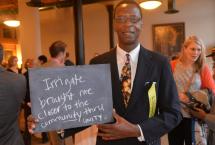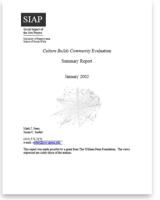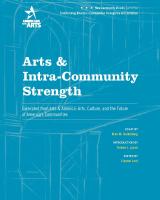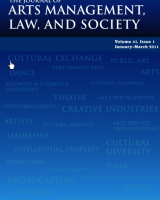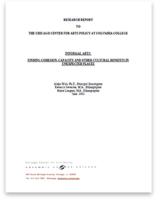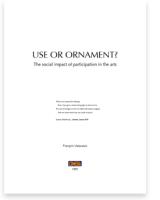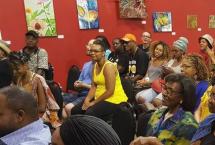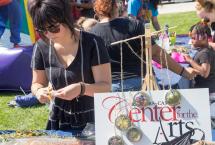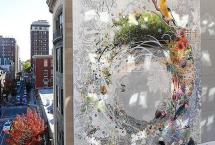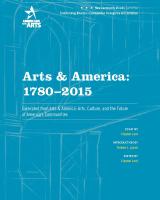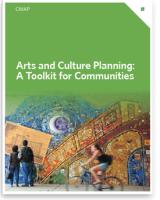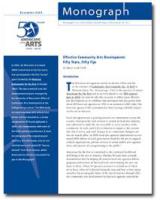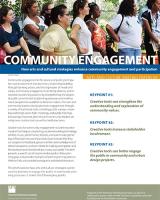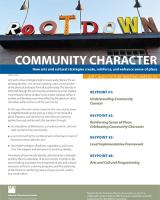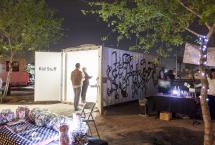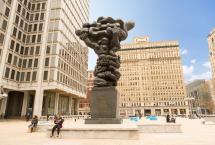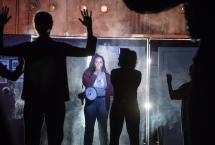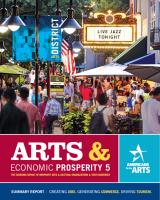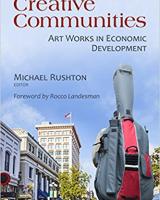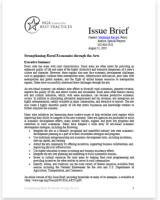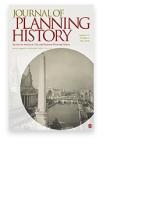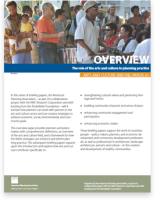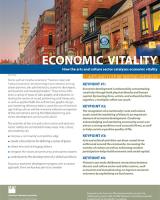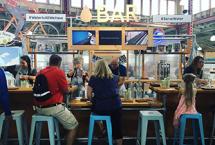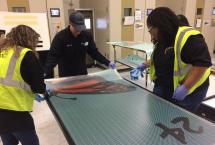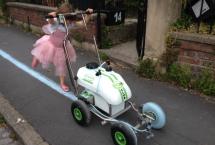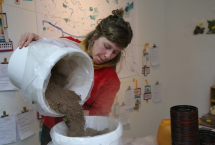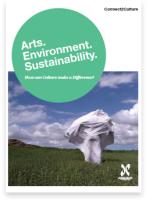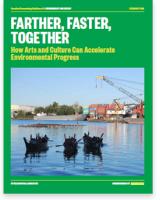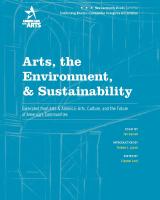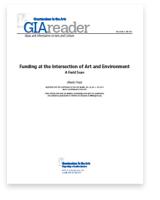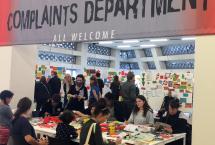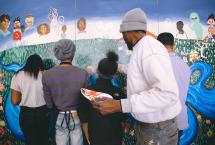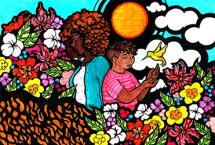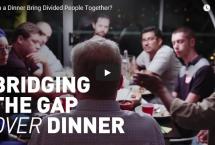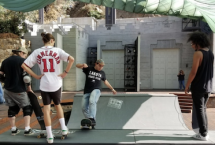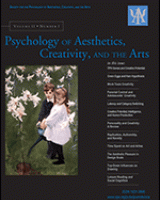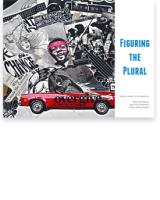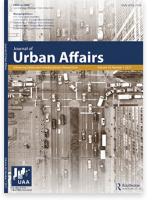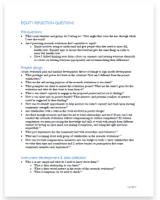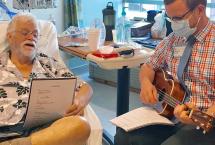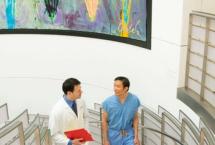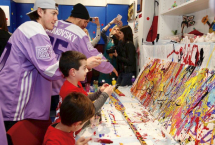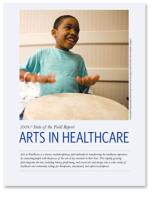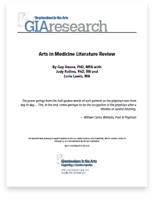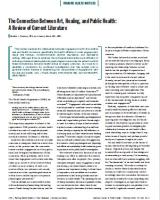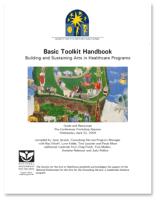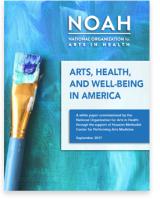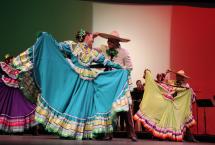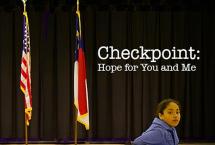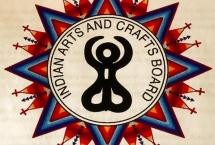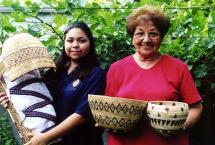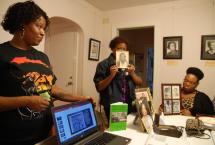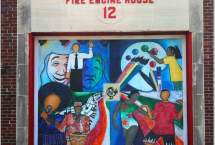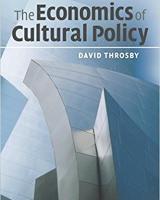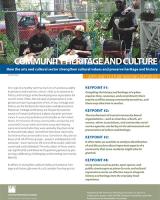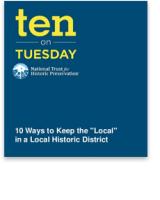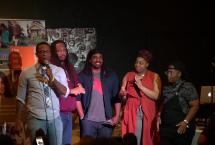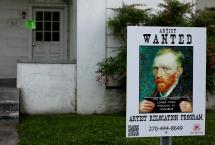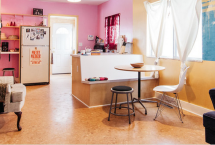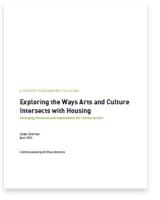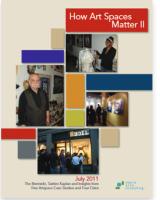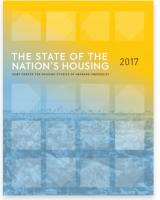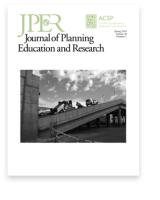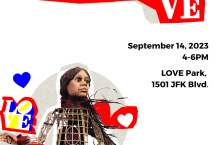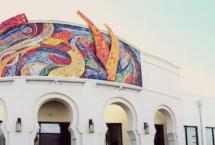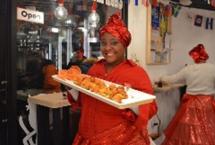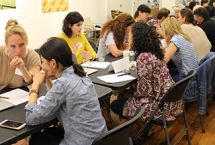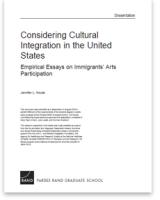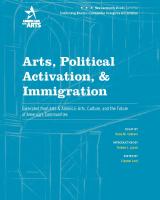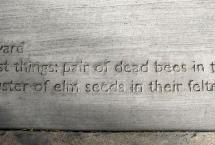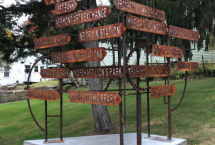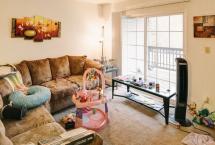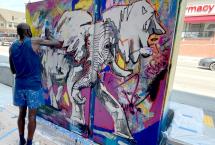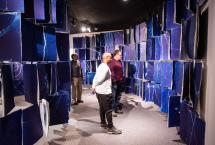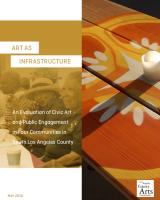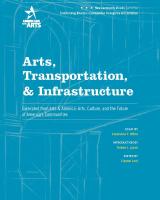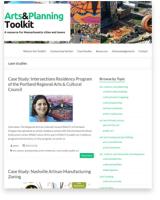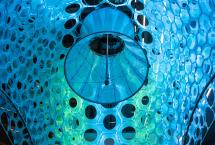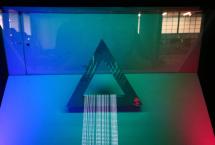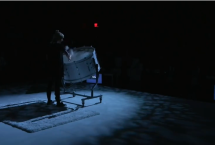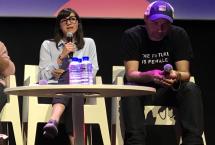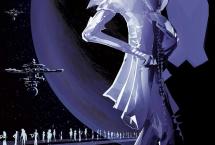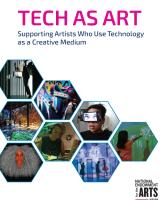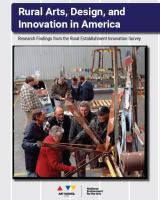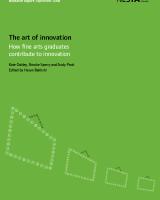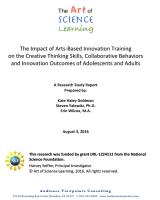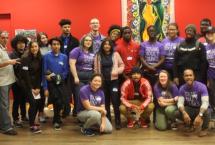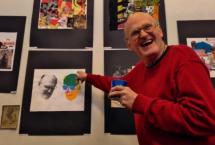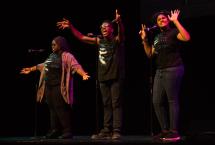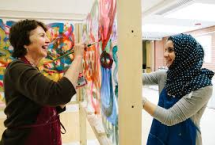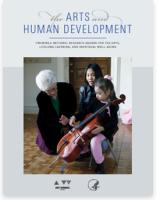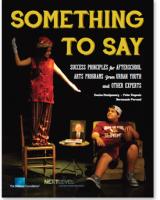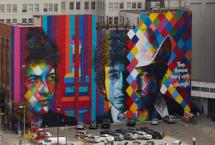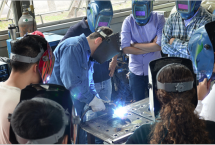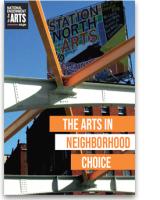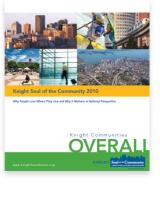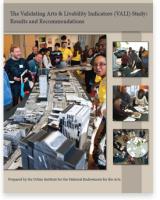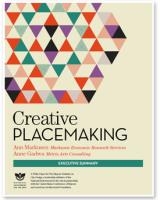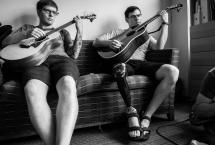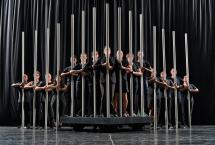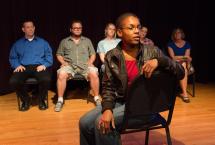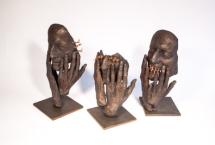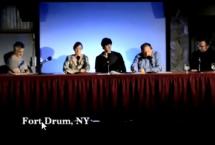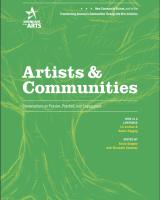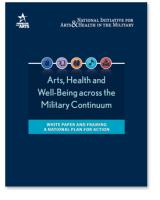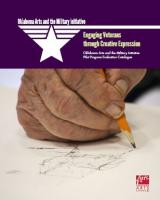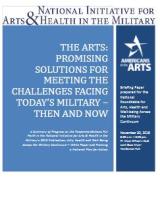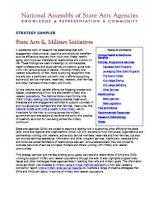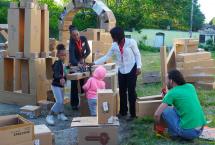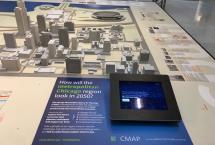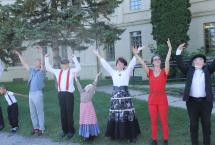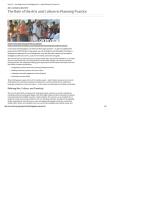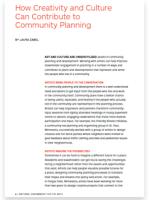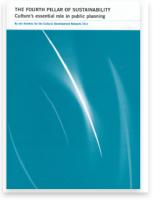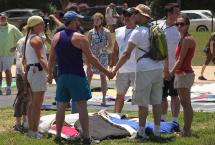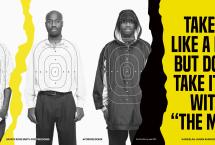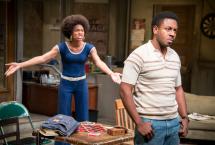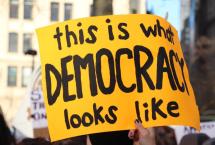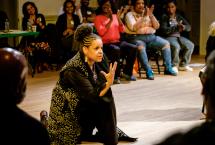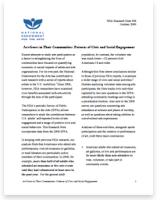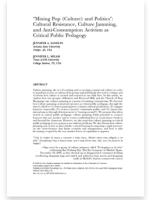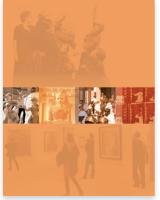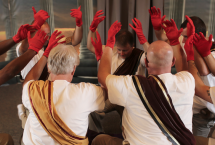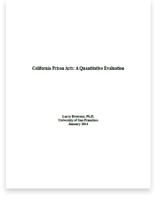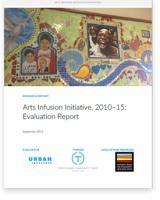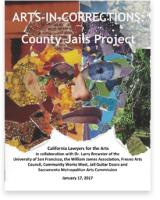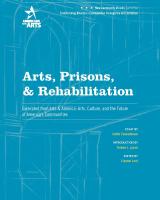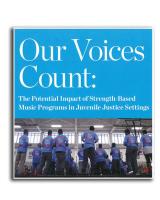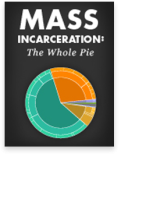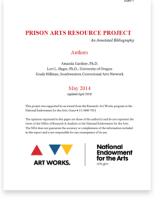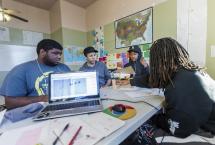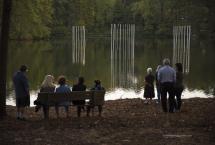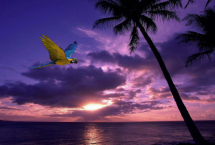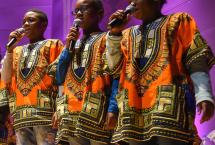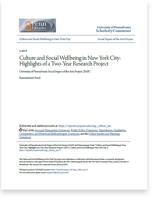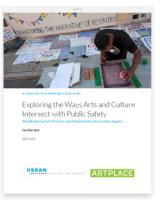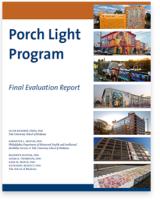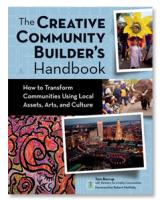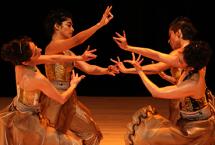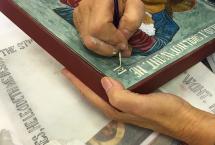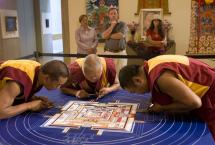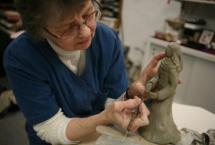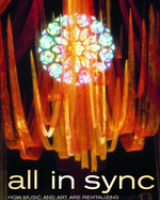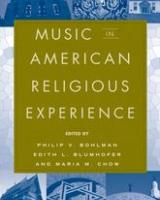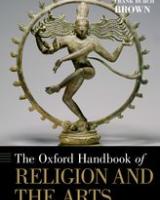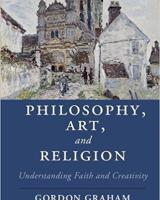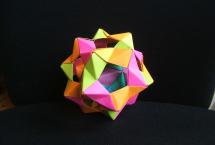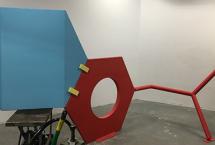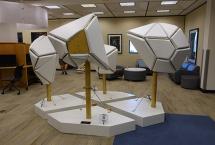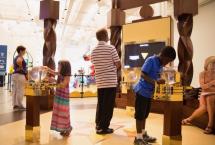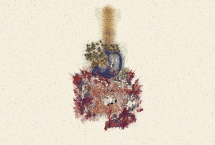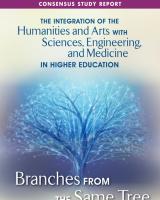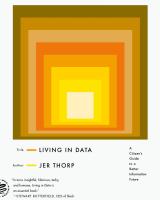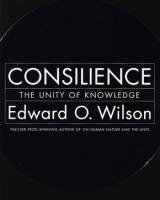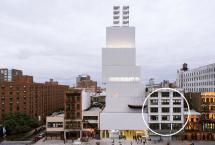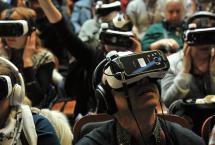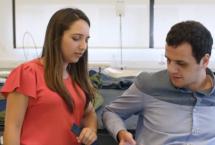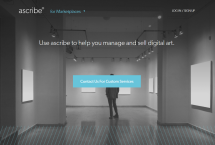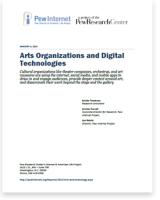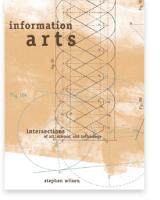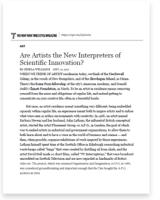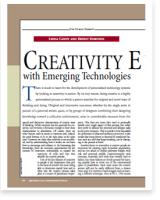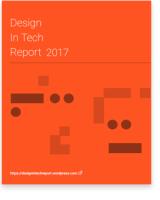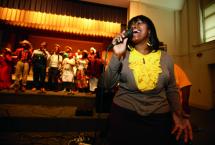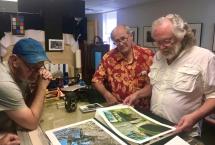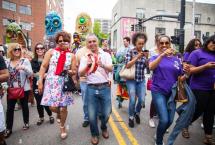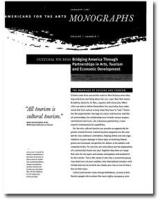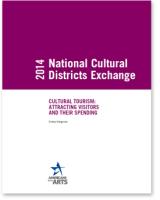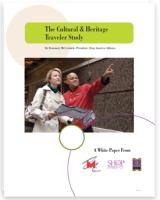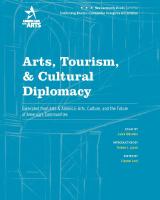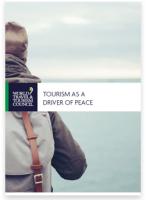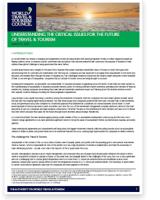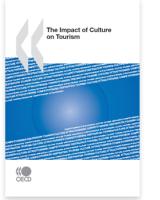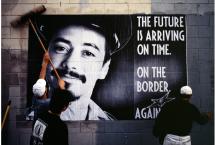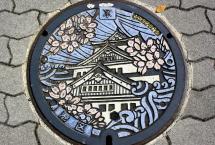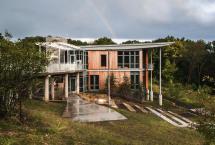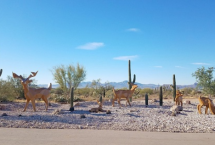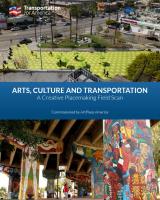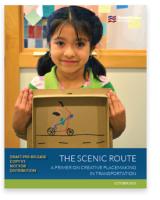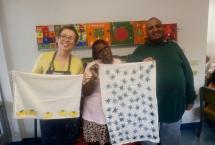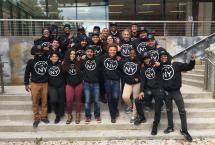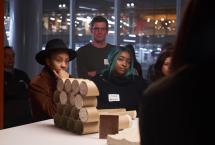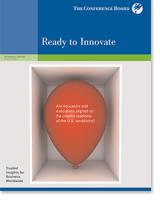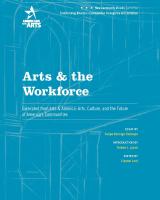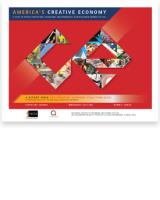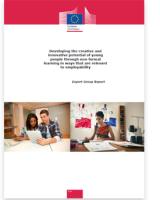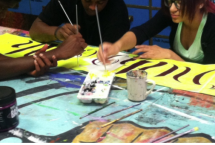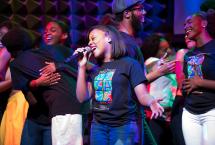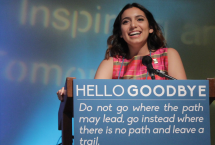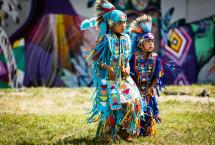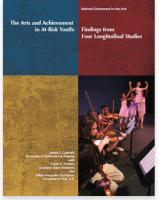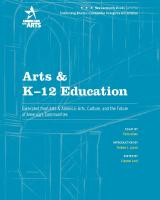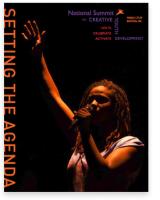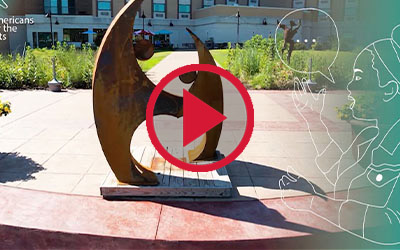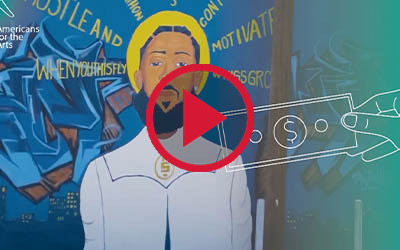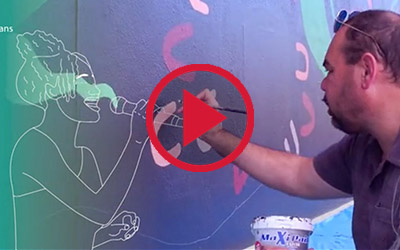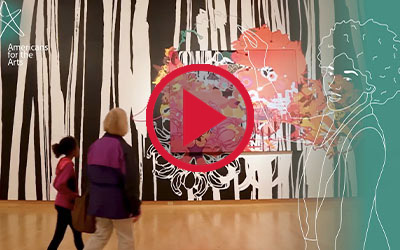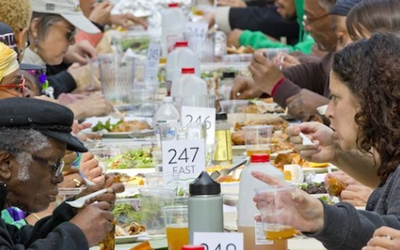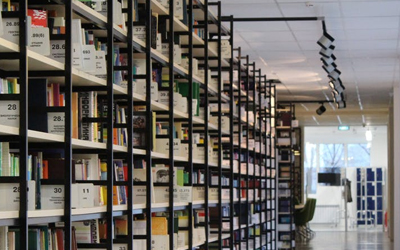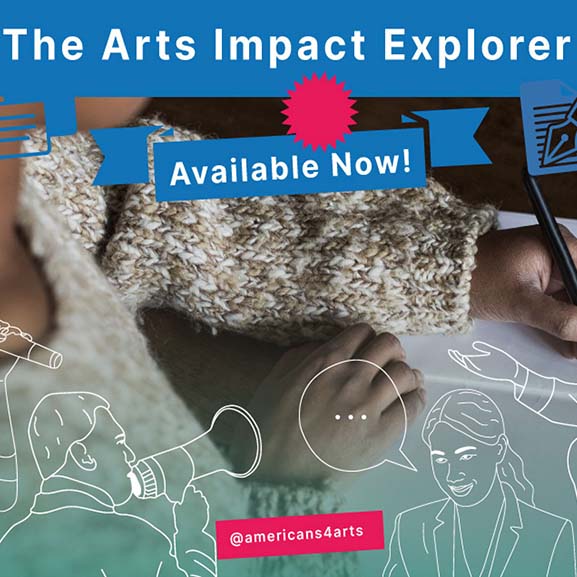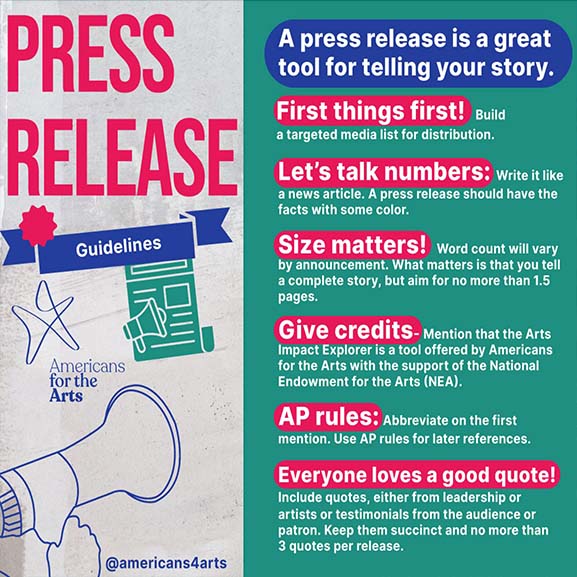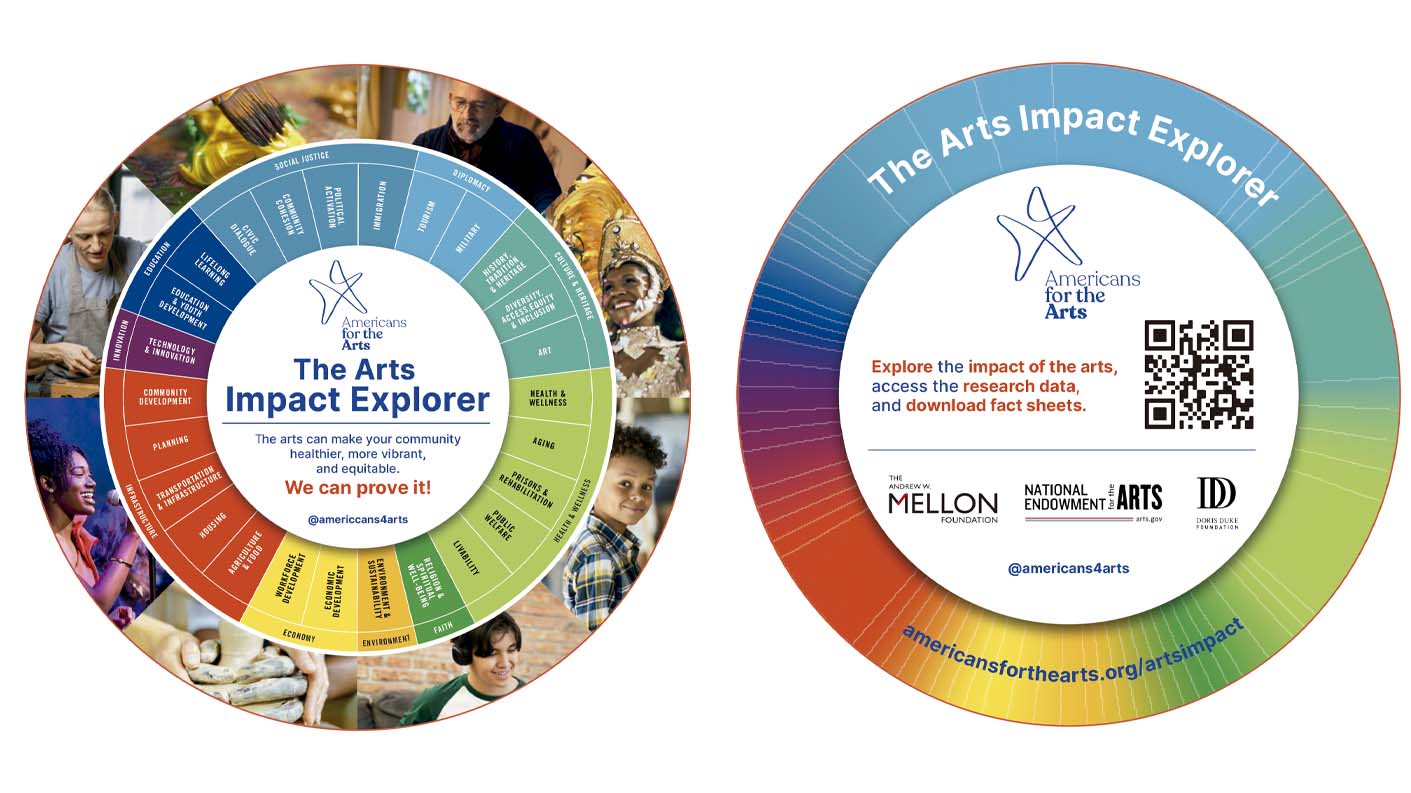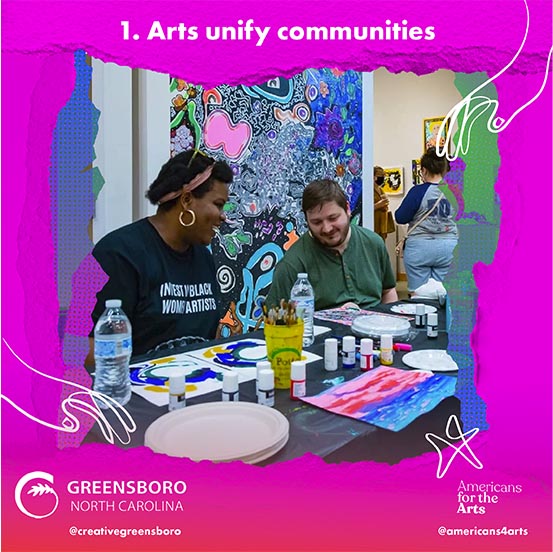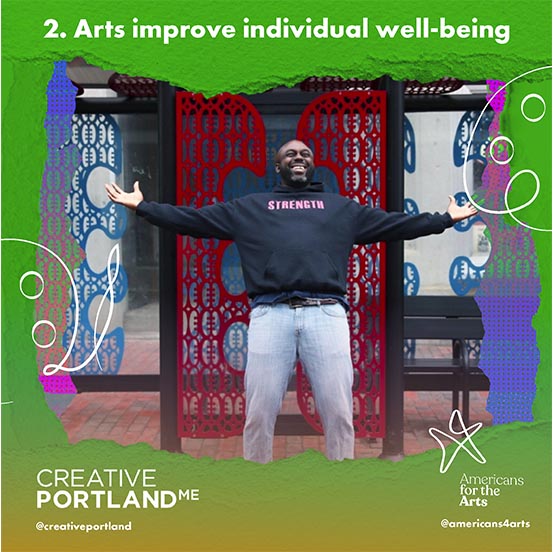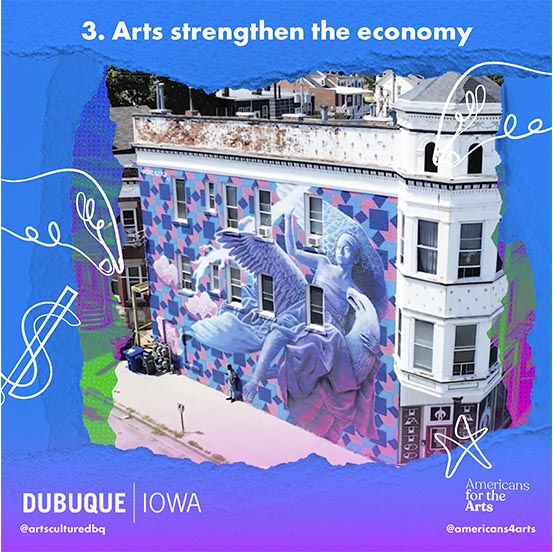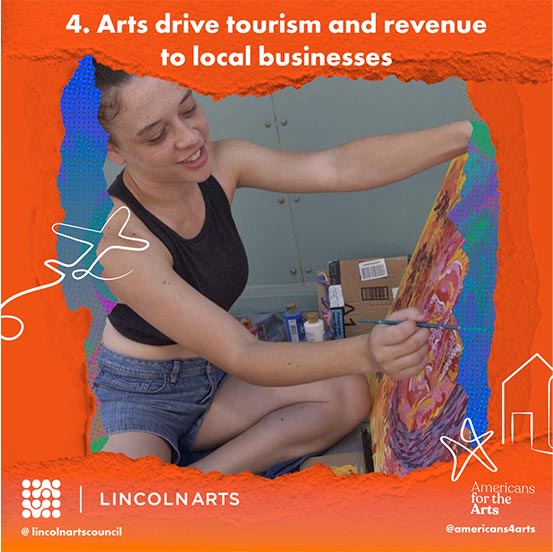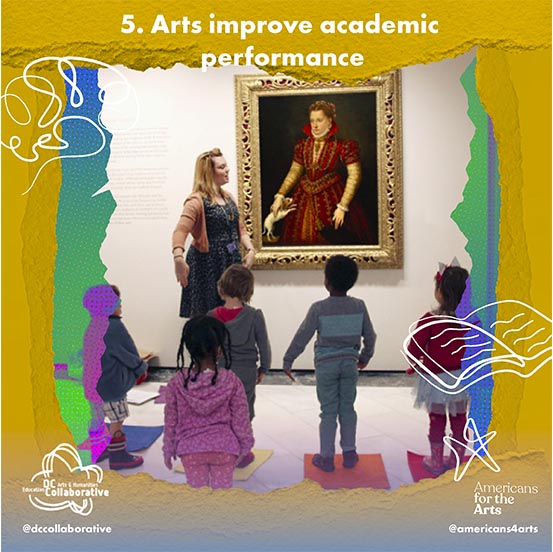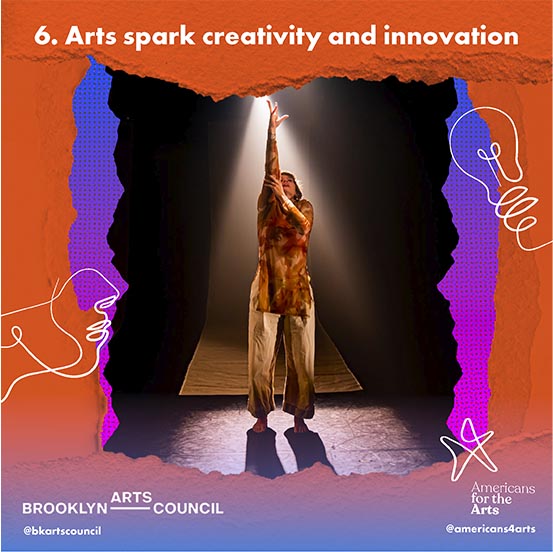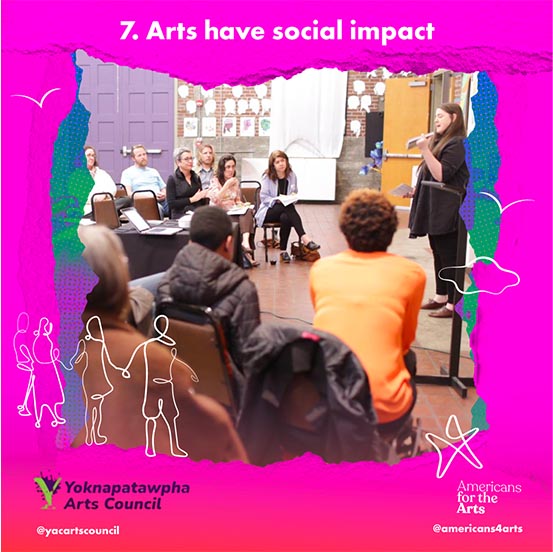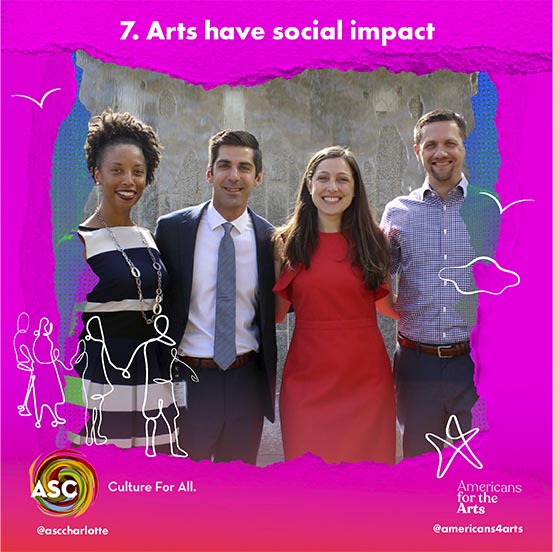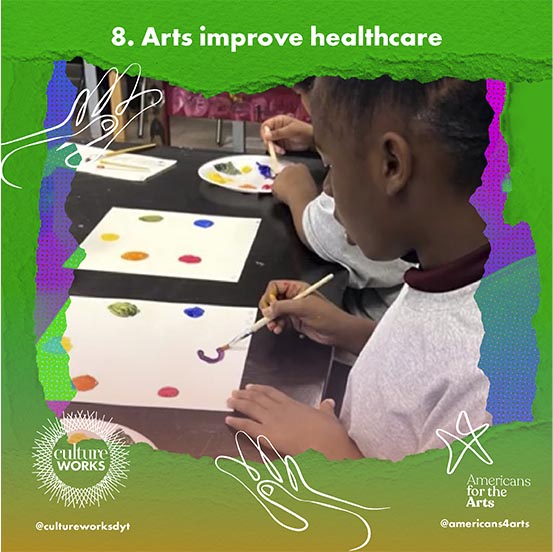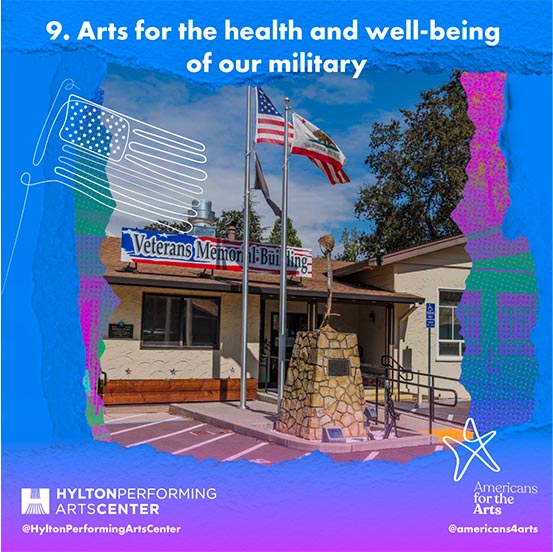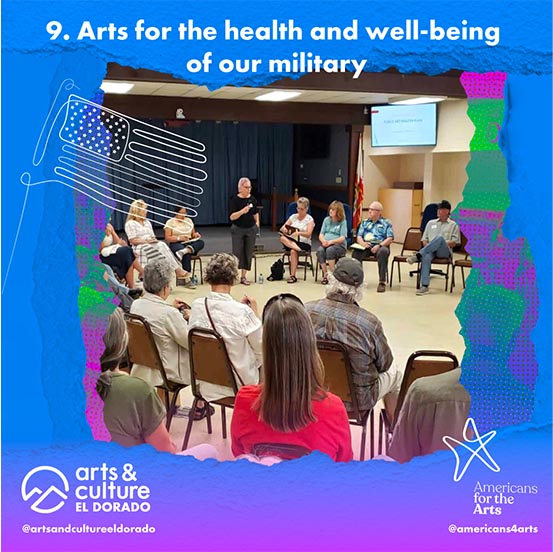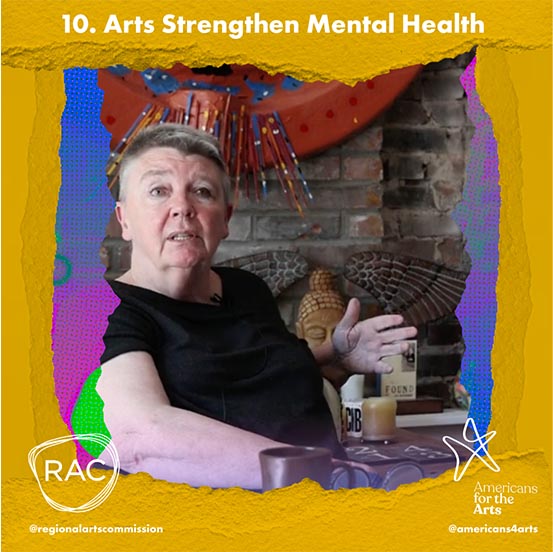The Arts Impact Explorer is your advocacy case-making tool to educate local decision-makers about the social, cultural, educational, and economic impact of Arts and Culture in building healthy and vibrant communities.
Arts Impact
Explorer
Click any topic on the wheel to learn more.
Aging
-
As we grow older, we gain wisdom but often struggle with the loss of physical and cognitive abilities. The arts keep us vibrant by providing physical and mental stimulation, entertainment, and avenues for social interaction and connection.
Ten thousand people turn 65 each day, and the fastest-growing age group in the United States is women 85 years of age and older. By 2050, the U.S. population over 65 will more than double, to 86.7 million people, and the global average lifespan is expected to extend by 10 more years. This increase in an aging population will weigh heavily on the already-stressed social services and medical sectors, as well as on the caregivers of these older adults.
Getting older can be both a joy and a challenge. It’s a new time of celebration, freedom (for many) from daily work, the opportunity to learn new skills, explore new places, and enjoy life. It can also be a time of periods of loneliness, declining health, and the grappling with the end of life. The arts are there for all of it.
Arts participation can improve health, decrease depression and loneliness, and increase participation in other kinds of activities. It also has been shown to decrease anxiety, which affects cognitive performance and decision-making, and lower the risk of dementia. Using the arts to engage with aging effectively provides life-long learning, increases social engagement, decreases loneliness and isolation, and improves frail health and memory loss at home or in care facilities.
- Impact Points10 weeks of arts participation to a stronger brain.
The arts literally make your brain grow. Participating in the visual arts for as little as 10 weeks has been shown to increase the resiliency and neural connectivity of the brain, making for increased self-awareness and better memory processing.
Bolwerk, A. et al. How Art Changes Your Brain: Differential Effects of Visual Art Production and Cognitive Art Evaluation on Functional Brain Connectivity. PLOS ONE, 2014, 9(7). Retrieved 16 May 2023 from
https://journals.plos.org/plosone/article?id=10.1371/journal.pone.01010…$43.3 billion in savings from unneeded doctor visits.After a year of singing in a chorale, older adults visited their doctor an average of 2.5 times less per year. This saves $500 per person, or up to $43.3 billion for the 86.7 million older adults in the US each year.
Cohen, G., Perlstein, S., Chapline, J., Kelly, J., Firth, K., & Simmens, S. (2006, December 1). The Impact of Professional Conducted Cultural Programs on the Physical Health, Mental Health, and Social Functioning of Older Adults [Electronic version]. The Gerontologist, 46(6), 726–734. Retrieved 26 January 2018 from https://academic.oup.com/gerontologist/article/46/6/726/584645
Arts programs improve the health of older adults.Professionally-conducted participatory arts programs impact older adults by improving health, decreasing depression and loneliness, and increasing participation in other kind of activities.
Cohen, G. (2006). The Creativity and Aging Study: The Impact of Professionally Conducted Cultural Programs on Older Adults. Washington, DC: George Washington University. Retrieved 15 May 2023 from https://hsrc.himmelfarb.gwu.edu/son_ncafacpubs/2/
The arts keep people engaged in life.Research into social dancing shows that such activities leads older dancers to feel more engaged with their life and allows them to connect with pleasant memories from earlier in life while also building new ones in an active, social setting.
Skinner, J (2013). Social Dance for Successful Aging: The Practice of Health, Happiness, and Social Inclusion Amongst Senior Citizens. Anthropology and Aging Quarterly, 34(1) 1-8-29. Retrieved 18 May 2018 from https://pure.qub.ac.uk/portal/files/130672235/Social_Dance_for_Successf…
The arts make life better.When older adults participate in the arts, they demonstrated statistically significant higher levels of five positive well-being indicators (interest, sustained attention, pleasure, self-esteem and normalcy).
Kinney, J. M., & Rentz, C. A. (2005). Observed well-being among individuals with dementia: Memories in the Making, an art program, versus other structured activity. American Journal of Alzheimer’s Disease and Other Dementias, 20(4), 220–227. Reviewed 18 May 2018 in https://journals.sagepub.com/doi/pdf/10.1177/153331750502000406
- Examples of Practice
Stagebridge
Stagebridge, the nation’s oldest theater company of older adults, provides professionally taught classes for adults over 50, entertainment and hands-on classes brought to community venues that serve both active and frail elders, and performance-based staff training to healthcare workers and senior services providers.
©Stagebridge, Stuart Kandell
MeetMe at MoMA
MoMA’s MeetMe at MoMA program (2007–2014) provided education programs for people living with Alzheimer’s disease and other forms of dementia and their caregivers. The resources MoMA shares from their experiences are valuable tools to aid others in forming programs for this population, including video from related special initiatives and a series of instructional training videos on how to plan and implement art discussion and art-making programs for this audience.
Group tour from the Meet Me at MoMA program. Photo: Jason Brownrigg.
Young@Heart Chorus (Y@H)
Featured in a E*TRADE commercial during the 2018 Super Bowl, Y@H is a community group that formed in 1982. Since then, the chorus has performed in Europe, Australia, and Canada. The group often works with other community groups in their Massachusetts town to create mash-ups that are fabulous forums for singing at all ages.
Young@Heart at Hampshire County Jail - May 2015
TimesSlips
TimesSlips infuses creativity into elder care relationships and systems. Founded by MacArthur Fellow Anne Basting, TimeSlips provides hope and improves well-being through creativity and meaningful connection.
Members of a Time Slip workshop explore their creativity. ©TimeSlips
Cognitive Dynamics
Cognitive Dynamics is a program that uses various artforms to work with people with cognitive disorders, such as Alzheimer’s, and their caregivers. The program provides education, research, and supportive, innovative care models that promote human dignity, especially through expressive arts and storytelling.
Man works on water color as part of his art therapy. ©Cognitive Dynamics.
- Reading List
The Creativity and Aging Study The Impact of Professionally Conducted Cultural Programs on Older Adults Final Report
In 2001, the National Endowment for the Arts developed a cooperative agreement with The George Washington University to conduct a multisite national study with the aim of measuring the impact of professionally conducted community based cultural programs on the general health, mental health, and social activities of older persons, age 65 and older. Referred to as the Creativity and Aging Study, the project’s formal title is “The Impact of Professionally Conducted Cultural Programs on Older Adults”. No previous study of this nature using an experimental design and a control group had been carried out. Results reveal strikingly positive differences in the intervention group (those involved in intensive participatory art programs) as compared to a control group not involved in intensive cultural programs.
Creative Health: The Arts for Health and Wellbeing
This 2017 study out of the UK is the result of a three-year inquiry into the state of practice and research at the intersection of the arts and social care and provides recommendations on improvements of policy and practice.
Creativity Matters: The Arts & Aging Toolkit
Creativity Matters is based on the report of the first national conference on creative aging, cosponsored in 2006 by NJPAC and NCCA. Three dozen interviews with leading practitioners and an extensive literature review expanded the toolkit's content.
Vitality Arts Resource Guide: Inspiration, Research, and Organizations Leading the Field of Creative Aging
This resource from Aroha Philanthropies is designed to provide an overview on the field of creative aging. It provides a strong platform to find inspiration, discover current research, and locate leading organizations in the field.
Arts & Culture
This resource from the organization Grantmakers in Aging provides an overview of the impact of the arts in aging, as well as research, participating organizations, and funders in the space.
National Center for Creative Aging (NCCA)
The Creative Aging Resource is a place to access and share resources that highlight the benefits of arts education for older adults.
- OrganizationsGrantmakers in Aging
 Grantmakers in Aging
Grantmakers in AgingDedicated to promoting and strengthening grantmaking for an aging society, Grantmakers in Aging works to ensure that older people have the ability to amplify their creative potential by leading and serving a diverse network of organizations and individuals to advance the creative aging field.
Vitality Arts/Aroha Philanthropies Vitality Arts/Aroha Philanthropies
Vitality Arts/Aroha PhilanthropiesThis program of Aroha Philanthropies compiles information on artful aging and funds projects centered on creative processes that bring connection, improve health and well-being, and provide a renewed sense of purpose to older adults in community and residential settings.
The National Association of Area Agencies on Aging (n4a)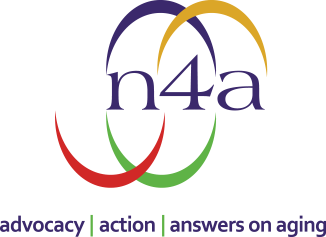 The National Association of Area Agencies on Aging (n4a)
The National Association of Area Agencies on Aging (n4a)Identifies and promotes the most up-to-date tools and strategies for engaging older adults in creativity. It is a clearinghouse for trends, resources, and best practices.
National Guild for Community Arts Education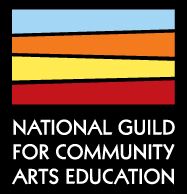 National Guild for Community Arts Education
National Guild for Community Arts EducationWorks to ensure that all people have opportunities to maximize their creative potential. It is increasingly focusing on creative aging and lifelong learning.
National Organization for Arts in Health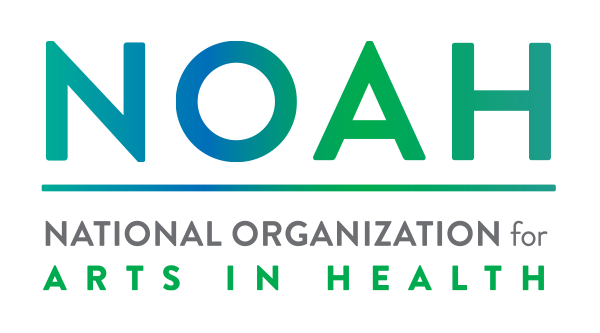 National Organization for Arts in Health
National Organization for Arts in HealthProvides transformational leadership to bring the field of arts in health together, and to move the field forward. Our focus is on the future of arts, health, and wellbeing; and creating tangible impact from our goals and initiatives.
Agriculture & Food
-
Agriculture and food sustain and enhance life, but aren’t equally accessible to everyone. The arts encourage healthy habits, empower access, and spur innovation to make more healthy food more possible.
The line between the arts, culinary arts, food, and agriculture can be blurry at times—a sign of how much creativity sits at the center of how, when, and where we produce, prepare, and consume the food that sustains us. Movements like Slow Food, Creative Agriculture, and ongoing efforts to tackle and dismantle food deserts and increase food equity all benefit from the infusion of arts, culture, and creativity.
The web of growers, packagers, preparers, and consumers that exists in American communities today are linked together. Food—its display and cooking—can be an artist's statement, and artists over centuries have used food to comment on politics, economy, and society. Even the way crops are set up and the care with which plants are raised not only for taste, but for beauty, and the specific connections that come when we enjoy a common meal all speak of the centrality of creativity in the enterprise.
The arts build awareness of our world by helping us visualize our relationship to the plants, animals, and other human beings that make our lives possible—and the food web is no exception.
- IMPACT POINTSCulture + food = heritage conservation and identity.
Research shows that a healthy food tourism movement develops and sustains regional identities, encourage agricultural diversification, enhances environmental awareness, and increase the social and cultural benefits associated with connection to traditional heritage.
Everett, S. and C. Aitchison (2010). https://www.tandfonline.com/doi/full/10.2167/jost696.0?scroll=top&needA…
Bringing the arts into the garden creates better K-12 students.Education acquired in the garden can increase students' overall academic performance. Students expand their ways of thinking or habits of mind to include curiosity, flexibility, open-mindedness, informed skepticism, creativity, and critical thinking.
Hughes, L., DiClaudio, D., Savoca, L. Learning Through the Garden: Cooperative Extension Fact Sheet FS1211. Rutgers New Jersey Agricultural Experiment Station. https://njaes.rutgers.edu/pubs/fs1211/
The presence of public art encourages more local gardening.In Seattle, community gardens with significant public artworks tend to be larger gardens with more members, and to have at least one annual community celebration.
Seattle Office of Arts & Culture and Kistler, Nicole (2013). agriculture: A Plan for Cultivating Arts and Culture in Seattle’s Urban Agriculture Sites. Retrieved 26 January 2018 at https://www.seattle.gov/documents/departments/arts/downloads/arts-plans…
Centering creativity in agriculture means more innovation.The growing "creative agriculture" movement, which unify agriculture and the creative arts, can increase innovation, integration with community, and satisfaction with agricultural projects.
Xuesong, X, et al (2013). Planning of Creative Agricultural Part in Tashang Village, Bazhou City, Hebei Province. Journal of Landscape Research (2013), 5(1-2): 19-22, 25. Retrieved 14 May 2018 from https://www.proquest.com/docview/1332847335?pq-origsite=gscholar&fromop…
The arts strengthen the lines between food production and consumption.The integration of arts and creative processes in thinking about food production and consumption stimulates the generation of new partnerships, ideas, and products.
Lee, A. and G. Wall. "Food Clusters: Toward a Creative Rural Economy." Martin Prosperity Institute. 6. Retrieved 14 May 2018 from http://martinprosperity.org/papers/Lee%20(2012)%20Food%20Clusters-forma….
- Examples of Practice
Art About Agriculture
Art About Agriculture, at the College of Agricultural Sciences at Oregon State University, encourages artists to investigate agriculture and natural resources themes for creating artworks.
Donna B. Trent, Gig Harbor, WA. Winter Wheat Growing. Photo by Peter Krupp. Courtesy of Oregon State University College of Agricultural Sciences.
Wormfarm
Wormfarm brings together farming, ecology, and the arts to rekindle the cultural and enhance the economic possibilities of its region by weaving the arts through rituals of planting and harvest.
Roadside Culture Stand. Created by Oxbow Studios for Wormfarm at Food for Thought Festival, Madison, WI.
Wallkill River School
The Wallkill River School has programs that mutually benefit farmers and artists. The programs have showed increased trust and interest between the local artists and farmers, increased foot traffic on farms, and an increase in spending between the two groups.
Dennis Fanton demonstrates for a plein air group at Phillies Bridge Farm, Gardner, 2014. Courtesy of Wallkill River School
Great Lakes Intertribal Food Summit
Great Lakes Intertribal Food Summit, Hopkins, MI The Jijak Foundation, which exists to preserve, perpetuate, and share the rich history, culture, arts, and living traditions of the Gun Lake Band of Pottawatomi Indians, convened the Great Lakes Intertribal Food Summit and engaged participants to learn about both traditional foods and modern production practices through a range of workshops and hands-on learning and sharing opportunities.
Participants at the Great Lakes Intertribal Food Summit learn about soil health and preparation.
CREATE: The Community Meal
CREATE: The Community Meal, commissioned from Seitu Jones by Public Art Saint Paul, aimed to lower barriers to making healthy food choices by gathering 2,000 people at a 1/2-mile-long table in the middle of Saint Paul's Victoria Street for a civic dinner table conversation about food access, food justice, and healthy eating.
Community gathers for a meal of food and conversation about food access, food for justice, and healthy eating. Photo by Andy King
- Reading List
agriCULTURE: A Plan for Cultivating Arts and Culture in Seattle's Urban Agricutlure Sites
Ths report reviews work in Seattle establishing the role that the arts play related to urban agricul-ture in order to foster a culture of urban agri-culture, and make lively places and healthy communities.
The Cultivated Landscape: An Exploration of Art and Agriculture
Craig Pearson and Judith Nasby discuss the evolution of how we think about agriculture, its use of the land and impact on landscape, and how landscape has been portrayed historically in art. They also offer a wider discussion on the role that science and economics have played in agricultural development and the parallels to changes in art form.
Food Is Culture
Elegantly written by a distinguished culinary historian, Food Is Culture explores the innovative premise that everything having to do with food—its capture, cultivation, preparation, and consumption—represents a cultural act. Even the "choices" made by primitive hunters and gatherers were determined by a culture of economics (availability) and medicine (digestibility and nutrition) that led to the development of specific social structures and traditions.
Food and Museums
Food and Museums is the first book to explore the diverse, complex relationship between museums and food. This edited collection features theoretical analysis from cultural historians, anthropologists, neuroscientists, and food studies scholars; interviews with museum professionals, artists and chefs; and critical case studies from a wide range of cultural institutions and museums to establish an interdisciplinary framework for the analysis of the role of food in museums.
Arts, Culture and Food Security in Southern Africa
International and regional studies have highlighted the integral relationship between culture and sustainable development. This can be extended into the relationship of arts and culture and food security. [Executive Summary]
- OrganizationsFarm Aid
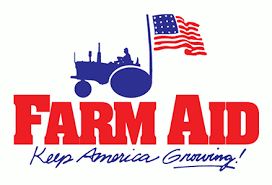 Farm Aid
Farm AidFarm Aid raises awareness about the loss of family farms and fundraises to keep farm families on the land.
National Institute of Food and Agriculture National Institute of Food and Agriculture
National Institute of Food and AgricultureNIFA, within the US Department of Agriculture, ensures scientific discoveries reach the people who can use them and partners with the Land-Grant University System and community partners to provide research, education, and extension programs.
Rural Advancement Foundation International Rural Advancement Foundation International
Rural Advancement Foundation InternationalRAFI cultivates markets, policies, and communities that sustain thriving, socially just, and environmentally sound family farms.
Southern Foodways Alliance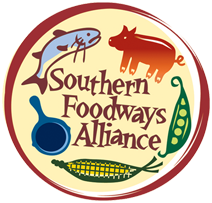 Southern Foodways Alliance
Southern Foodways AllianceSFA documents, studies, and explores the diverse food cultures of the changing American South.
Rural Policy Research Institute Rural Policy Research Institute
Rural Policy Research InstituteRural Policy Research Institute
The Rural Policy Research Institute (RUPRI) provides unbiased analysis and information on the challenges, needs, and opportunities facing rural America. RUPRI’s aim is to spur public dialog and help policymakers
Art
-
There are many types of art: theater, music, visual art, media art, literature, dance, opera, craft, and more. Regardless of the type, the arts transform people and communities every day.
While the arts have the potential to strongly integrate into many other aspects of a community, the truth is they also have a power all their own. Whether you're talking about singing in the shower, dancing in the club, or composing award-winning poetry, the hum of creativity infuses many of the activities we each do every day.
Millions of people in the United States receive income from their art-making, and millions more attend an arts event each year. At the same time, companies can boost their business with creativity and outperform their peers in revenue growth.
Considering art means considering our history, our heritage, our politics, the way we learn—in short, the arts are part of everything, and play a role in all aspects of the human experience.
- Impact PointsCreative companies are 3x as likely to outperform their peers.
Companies that foster creativity among their workforce are 3.5 times more likely to outperform their peers on key indicators of success.
van Keeken, P. (2015, April 23). How creativity impacts business results. Creative Connection. Retrieved 16 May 20123, from https://www.americansforthearts.org/by-program/reports-and-data/legisla…
73% said the arts provide meaning.The arts provide meaning in our lives. In a 2016 public opinion poll, 73% of Americans said that the arts provided meaning in their lives and were a positive experience in a troubled world.
Americans for the Arts. (2016). What Americans Believe About the Arts. Retrieved 16 May 2023 from https://www.americansforthearts.org/sites/default/files/images/2016/res…
10 weeks of arts participation to a stronger brain.The arts literally make your brain grow. Participating in the visual arts for as little as 10 weeks has been shown to increase the resiliency and neural connectivity of the brain, making for increased self-awareness and better memory processing.
Bolwerk, A. et al. How Art Changes Your Brain: Differential Effects of Visual Art Production and Cognitive Art Evaluation on Functional Brain Connectivity. PLOS ONE, 2014, 9(7). Retrieved 16 May 2023 from
https://journals.plos.org/plosone/article?id=10.1371/journal.pone.01010…The arts improve your critical thinking by up to 18%.Just looking at art improves your ability to think critically. Students from high-poverty schools, according to one study, experience an 18% effect-size improvement in critical thinking about art after a 1 hour tour of a museum.
Greene, J. (2014). The Educational Value of Field Trips. Education Next. Retrieved 16 May 2023 https://www.educationnext.org/the-educational-value-of-field-trips/
45-55% decrease in risk of cognitive decline.Engaging in both craft- and social-based artforms has been shown to decrease your risk of developing cognitive impairment and decline as you get older.
merican Academy of Neurology (2015). Can arts, crafts and computer preserve your memory? Retrieved 16 May 2023 from https://www.aan.com/PressRoom/Home/PressRelease/1363
- Examples of Practice
Innovation Institute, McColl Center for Art + Innovation
The Innovation Institute provides programs for individuals, teams, and organizations to explore and engage in the act of art to deepen their understanding of the creative process and learn how to leverage their own creativity and the creativity of others.
Innovation Institute participants being curiously creative. Photo courtesy of McColl Center for Art + Innovation.
MIT Center for Art, Science & Technology (CAST)
CAST is a cross-school initiative that is a catalyst for artist residencies and collaborative projects involving art, science, and technology, including performing and visual arts programs, research projects for artists working with science and engineering labs, and educational programs and publications.
“Generative drawing” critique, 4.022 Architectural Design Fundamentals, 2015. Photo: S. Lacey.1q2. Courtesy MIT Center for Art, Science & Technology.
(Out)Laws & Justice
(Out)Laws & Justice uses theater and interdisciplinary history to move students ages 11–16 to examine the roots of violence and develop conflict-resolution skills to deal with disputes.
Students learning about their world through theater about outlaws in the old west. Image courtesy of (Out)Laws & Justice and Lisa Citron.
UC Santa Cruz Digital Arts New Media (DANM)
The DANM two-year master’s of fine arts program emphasizes artistic and technological innovation, interdisciplinary collaboration, and social action. Faculty closely mentor emerging artists to become deep thinkers, artistic innovators, and responsible leaders.
Sonic Mirror robot by artist Scott Tooby, 2017. Photo by Steve Kurtz.
- Reading List
Cultural Perspectives in Civic Dialogue: Case Studies from Animating Democracy
Cultural Perspectives in Civic Dialogue shares the efforts of cultural organizers who are skilled in working deeply within and across cultures to understand important cultural considerations in arts-based civic dialogue work. Their endeavors illuminate how cultural norms mediate public space and participation, as well as how the choices regarding art forms and dialogue approaches can support or discourage civic participation of various cultural groups. In the King Kamehameha I Statue Conservation Project, rural Hawai’ian residents deliberated how best to conserve a statue of King Kamehameha I and, in the process, deepened understanding of the links between cultural identity, heritage preservation, and current issues of land and economic development. The Center for Cultural Exchange’s African in Maine program supported Sudanese, Congolese, and Somali immigrant and refugee communities in their own cultural programming interests to reveal the diversity and conflicts within and across divided African communities, as well as between Africans and the wider community of “Mainers.” The Esperanza Peace and Justice Center’s ongoing Arte es Vida program addresses issues of cultural equity and democracy related to San Antonio’s Chicano and Mexicano communities. It acts on the idea of cultural grounding - the concept that, in the context of a culturally dominant society, a strong sense of selfhood and identity rooted in cultural practice is necessary to empower marginalized communities toward active participation in public dialogue.
Psychology of Aesthetics, Creativity, and the Arts
This paper explores the psychology behind aesthetics, the concept of creativity, and art making and consumption.
Life as Art: Aesthetics and the Creation of Self
Life as Art looks at how to integrate the aesthetic emphases of meaning, liberation, and creativity into one’s daily life.
Aesthetics: Philosophy of the ArtsThis video is part of the series Great Ideas of Philosophy from Films Media Group. It offers insights into the interactions between artist, artwork, and audiences as they have evolved over the centuries.
ColossalColossal is a visual art, design, and culture blog that explores art and other aspects of visual culture.
- OrganizationsInternational Interdisciplinary Artists Consortium (IIAC)International Interdisciplinary Artists Consortium (IIAC)
IIAC is a network of performing and creative artists, educators, and producers working across artistic disciplines and continental divides.
The Healing Power of ART & ARTISTS The Healing Power of ART & ARTISTS
The Healing Power of ART & ARTISTSThe Healing Power of ART & ARTISTS (HPAA) is a growing global community of artists, advocates, and writers dedicated to raising awareness about how art serves as a positive catalyst for enhancing the well-being of individuals, society, and the environment. It believes that art has the power to heal, inspire, provoke, challenge, and offer hope.
National Endowment for the Arts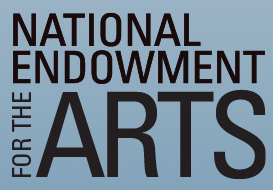 National Endowment for the Arts
National Endowment for the ArtsEstablished by Congress in 1965, the NEA is the independent federal agency whose funding and support gives Americans the opportunity to participate in the arts, exercise their imaginations, and develop their creative capacities.
Center for the Arts in Society (CAS) Center for the Arts in Society (CAS)
Center for the Arts in Society (CAS)CAS is a collaborative effort of artists and scholars affiliated with Carnegie Mellon University dedicated to the exploration of the arts as they relate to and involve the larger society.
The Arts in Society Research Network The Arts in Society Research Network
The Arts in Society Research NetworkFounded in 2000, the Arts in Society Research Network offers an interdisciplinary forum for discussion of the role of the arts in society.
Civic Dialogue
-
Civic dialogue is when communities discuss issues, policies, and challenges in people’s lives, communities, and society. The arts are a powerful facilitator for positive dialogue and engagement.
When individual and collective actions identify and address issues of public concern, we’ve entered into a civic dialogue. As engaged citizens, we volunteer in areas of need, work with others to solve a problem, or interact with our government institutions. As engaged citizens, we develop the knowledge, skills, values, and motivation to make a difference in the civic life of our communities.
Communities in which residents socialize with and trust each other have higher livability scores than communities with lower social trust, and the arts are a driver in building that trust. In addition, cultural participation leads to wider community participation and to increased volunteerism and increased tolerance—all of which are key to civic engagement. It also increases involvement in local issues and projects that promote community health.
The role of the arts in civic processes manifests in many different directions, but focuses on the power of the arts to bridge gaps in understanding, offer new and innovative ways of thinking about challenges, and to catalyze change. The arts provide a focal point for dialogue, spark individuals to action, and reduce barriers to participation.
- Impact Points86% of arts participants want to get more involved in civic issues.
Arts activities increase residents’ interest in getting involved in local issues and projects, including discussions of infrastructure. 86% of participants want to be involved in future projects and people living where projects occurred were more than twice as likely to be civically engaged as those whose blocks did not have projects.
Nicodemus, A., Engh, R., & Mascaro, C. (2016). Adding it Up: 52 Projects by 30+ Artists in 4 Neighborhoods. Metris Arts Consulting. Retrieved 20 January 2018 from https://issuu.com/metrisarts/docs/adding-it-up-final-draft-web
20% more community satisfaction with the arts.The arts drive trust, and trust drives community satisfaction. Levels of civic engagement predict the quality of community life and residents' happiness better than education or income. In the communities with the highest trust, 52% gave their community a top rating as a place to live; in the communities with the lowest levels of social trust, only 31% felt positively.
Community Foundation Silicon Valley. (2001). The Social Capital Community Benchmark Survey. Retrieved 16 May 2023 from https://ropercenter.cornell.edu/featured-collections/2000-social-capita…
Students who participate in the arts are 40% more likely to have diverse friends.Participation in arts activities increases tolerance. 12th graders who participate in the arts are 40% more likely to have friends from different racial groups and 29% less likely to feel that it is ok to make a racist remark.
Catterall, J., Dumais, S., & Hampden-Thompson, G. (2012). The Arts and Achievement in At-Risk Youth: Findings from Four Longitudinal Studies. (Research Report #55). National Endowment for the Arts. Retrieved 20 January 2018 from https://www.arts.gov/sites/default/files/Arts-At-Risk-Youth.pdf
Groups built around cultural experiences score highest on trust and tolerance.Research into how different formations of people in associations work reveals that cultural groups scored highest on trust and second-highest on optimism and tolerance.
Stolle, D. and Rochon, T. (1998) “Are all associations alike? Member diversity, associational type and the creation of social capital”, American Behavioral Scientist 42(1), 47–65. Retrieved 16 May 2023 from https://journals.sagepub.com/doi/10.1177/0002764298042001005
The arts bridge language barriers and unite disparate groups.Children from immigrant and resident populations cohere best when barriers around language come down. Research shows that art making provides a common bridge and increases friendship, empathy, and mutual trust.
Lee, D. How the Arts Generate Social Capital to Foster Intergroup Social Cohesion. The Journal of Arts Management, Law, and Society, 43(1) 4-17. Statistics retrieved 16 May 2018 from summary found at https://culturecase.org/research/2014/04/using-the-arts-to-help-social-…
Young arts participants are 2x as likely to plan to register to vote.Young people engaged in participatory arts are highly motivated to vote. A study of young artists found that 84% of participants were likely or very likely to vote when eligible/in the next election, compared to just 44% of 18-24 year old who voted in the previous election.
Flinders, M. & Cunningham, M. (2014). Participatory Arts and Political Engagement [Electronic version]. UK: Arts & Humanities Research Council. Retrieved 15 May 2023 from https://www.americansforthearts.org/sites/default/files/AHRC_Cultural_V…
Arts participation unites generations, reduces fear, and empowers citizens.Arts participation has a positive effect on social cohesion by bringing generations together, encouraging partnerships and intercultural understanding, reducing fear of crime, and fostering organizational skills. People report feeling more in control of their lives and more activated as citizens.
Jeannotte, S. "Singing Alone? The Contribution of Cultural Capital to Social Cohesion and Sustainable Communities." The International Journal of Cultural Policy, 9(1) 35-49. Retrieved 16 May 2023 from https://www.tandfonline.com/doi/full/10.1080/1028663032000089507?scroll…
- Examples of Practice
City Council Meeting
City Council Meeting is performed participatory democracy: a performance of empathy, democracy, and power created fresh in each city where it is presented, with local artists, activists, government officials, and other citizens.
Courtesy of Aaron Landsman, City Council Meeting. Photo by David A. Brown / dabfoto creative.
Mural Arts
Mural Arts is the nation's largest public art program, dedicated to the belief that art ignites change. It is the home of the Porch Light project, which centers on improving community health through public art.
Curing Community © 2017 City of Philadelphia Mural Arts Program / Cesar Viveros, Philadelphia Pharmacy, Front Street and Lehigh Avenue. Photo by Steve Weinik.
Urban Bush Women
Urban Bush Women seeks to bring the untold and under-told histories and stories of disenfranchised people to light through dance. It galvanizes artists, activists, audiences, and communities through performances, artist development, education, and community engagement.
Urban Bush Women. Hair & Other Stories. Photo by Hayim Heron.
Conflict Kitchen
Conflict Kitchen serves cuisines from countries with which the United States is in conflict. It integrates food culture with programming that helps diners connect with the experiences of those often misrepresented and marginalized by the government and mass media.
Staff engaging with customers during Iranian version of Conflict Kitchen. Courtesy of Conflict Kitchen.
- Reading List
The Arts and Civic Engagement: Involved in Arts, Involved in Life
The Arts and Civic Engagement demonstrates with statistically reliable data that arts participation overwhelmingly correlates with positive individual and civic behaviors. Put simply, Americans who read books, visit museums, attend theater, and engage in other arts are more active in community life than those who do not.
The Arts and Civic Engagement: Strengthening the 21st Century Community
A Report on the Proceedings of the Americans for the Arts National Arts Policy Roundtable held September 25-27, 2008 at Sundance Preserve looks at trends and best practices in arts-based civic engagement and makes recommendations to the field.
Hearts and Minds: The Arts and Civic Engagement
This report is an inquiry into one utilitarian role: the relationship between the arts and what social scientists generally refer to as civic or community engagement.
Participatory Art-Making and Civic Engagement
This is one of a series of Animating Democracy papers looking at different segments of the arts-for-change field.
Civic Dialogue, Arts & Culture: Findings from Animating Democracy
Civic Dialogue, Arts & Culture explores the power of the arts and humanities to foster civic engagement while advancing possibilities for arts and humanities organizations to be vital civic as well as cultural institutions. From 2000 to 2004, Americans for the Arts, with support from the Ford Foundation, implemented Animating Democracy, an initiative to foster artistic activities encouraging civic dialogue on important contemporary issues. This book examines the experiences of 37 arts and humanities projects, realized by a wide range of cultural organizations. These projects explored such issues as race relations, economic inequity, gentrification, school violence, the role of same-sex couples in society, and the influx of immigrants and refugees in communities, among others. Civic Dialogue, Arts & Culture contributes to deepening understanding of the artistic, civic, and organizational dimensions of the work; dialogue approaches; common challenges; as well as the principles, theory, and practices that underpin effective work.
- OrganizationsArts and Democracy Project
 Arts and Democracy Project
Arts and Democracy ProjectConnects artists, cultural organizers, and activists who wouldn't otherwise know each other and creates the connective tissue and generative environment needed for cross sector collaboration to succeed.
Animating Democracy Animating Democracy
Animating DemocracyA program of Americans for the Arts that that brings national visibility to arts for change work, builds knowledge about quality practice, and creates useful resources.
Arts Works for Change Arts Works for Change
Arts Works for ChangeArt Works for Change strives to harness the transformative power of art to promote awareness, provoke dialogue, and inspire action through art exhibitions. Focused on issues of serious concern—human rights, social justice, gender equity, environmental stewardship, and sustainability—in creative, inspiring, and ultimately positive ways by engaging with audiences fully, creating experiences that are at once emotional, intellectual, and sensory.
Working Films Working Films
Working FilmsWorking Films links nonfiction film to cutting edge activism. The goal is to leverage the storytelling power of documentary film to advance the efforts of social, economic, human and civil rights, and environmental justice. Working Films offers consultation, strategic planning for alternative distribution, website and social media development, and complete campaign management services to filmmakers to ensure the content of nonfiction media truly meets the intention for change.
Institute on the Arts and Civic Dialogue at New York University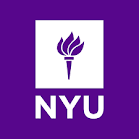 Institute on the Arts and Civic Dialogue at New York University
Institute on the Arts and Civic Dialogue at New York UniversityIACD, founded by Anna Deavere Smith, exists to support artists whose works address social justice and related themes, arts education, and the creation of meeting spaces for artists, scholars, and audiences to exchange ideas.
Community Cohesion
-
The cohesion of a community is what binds residents to each other and to their locality. Community cohesion is vital in creating a common vision for a collective future. When differences arise or cohesion weakens, the arts help bring people together.
A community is at its best when it feels coherent, collaborative, and safe. Social tensions created by an influx of new people, economics, environment, or any number of factors can disturb citizens’ sense of self and stress the threads that bind them. Arts participation contributes to social cohesion by reducing isolation, encouraging cooperation, and building community networks.
Involvement in the arts helps build individual identity, as well as group solidarity. Arts participation helps to resolve conflicts and increase tolerance and cross-cultural understanding by bringing together people from different backgrounds and providing opportunities to recognize the contribution of many segments of the community.
Arts participation crosses barriers of social class and ethnicity and leads to residents learning about each other and other neighborhoods. People involved in the arts meet more people, and participatory arts projects make marginalized groups more visible and promote positive community connections.
- Impact Points91% meet new people through the arts.
9 out of 10 arts participants report meeting new people and making new friends through their arts experiences.
Stern, M. & Seifert, S. (2001). Culture Builds Communities Evaluation Summary Report. Philadelphia: Penn School of Social Policy & Practice, University of Pennsylvania. Retrieved 16 May 2023 from https://core.ac.uk/download/pdf/214208983.pdf
80% of people explore new places for the arts.Arts participation crosses barriers of social class and ethnicity. A Philadelphia study showed that 80% of participants traveled to another neighborhood to take part in arts activities.
Stern et al., 2001.
40% feel more positive about their community after taking part in the arts.Participatory arts projects celebrate local culture and heritage, making marginalized groups more visible and promoting positive community connections. In the UK, 40% of participants felt more positive about where they lived after participating in an arts activity.
Stern et al., 2001.
The arts bridge language barriers and unite disparate groups.Children from immigrant and resident populations cohere best when barriers around language come down. Research shows that art making provides a common bridge and increases friendship, empathy, and mutual trust.
Lee, D. How the Arts Generate Social Capital to Foster Intergroup Social Cohesion. The Journal of Arts Management, Law, and Society, 43(1) 4-17. Statistics retrieved 16 May 2018 from summary found at https://culturecase.org/research/2014/04/using-the-arts-to-help-social-…
Groups built around cultural experiences score highest on trust and tolerance.Research into how different formations of people in associations work reveals that cultural groups scored highest on trust and second-highest on optimism and tolerance.
Stolle, D. and Rochon, T. (1998) “Are all associations alike? Member diversity, associational type and the creation of social capital”, American Behavioral Scientist 42(1), 47–65. Retrieved 16 May 2023 from https://journals.sagepub.com/doi/10.1177/0002764298042001005
Arts participation unites generations, reduces fear, and empowers citizens.Arts participation has a positive effect on social cohesion by bringing generations together, encouraging partnerships and intercultural understanding, reducing fear of crime, and fostering organizational skills. People report feeling more in control of their lives and more activated as citizens.
Jeannotte, S. "Singing Alone? The Contribution of Cultural Capital to Social Cohesion and Sustainable Communities." The International Journal of Cultural Policy, 9(1) 35-49. Retrieved 16 May 2023 from https://www.tandfonline.com/doi/full/10.1080/1028663032000089507?scroll…
- Examples of Practice
Sioux Falls Mural Project
The mural located in Whittier—a working-class neighborhood of Native Americas as well as settlers from across the globe—shows the neighborhood working together to care for its natural beauty, the education of its youth, and the welfare of its residents.
The World Comes to Whittier. Courtesy of the Sioux Falls Arts Council.
CREATE: The Community Meal
CREATE: The Community Meal, commissioned from Seitu Jones by Public Art Saint Paul, aimed to lower barriers to making healthy food choices by gathering 2,000 people at a 1/2-mile-long table in the middle of Saint Paul's Victoria Street for a civic dinner table conversation about food access, food justice, and healthy eating.
Community gathers for a meal of food and conversation about food access, food for justice, and healthy eating. Photo by Andy King
Irrigate
Based on a three-year initiative created by Springboard for the Arts with the City of Saint Paul and Twin Cities Local Initiatives Support Corporation and in response to disruptive construction of a light rail line through the urban core, Irrigate is a community development strategy that mobilizes the skills and creativity of local artists to create innovative, meaningful, authentic solutions to local challenges.
Irrigate closing celebration. Credit: Sean Smuda.
- Reading List
Culture Builds Community Evaluation Report
This evaluation report from the Culture Builds Communities Project reviews a four-year comprehensive community grant program. The goals of this program were to both increase participation in the arts and to foster community building through the arts and culture.Arts & Intra-Community Strength
Excerpted from "Arts & America: Arts, Culture, and the Future of America’s Communities". This essay explores the changing definition of "community" and the role the arts could play to have a positive impact on that change over the next 10 to 15 years. The full book of essays can be purchased in Americans for the Arts online store.
How the Arts Generate Social Capital to Foster Intergroup Social Cohesion
Through the case study of the Guernica Peace Mural Project (GPMP) in Columbus, Ohio, which involved American and Somali groups, I explore how participatory community arts generate social capital to promote intergroup social cohesion.
Informal Arts: Finding Cohesion, Capacity, and Other Benefits in Unexpected Places
A team with the Chicago Center for Arts Policy found that the informal arts help to build both individual identify and group solidarity.
Use or Ornament? The Social Impact of Participation in the Arts
Report offers an account of evidence found of social impacts arising from participation in the arts,a nd some methos used in the research. Report is targeted for policy makers in the arts and social fields.
- OrganizationsEuropean Commission
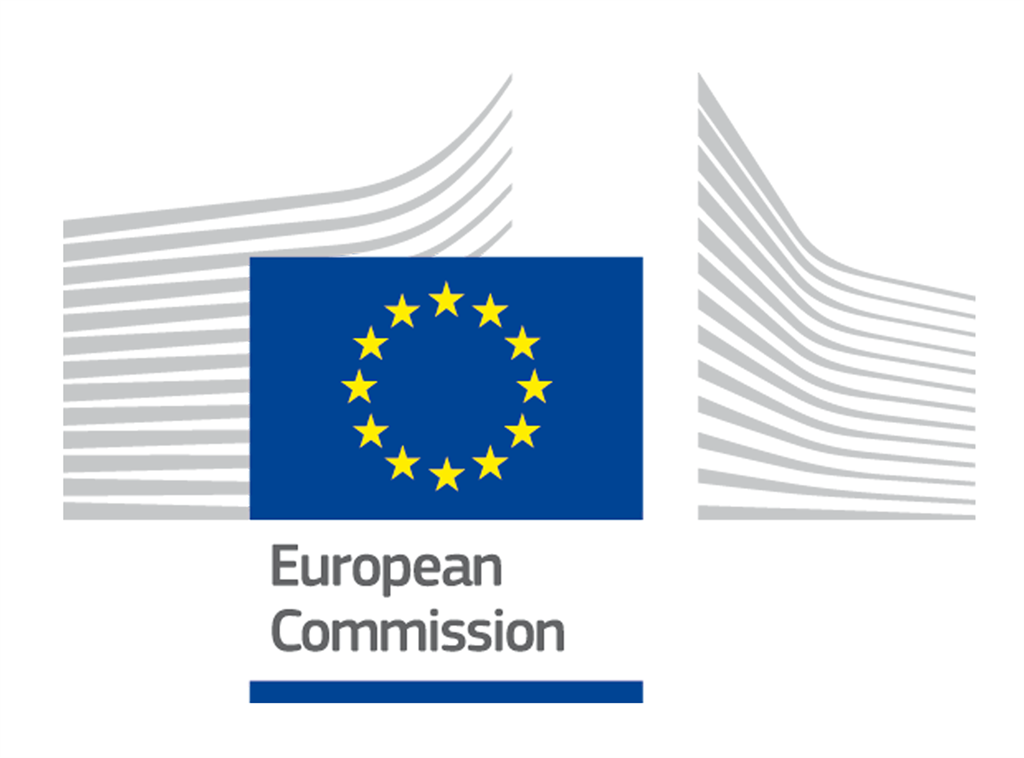 European Commission
European CommissionThe website has a number of resources on best practices around arts and community cohesion and development.
Nottingham Arts and Community Cohesion Working Group Nottingham Arts and Community Cohesion Working Group
Nottingham Arts and Community Cohesion Working GroupThis working group, housed at the University of Nottingham, has a website with a variety of arts and community cohesion case studies and resources.
Social Impact of the Arts Project, University of Pennsylvania Social Impact of the Arts Project, University of Pennsylvania
Social Impact of the Arts Project, University of PennsylvaniaThe Social Impact of the Arts Project (SIAP) is a research group at the University of Pennsylvania, School of Social Policy & Practice in Philadelphia, PA convened to ask questions and develop methods to explore the impact of the arts and culture on urban communities.
Tandem Tandem
TandemTandem is a cultural collaboration program that strengthens civil society in Europe and neighboring regions.
Chicago Center for Arts and Technology (CHICAT) Chicago Center for Arts and Technology (CHICAT)
Chicago Center for Arts and Technology (CHICAT)CHICAT works to elevate the talents, culture, and community through the arts and technology, in the belief that united communities are stronger and have more opportunity and vitality.
Community Development
-
Community development brings resources together to build healthier, more vibrant, equitable neighborhoods. The arts break down barriers, encourage participation, and spark innovation—all necessary characteristics for communities to expand and flourish.
Arts-based community development (sometimes called creative placemaking)—and the deep integration of arts and culture into communities’ pursuits of healthier, more vibrant, more equitable places—has a long history in the United States that stretches back thousands of years to the first Native American tribes and laces through post-colonization history as well.
Artists, arts organizations, and artistic activities in general play can play a valuable role in the development and long-term health and sustainability of our communities. Research shows that communities with a vibrant cultural scene are more desirable to live in, have greater economic stability, and attract a more diverse and educated work force.
Often when a community struggles with a social concern, arts projects can foster cooperative dialogue and bring about solutions and change. The arts drive an increased tax base, stronger social networks and community cohesion, reduced health risks, higher empathy, and more community pride. These things, together, make it possible for communities to progress toward their goals.
- Impact Points86% of arts participants want to get more involved in civic issues.
Arts activities increase residents’ interest in getting involved in local issues and projects, including discussions of infrastructure. 86% of participants want to be involved in future projects and people living where projects occurred were more than twice as likely to be civically engaged as those whose blocks did not have projects.
Nicodemus, A., Engh, R., & Mascaro, C. (2016). Adding it Up: 52 Projects by 30+ Artists in 4 Neighborhoods. Metris Arts Consulting. Retrieved 20 January 2018 from https://issuu.com/metrisarts/docs/adding-it-up-final-draft-web
20% more community satisfaction with the arts.The arts drive trust, and trust drives community satisfaction. Levels of civic engagement predict the quality of community life and residents' happiness better than education or income. In the communities with the highest trust, 52% gave their community a top rating as a place to live; in the communities with the lowest levels of social trust, only 31% felt positively.
Community Foundation Silicon Valley. (2001). The Social Capital Community Benchmark Survey. Retrieved 16 May 2023 from https://ropercenter.cornell.edu/featured-collections/2000-social-capita…
The arts make people love where they live.Love for your community leads to economic growth. Data from a three-year study show a significant link between resident attachment and local GDP growth, with the arts as a critical component.
John S. and James L. Knight Foundation. (2010, November 15). Got Love for Your Community? It May Create Economic Growth, Gallup Study Says. (Press Release). Retrieved 28 January 2018 from https://www.knightfoundation.org/press/releases/got-love-for-your-commu…
Creativity in community can increase community revenue by up to 105%.Art and community development results in greater tax revenues. The downtown Phoenix creativity hub yielded a 105% increase in tax receipts, compared to a city-wide decline of 1.04%.
Waits, M. (2014). Five Roles for Arts, Culture, and Design in Economic Development [Electronic version]. Community Development Invest Review: Creative Placemaking, 10(2). Retrieved 16 May 2023 from https://www.americansforthearts.org/sites/default/files/five-roles-for-…
Arts-rich neighborhoods are 1.6x more connected.Art and community development strengthens social networks. Residents living on a block where such projects took place were 1.6 times more likely to report they felt more connected to the neighbors.
Nicodemus, A., Engh, R., Mascaro, C. & Metris Arts Consulting. (2016). Adding It Up: An Evaluation of Arts on Chicago & Art Blocks Executive Summary, 5 [Electronic version]. Metris Arts Consulting. Retrieved 28 January 2018 at https://metrisarts.com/wp-content/uploads/2014/05/adding-it-up-executiv….
When arts activities increase, home values, population, and test scores go up 5-10%.Neighborhoods with more arts activities see increases in housing, population, and school test scores along with a decrease in crime. A five-year study of low-income Chicago neighborhoods shows 5-10% improvements in each category in neighborhoods with high arts activities.
John S. and James L. Knight Foundation. (2010)
Arts participants are 40% more likely to have friends from different racial groups.Participation in arts activities increases inter-community friendship, which is crucial to community dialogue. Twelfth graders who participated in the arts are 40% more likely to have friends from different racial groups and 29% less likely to feel that it is ok to make a racist remark.
Catterall, J., Demais, S., Hampden-Thompson, G. (2012). The Arts and Achievement in At-Risk Youth: Findings from Four Longitudinal Studies (Research Report #55) [Electronic version]. National Endowment for the Arts. Retrieved 16 February 2018 from https://www.arts.gov/file/2684
- EXAMPLES OF PRACTICE
Ashé Cultural Arts Center
Ashé, a project of Efforts of Grace, Inc., is a community cultural arts center deeply rooted in Central City New Orleans that serves as a hub for people of African descent who live there.
Community members at Ashé Cultural Arts Center, New Orleans, LA.
Connect the Lots
Connect the Lots uses arts, cultural, and recreational activities to activate vacant and underutilized city spaces. The activities visually connect neighborhoods, engage the community, and attract visitors.
I Love Camden. Roosevelt Plaza Park, Camden, NJ. Courtesy of Coopers Ferry Partnership.
Porch Light
This joint collaboration between Mural Arts, the City of Philadelphia's Department of Behavioral Health, and Intellectual Disability Services focuses on achieving universal health and wellness among Philadelphians through meaningful works of public art.
Sanctuary © 2016 Mural Arts Philadelphia / James Burns. Photo by Steve Weinik.
Irrigate
Based on a three-year initiative created by Springboard for the Arts with the City of Saint Paul and Twin Cities Local Initiatives Support Corporation and in response to disruptive construction of a light rail line through the urban core, Irrigate is a community development strategy that mobilizes the skills and creativity of local artists to create innovative, meaningful, authentic solutions to local challenges.
Irrigate closing celebration. Credit: Sean Smuda.
Opa-locka Community Development Corporation
OLCDC works with the residents of the distressed areas of Opa-locka and North Dade County to improve access to housing, health, education, employment, safety, and culture, often utilizing art-based strategies.
Community Paint Day, April 2015. Photo by Walter Hood. Courtesy of OLCDC.
- READING LIST
Arts & America: 1780–2015
First essay in the book Arts & America: Arts, Culture, and the Future of America’s Communities featuring an introduction by Americans for the Arts CEO Robert L. Lynch. The full book can be purchased in Americans for the Arts online store.
Culture Builds Community Evaluation Report
This evaluation report from the Culture Builds Communities Project reviews a four-year comprehensive community grant program. The goals of this program were to both increase participation in the arts and to foster community building through the arts and culture.Arts and Culture Planning: A Toolkit for Communities
This toolkit is intended to help municipalities incorporate arts and culture into their communities, enhance livability by improving quality of life, and become more attractive places to live, work, and play.
Monograph: Effective Community Arts Development: Fifty Years, Fifty Tips
Community Arts Councils, Inc. (CACI) is the ancestor of today’s Americans for the Arts and as we look ahead to our 50th anniversary in 2010, we want to take this occasion to reflect upon effective arts development as we celebrate this movement that has grown from about 400 local arts agencies in 1960 to an estimated 5,000 today.
Monograph: Effective Community Arts Development: Fifty Years, Fifty Tips
Community Arts Councils, Inc. (CACI) is the ancestor of today’s Americans for the Arts and as we look ahead to our 50th anniversary in 2010, we want to take this occasion to reflect upon effective arts development as we celebrate this movement that has grown from about 400 local arts agencies in 1960 to an estimated 5,000 today.
Beyond the Building: Performing Arts and Transforming Place
In 2014, the National Endowment for the Arts hosted Beyond the Building to better understand how performance-based organizations transform places through their artistic practices.
How Arts and Cultural Strategies Enhance Community Engagement and Participation
This is one of several briefing papers created by the APA's Planning and Community Health Research Center on how planners use arts and culture to achieve economic, social, environmental, and community goals.
How Arts and Cultural Strategies Create, Reinforce, and Enhance Sense of Place
This is one of several briefing papers created by the APA's Planning and Community Health Research Center on how planners use arts and culture to achieve economic, social, environmental, and community goals.
- OrganizationsArtPlace America
 ArtPlace America
ArtPlace AmericaArtPlace was a creative placemaking hub that includes a variety of resources on key areas of focus.
Our Town/How to Do Creative Placemaking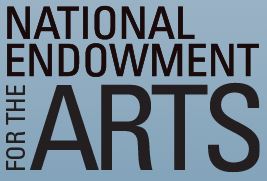 Our Town/How to Do Creative Placemaking
Our Town/How to Do Creative PlacemakingThe program supports creative placemaking projects that help transform communities through strategies that incorporate arts, culture, and design. The program also offers creative placemaking resources.
Local Initiatives Support Corporation (LISC)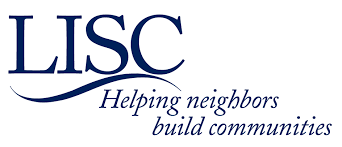 Local Initiatives Support Corporation (LISC)
Local Initiatives Support Corporation (LISC)LISC supports projects that revitalize communities and bring greater economic opportunity to residents. It works with community-based partners to invest in housing, business, jobs, education, safety, and health.
Social Impact of the Arts Project, University of Pennsylvania Social Impact of the Arts Project, University of Pennsylvania
Social Impact of the Arts Project, University of PennsylvaniaThe Social Impact of the Arts Project (SIAP) is a research group at the University of Pennsylvania, School of Social Policy & Practice in Philadelphia, PA convened to ask questions and develop methods to explore the impact of the arts and culture on urban communities.
Economic Development
-
Economic development seeks to create economic well-being for a community. The arts generate hundreds of billions of dollars in positive economic impact each year.
Economic development results in economic growth and improved quality of life in our communities. The economic health of our communities—which means the economic health and security of each individual as well as the for-profit and not-for-profit businesses and institutions within that community—is crucial to our collective success, happiness, and progress. Creative and artistic solutions are central to building inclusive creative economies that provide opportunity for all people to reach their individual potential.
The creative economy is an economic ecosystem of for-profit and not-for-profit creative industries, artists and arts workforce, culture-bearers, educators, entrepreneurs, vendors, policy makers, funders and other stakeholders that work together to produce and distribute creativity- and arts and culture-based goods and services. Economic activity driven through the creative economy depends on individuals and organizations using their creativity to drive jobs, revenue, community resources, and cultural engagement.
Arts and culture accounts for 4.4% of the nation’s economy ($1.02 trillion). Globally, the U.S. is a major exporter of arts and cultural commodities. The arts are a proven economic accelerator that increase both arts and non-arts jobs alike. They fuel equitable economic development and vitality at the national, state and local levels and increase a community’s competitiveness to attract tourists and an innovative creative economy workforce.
Economic arguments have been the backbone of much of the arts advocacy and policy progress this country’s arts and culture sector has made over the past several decades. While just one slice of the total community pie, the economic health and vitality of a community is something that is prioritized by most decision-makers and the general public. Demonstrating that artistic and cultural creativity as a human-based, primary driving force towards impact, empowerment, and economic and social justice in lives across the country is critically important to the sector’s funding success.
- Impact PointsArts and cultural economic activity accounts for 4.4% of the total U.S. GDP.
Research from the U.S. Bureau of Economic Analysis shows that the arts drive 4.4% of the U.S. GDP. Between 2020 and 2021, the total economic value added by arts and cultural industries grew by 13.7 percent.
Bureau of Economic Analysis. Retrieved October 11, 2023 from https://www.arts.gov/news/press-releases/2023/new-data-show-economic-ac…
The arts support nearly 5 million jobs.The total number of arts and cultural jobs for the nation was 4.92 million.
Bureau of Economic Analysis. Retrieved March 2023 from https://www.arts.gov/news/press-releases/2023/new-data-show-economic-ac…
20% increase in property valuesA cultural organization in a community has been shown to increase nearby residential property values by up to 20%.
Parkinson, A., Kahn, G., Peck, E., & Cohen, R. (2017). Business Contributions to the Arts, 2017 Edition (Research Report R-1630-17-RR) [Electronic version]. The Conference Board. Retrieved 29 January 2018 from http://www. americansforthearts.org/sites/default/files/TCB-Business-Contribution-to-theArts-2017.pdf
53% of businesses say the arts are a good bet.Of businesses that participated in a recent survey on business support for the arts, 53% said that business partnerships with the arts support creative thinking and problem solving.
Waits, M. "Five Roles for Arts, Culture, and Design in Economic Development. Community Development Investment Review. Retrieved 15 May 2018 from https://www.americansforthearts.org/node/100908
The arts spark growth, ensure innovation, and keep businesses competitive.Research into the role of the arts in economic development highlight five ways the arts work: they creative a fast-growth, dynamic business sector, they help mature industries become more competitive, they provide critical ingredients for innovative places, they catalyze community revitalization, and the deliver a better prepared workforce.
Waits, M. "Five Roles for Arts, Culture, and Design in Economic Development. Community Development Investment Review. Retrieved 15 May 2018 from https://www.frbsf.org/community-development/files/five-roles-for-arts-c…
The arts create economic growth where there is otherwise decline.Art and community development results in greater tax revenues. In one time period, the downtown Phoenix creativity hub yielded a 105% increase in tax receipts, compared to a city-wide decline of 1.04%.
Waits, M. "Five Roles for Arts, Culture, and Design in Economic Development. Community Development Investment Review. Retrieved 15 May 2018 from https://www.americansforthearts.org/node/100908
- Examples of Practice
Cultural Connections
The city used public art to help revitalize Roosevelt Row during the 2008 financial crisis. It resulted in increased pedestrian traffic and partnerships between city organizations and businesses, along with blankets for the homeless.
First Friday, May 2017. Photo by Kyle Gilbert. Courtesy of Roosevelt Row.
Office of Arts, Culture, and the Creative Economy
Philadelphia created the first percent-for-art program, which requires developers to commission public art for their projects. In 2001, percent-for-art commissions totaled $2.8 million.
Government of the People, 1976, by Jacques Lipchitz. Municipal Services Building, Philadelphia. Photo by Matthew Godfrey.
Triad Stage
Once Triad Stage refurbished a downtown theater, nearby restaurants saw increased patronage of 20-30 percent on show nights. Its work earned it an Emerging Theater Award from the American Theater Wing, with acknowledgement of its serving as a catalyst to downtown revitalization.
Actions and Objectives, 2017. Pictured: Aundria Brown. Photo by VanderVeen Photographers. Courtesy of Triad Stage.
- READING LIST
Arts & Economic Prosperity V
This national study, conducted every five years by American for the Arts, is the most comprehensive look at the economic impact of the nonprofit arts sector in the country, and is accompanied by trainings and resources to translate data into change.
Arts and the Economy
This report of the Artsplan makes recommendations for implementation of specific programs for the arts in Washington State during the next ten years and addresses the needs of the arts. Included in this report is a general estimate of the economic impact of the arts. Of the 627 Washington State arts groups who participated in Artsplan, only 306 responded to the economic financial survey and reported earnings of $13,054,509 and expenses of $15,747,811 during 1977-78. Also, there are an estimated 1,300 total arts groups in the state. The report also makes mention of the importance of the arts to tourism citing figures for the Seattle Museum of Art's Tutankhamun exhibition and the Seattle Opera's Ring Cycle of Wagner operas.Creative Communities: Art Works in Economic Development
Urban and regional planners, elected officials, and other decisionmakers are increasingly focused on what makes places livable. Access to the arts inevitably appears high on that list, but knowledge about how culture and the arts can act as a tool of economic development is sadly lacking. This important sector must be considered not only as a source of amenities or pleasant diversions, but also as a wholly integrated part of local economies. Employing original data produced through both quantitative and qualitative research, Creative Communities provides a greater understanding of how art works as an engine for transforming communities.
Strengthening Rural Economies through the Arts
Many states have created arts-based economic development strategies to support rural communities across the who are confronting economic development issues.Beyond the Aesthetic: The Historical Pursuit of Local Arts Economic Development
This study debunks the myth that arts economic development (AED) is a recent phenomenon. Although marked by piecemeal policies, different motivations, and scattered implementation, AED has played a strategic role in modern city planning over the past hundred years.
The Role of the Arts and Culture in Planning Practice
This is one of several briefing papers created by the APA's Planning and Community Health Research Center on how planners use arts and culture to achieve economic, social, environmental, and community goals. To see all the papers visit https://planning.org/research/arts/.
How the Arts and Culture Sector Catalyzes Economic Vitality
This is one of several briefing papers created by the APA's Planning and Community Health Research Center on how planners use arts and culture to achieve economic, social, environmental, and community goals.
- ORGANIZATIONSCenter for Arts, Business, and Culture
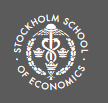 Center for Arts, Business, and Culture
Center for Arts, Business, and CultureThe studies carried out at Center for Arts, Business & Culture (ABC) focus on aesthetic and cultural analyses of economic activities. Examples include how experiences, emotions, stories, and symbols are used to create economic value; economic analysis of aesthetic activities; and how creative and cultural entrepreneurs build economic value from their artistic practices.
The pARTnership Movement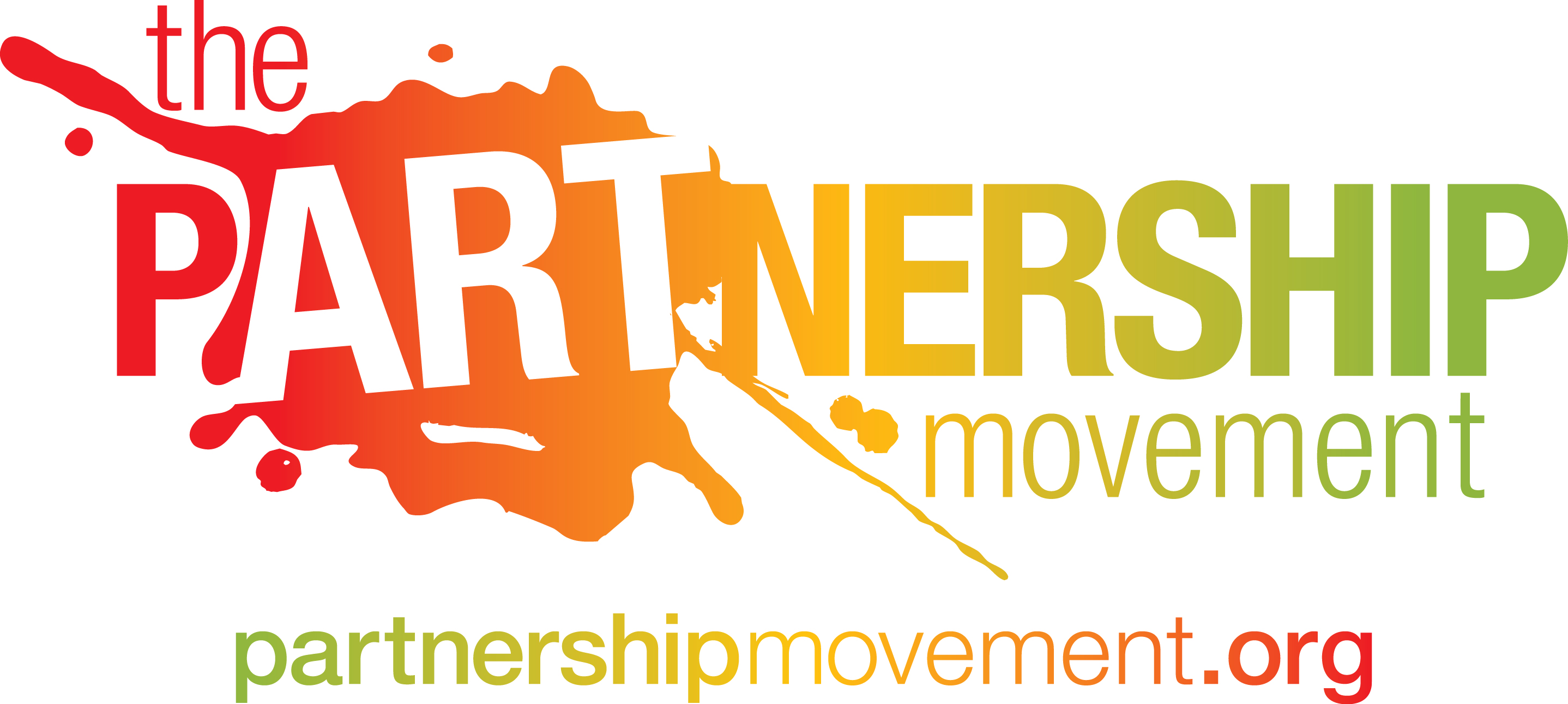 The pARTnership Movement
The pARTnership MovementThe pARTnership Movement, an initiative from Americans for the Arts, wants business leaders to know that partnering with the arts can build their competitive advantage. It provides reasons to partner, how to find a partner, success stories, and research.
ArtPlace America ArtPlace America
ArtPlace AmericaArtPlace was a creative placemaking hub that includes a variety of resources on key areas of focus.
Delta Regional Authority (DRA)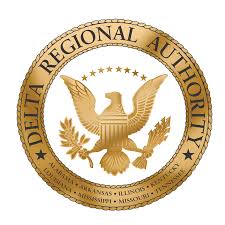 Delta Regional Authority (DRA)
Delta Regional Authority (DRA)The DRA works to create jobs, build communities, and improve the lives of those who reside in the Delta region. Its Delta Creative Placemaking Initiative aims to stimulate development locally through arts and culture.
US Small Business Administration (SBA) US Small Business Administration (SBA)
US Small Business Administration (SBA)The SBA helps to start, build, and grow businesses. It offers resources and training that benefit organizations of any size, from how to write business plans to accounting to human resources to market research and more.
Environment
-
The sustainability and fragility of our environment—the world that surrounds us and everything we rely on to survive—is crucial. Whether as a way of advocating, innovating, or educating, the arts are playing a crucial role in raising awareness and driving change.
Environmental issues like climate change, conservation, and sea-level rise are important issues that have grabbed the public attention, but the difficulty in mustering the political will to implement necessary changes continues to hamper environmental efforts. Moreover, the concepts and details behind issues like climate change can make it hard for people to understand or activate.
For decades, artists have been at the forefront, using their work to inspire and educate the public to change their behaviors to be more sustainable, whether through writing, photography, community engagement, performance, or innovative partnerships with scientists and environmental advocates.
The arts have been shown to amplify the uptake of pro-environmental messaging and to improve the clarity and impact of the message. Visually representing complex concepts can help people better understand problem and how they can help. The arts also positively connect and empower people, inspiring advocates and documenting change.
- Impact PointsOne piece of art can inspire thousands of people to take action.
Anecdotal research shows that the use of the arts to illustrate complicated issues related to the environment can inspire thousands of people to take action who would not otherwise.
Kendler, J. and E. Corr (2016). "How Artists and Environmental Activists Both Do Better Together." Creativity Connects. Retrieved 4 May 2018 from
https://www.arts.gov/sites/default/files/Creativity-Connects-Final-Repo….The arts can make complex concepts accessible.Researchers have found that artist-created visualizations of complex scientific concepts not only help the general public better understand--the help the scientists themselves understand the meaning of the data and devise next steps.
Wilson, S. (2002). Information Arts: Intserctions of Art, Science, and Technology. MIT Press: 37.
Humans process visuals 15 times faster than text--in as little as 13 milliseconds!The way complex concepts like climate change and sustainability of the environment are presented is crucial in convincing people of the urgency. Using the arts can drastically increase comprehension.
Jacobsen, E. Comment on "The 60,000 Fallacy." Retrieved 4 May 2018 from https://policyviz.com/2015/09/17/the-60000-fallacy/.
The arts make change more possible.The right art amplifies the effect of pro-environmental messaging. Participants who view an underwater photograph with related text about plastic pollution in the ocean are more likely to change their behavior than participants who only viewed the corresponding text.
Turner, R. (2017). Environmental Art and Environmental Beliefs: the Case of Plastic Bag Pollution in Oceans. Economics Faculty Working Papers, 52. Retrieved 4 February 2018 from https://scholars.direct/Articles/environmental-studies/aes-2-006.php?ji….
A good image can turn a bystander into an activist.Complex issues like climate change run the risk of disheartening people into inaction with their messaging instead of inspiring them to be part of the movement. Research shows that integrating imagery of energy alternatives and personal actions to mitigate climate damage inspire feelings of success and empowerment in viewers.
O’Neill, S., Boykoff, M., Niemeyer, S., & Day, S. (2013). On the use of imagery for climate change engagement [Electronic version]. Global Environmental Change 23(2), 413–421. Retrieved 4 February 2018 from https://doi.org/10.1016/j.gloenvcha.2012.11.006
-
KlimaForum: The People's Climate Summit
This shadow event to the 2009 UN COP 15 Climate Change Summit gathered more than 50,000 people and featured 202 debates, 70 exhibitions, 43 films, 16 concerts, and 11 plays from all over the world—all of which served to encourage policymakers to uphold the Kyoto agreement.
Signage at the KlimaForum in 2009: The People’s Summit
Water Bar
Using the serving of water from different parts of the state as a base from which to create connection, conversation, and partnership, Water Bar aims to transform culture by re-centering water and ecology in public life and create social spaces through art that reveal the interdependence of ecology, place, community, and culture.
People at Water Bar in Minneapolis. credit: water-bar.org.
Land Art Generator Initiative
The goal of the Land Art Generator is to accelerate the transition to post-carbon economies by providing arts-based models of renewable energy infrastructure that also add value, inspire, and educate. It conducts events, education, outreach, and research into emerging clean technologies and hosts a design competition.
Land Art Generator solar mural artwork La Monarca, 2017. Artwork by Cruz Ortiz and art direction by Penelope Boyer. Image courtesy of the Land Art Generator Initiative.
HighWaterLine
HighWaterLine is a community initiative that works in diverse disciplines to devise climate change resiliency at a local level. It conducts public art interventions to bring awareness to the effects of climate change and facilitates skill-sharing and community collaboration.
HighWaterLine | Bristol. Photograph courtesy of Eve Mosher
Milwaukee/Watermarks
Milwaukee Watermarks aims to help community residents better understand their relationships to the water systems and infrastructure that support their lives. The public art initiative transforms the water treatment plant into a "beacon" that informs residents when they need to conserve and limit water usage.
An artist rendering for the Milwaukee/Watermark.
Soil City
Soil City is a long term project of Open Jar Collective to imagine the ciy as if soil matters. Thye initiative includes walks, workshops, a 'zine, research, and cooking demonstrations to raise awareness of the ground underfoot.
A participant in a Soil City workshop makes dirt. Photo by Hannah Baxter.
- Reading List
Arts. Environment. Sustainability. How Can Culture Make a Difference?
This research paper and report on a 2010 summit convened by the Asia-Europe Foundation provides a variety of examples of current and future practice at the arts/environment/sustainability intersection.
Farther, Faster, Together: How Arts and Culture Can Accelerte Envirnomnetal Progress
The goal of this field scan is to understand and frame how place-based arts and cultural inter-ventions, or “creative placemaking,” can advance sustainability outcomes in the context of community development. We focused on the U.S. context, although many of the issues and priorities identified are also globally relevant. [Introduction, p. 6]
Arts, the Environment, & Sustainability
Excerpted from Arts & America: Arts, Culture, and the Future of America’s Communities. This essay looks at the role of arts and issues of environment and sustainability over the next 10 to 15 years. The full book of essays can be purchased in Americans for the Arts online store.
Funding at the Intersection of Art and Environment
Grantmakers in the Arts commissioned this survey of arts funders who are supporting environment-related work. Some of the funders are actively pursuing this cross-sector work, while others are just beginning to consider whether and how to do this.
The Arts and Environmental Sustainability: An International Overview
This report presents research across a wide range of national arts councils and ministries of culture, with the goal of broadening the understanding of environmental sustainability in connection to the arts, outlining current and future work, and encouraging collaboration and partnership to develop policies and programs related to culture and environmental sustainability.
- OrganizationsThe Center for Sustainable Practice in the Arts (CSPA)
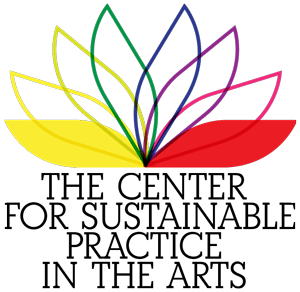 The Center for Sustainable Practice in the Arts (CSPA)
The Center for Sustainable Practice in the Arts (CSPA)CSPA is a think tank that advocates for environmentally sustainable practices in the arts and culture. It engages in research initiatives, educates arts leaders on sustainability, and convenes industry leaders around the issues of sustainable arts practices.
Center for Energy and Environmental Research in the Human Sciences (CENHS) Center for Energy and Environmental Research in the Human Sciences (CENHS)
Center for Energy and Environmental Research in the Human Sciences (CENHS)CENHS, a research center associated with Rice University, is designed to foster and incubate research on the energy/environment nexus across the arts, humanities, and sciences.
ArtPlace America ArtPlace America
ArtPlace AmericaArtPlace was a creative placemaking hub that includes a variety of resources on key areas of focus.
Center for Art + Environment Center for Art + Environment
Center for Art + EnvironmentThe CA+E is an internationally recognized research center housed by the Nevada Museum of Art dedicated to supporting the practice, study, and awareness of creative interactions between people and their environments. It also hosts an annual Art + Environment conference.
The Asia-Europe Foundation The Asia-Europe Foundation
The Asia-Europe FoundationThis wide-reaching, international foundation began commissioning research and case studies about arts and the environment in 2010. Now it has a robust set of publications, many exploring environmentally-related initiatives by cultural sectors in Asia, but which are applicable to similar issues anywhere.
Natural Resources Defense Council (NRDC) Natural Resources Defense Council (NRDC)
Natural Resources Defense Council (NRDC)NRDC works to safegaurd the earth, its people, its plants and animals, and its natural systems. Among the organizational strategies are art-based programs and solutions.
Eco Arts Foundation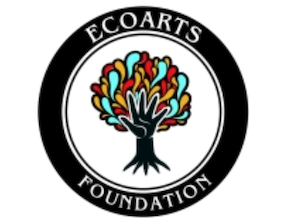 Eco Arts Foundation
Eco Arts FoundationThe EcoArts Foundation aims to inspire ecological regeneration through the arts.
City As Living Laboratory City As Living Laboratory
City As Living LaboratoryCity As Living Laboratory (CALL) makes complex issues of sustainability tangible through artist-initiated projects. CALL's mission is to raise environmental awareness and promote the sustainable development of urban communities through the arts.
Julie's Bicycle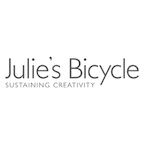 Julie's Bicycle
Julie's BicycleJulie's Bicycle is an NGO based in London that supports the creative community to act on climate change and environmental sustainability, believing that artists are uniquely placed to transform the conversation around climate change and translate it into action. The organization provides workshops, project support, research, network building, and advocacy.
Equity & Diversity
-
The pursuit of equity and diversity is about improving conditions and addressing systems to create equal justice and opportunity for everyone. The arts have always been central to such movements, and always will.
The diversity of America is its greatest strength. Arts and culture embody, reflect and communicate intersectional lives, including beliefs, values, spirituality, identities, and traditions that are passed down from generation to generation, and that continue to evolve in individuals and communities. Arts and culture can play a significant role in promoting equity by fostering inclusivity, diversity, and representation, as well as addressing social, economic, educational and cultural disparities, through their ability to amplify diverse voices, facilitate access and participation, address disparities, foster community, create opportunities, preserve culture, advocate for change, and inspire future generations.
The persistence of historic and oppressive systems disadvantages women, immigrants, people of color, LGBTQ+ people, disabled people, and other marginalized groups. Arts and culture are powerful tools that can impact public opinion and open the door to legislative change. Art has the power to comment on and critique social injustices, inequalities, and systemic issues. Artists often use their work to shed light on pressing societal problems, raising awareness and encouraging dialogue and activism.
Arts and culture provide a platform for underrepresented voices and communities to share their stories and perspectives, challenge stereotypes, and broaden the public’s understanding of different cultures, identities, and experiences. Research suggests exposure to arts and media featuring characters or cultures representing these groups can help reduce and eventually eliminate racist, sexist, heterosexist, ableist, and other negative views. When we read literary fiction, we are more able to understand others’ mental states—which is to say, we increase our ability to empathize.
Arts and culture events can bring communities together, fostering a sense of belonging and social cohesion, where people from different backgrounds can connect, build new relationships, and create a shared sense of identity. The arts can help preserve and celebrate the cultural heritage of marginalized communities by ensuring that artistic expression, traditions, languages, and histories are not lost and are passed on to future generations.
The arts can provide equitable economic opportunities for individuals and communities from diverse backgrounds by creating jobs, supporting small businesses, and driving tourism and local economies. More than 75 percent of communities with new local arts organizations have seen reductions in their levels of income disparity. The arts improve intercultural understanding, promote civic dialogue, and create a common ground for celebrating diversity and pursuing equity.
- Impact PointsIn 75% of communities, the arrival of new arts organizations correlates with reduced income disparity.
From 2000-2010, more than 75% of diverse, low-income, and highly disadvantaged neighborhoods with new arts organizations saw reductions in income disparity.
Florida, R. (2016, February 11). The Connection Between the Arts and Neighborhood Diversity [Electronic version]. CityLab. Retrieved 28 January 2018 at https://www.citylab.com/life/2016/02/the-connection-between-the-arts-an…
The arts encourage empathy.Research has shown that exposure to stories of other cultural experiences, such as through literary fiction, significantly increases empathy and the ability to see another person's point of view.
Kidd, David & Castano, Emanuele. (2013). Reading Literary Fiction Improves Theory of Mind. Science (New York, N.Y.). 342. Retrieved 22 August 2023 from https://www.science.org/doi/10.1126/science.1239918
Culture improves immigrants' psychological well-being.Immigrants who participate in culturally meaningful activities, including their indigenous arts, show improved psychological well-being, enhanced positive emotions and feelings, and deeper social connections with others.
Kim, J. et al. (2015) The importance of culturally meaningful activity for health benefits among older Korean immigrants living in the United States. International Journal of Qualitative Studies on Health and Well-Being. Retrieved 5 April 2018 from https://www.tandfonline.com/doi/full/10.3402/qhw.v10.27501#
The arts increase a person's desire to participate in improving their community.Following engagement in the arts, 63% of participants indicated that they had become more aware of, and more interested in remedying, local challenges.
Matarasso, F. (1997).
The arts increase tolerance.The opinions of frequent television-viewers of women and other oppressed groups become more tolerant as the number of characters from such groups increase in each television season.
Jacobs, T. (2015, September 23). Can Television Teach Tolerance? [Electronic version]. Pacific Standard. Retrieved 28 January 2018 from https://psmag.com/environment/can-television-teach-tolerance
Engaging in cultural heritage, particularly bilingual education including heritage tongues, improves academic success.Three decades of research confirm that well-implemented immersion in heritage language and culture improves language acquisition, enhances test performance, increases school retention and graduation rates, college entry, and increases parent involvement and cultural pride.
McCarty, T. and T. Lee. "Critical Culturally Sustaining/Revitalizing Pedagogy and Indigenous Education Sovereignty." In Harvard Educational Review, Spring 2014. Retrieved 23 August 2023 from https://www.researchgate.net/publication/265412114_Critical_Culturally_…
The arts help grapple with complex heritage and history while preserving it.Artistically preserving heritage can help reconcile difficult history, encourage self-expression, and aid family healing in service to community empowerment and change.
Abriendo Las Cajas (Opening the Boxes) (2009). As discussed in "Community Heritage and Culture" (2011). Retrieved 11 May 2018 from https://slco.org/uploadedFiles/depot/communityServices/fZap/seeking_fun….
- Examples of Practice
Conflict Kitchen
Conflict Kitchen serves cuisines from countries with which the United States is in conflict. It integrates food culture with programming that helps diners connect with the experiences of those often misrepresented and marginalized by the government and mass media.
Staff engaging with customers during Iranian version of Conflict Kitchen. Courtesy of Conflict Kitchen.
Guerilla Girls
Guerilla Girls is an anonymous group of radical feminist female artists devoted to fighting sexism and racism within the art world. It has used everything from posters, direct actions, convenings, and art installations to critique society’s oppressive structures.
Guerrilla Girls Complaints Department at Tate Modern, 2012. Copyright © Guerrilla Girls, courtesy guerrillagirls.com.
Metro Nashville Arts Commission
Metro Arts recently developed the THRIVE program, which uses an obscure municipal regulation to award contracts of up to $4,000 to individual artists and small arts groups ineligible for the Commission’s larger general operating support grants. Two-thirds of the pilot recipients were artists of color.
Norf at Magruder. Artist Joseph Love III working with students at McGruder Family Resource Center. Photo by Courtney Adair Johnson. Courtesy of Metro-Nashville Arts Commission.
"Until We Are All Free" Art Kit from CultureStrike
In collaboration with Mobilize the Immigrant Vote (MIV), CultureStrike has created an easy guide to help you with making stencils, banners, and other art projects to fuel events, marches, and actions specifically related to immigration.
artwork inclued in CultureStrick's guides.
Make America Dinner Again
Make America Dinner Again is an avenue to listen. Developed after the 2016 election, MADA is about building understanding and moving forward together by inviting people to sit down and have dinner.
Video from Make America Dinner Again.
Art Change US
America is being culturally remapped by demographic change. ArtChangeUS asks, “What is the meaning, in cultural terms, of this shift? What exemplary models of arts practice and organizing can be learned from in order to produce greater relevance and effectiveness? And what unheard voices and fresh thinking can be brought, both to arts and cross-sector tables, to catalyze new collaborative possibilities?”
Bobby Pourier and others skate before a conversation at Ford Theaters, part of the Transforming Space convening. .
- READING LIST
Different Stories: How Levels of Familiarity with Literary and Genre Fiction Relate to Mentalizing
This report follows an earlier study that observed an increased ability to understand others’ thoughts and feelings after reading literary fiction. It looks at the prolonged effects of exposure to literary fiction and the resulting effects.
Figuring the Plural
This report is a broad collection of research and essays on ethnocultural arts organizations across the United States and Canada. It examines the resources available to these groups and the challenges they face.
Neighborhood Diversity, Economic Health, and the Role of the Arts
Using data from the Cultural Data Project, the authors determine where newly established New York City arts organizations locate in terms of neighborhood racial, income, and industry diversity.
Equity Reflection Questions
"We [Metris Consulting]] reflect on a list of questions during the arc of each of each project, from project design to reporting and presenting findings. These questions help us check our assumptions and make our work accessible to and reflective of the people at the center of each project. We make our “check list” and the resources we drew on to craft it, publicly available.' [excerpt from website]
- ORGANIZATIONSAlliance for Inclusion in the Arts
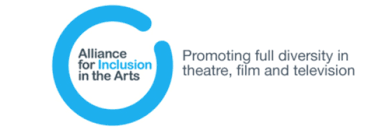 Alliance for Inclusion in the Arts
Alliance for Inclusion in the ArtsAlliance for Inclusion in the Arts promotes and advocates for full inclusion of artists of color and performers with disabilities at all levels of production in film, theater, television, and related media.
Alternate ROOTS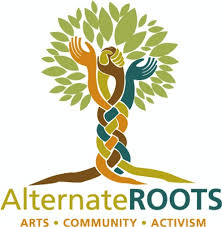 Alternate ROOTS
Alternate ROOTSAlternate ROOTS is committed to social and economic justice and protection of the natural world. It supports artists who have a commitment to their communities and those whose cultural work strives for social justice.
Sphinx Organization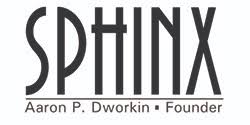 Sphinx Organization
Sphinx OrganizationThis organization develops and showcases young musicians of color through ensembles, music competitions, and national convenings. It also hosts SphinxConnect, a national convening on diversity in the arts, where arts leaders meet to strategize and share their knowledge.
CultureStrike CultureStrike
CultureStrikeCultureStrike empowers artists to dream big, disrupt the status quo, and envision a truly just world rooted in shared humanity. They operate through a migrant lens across various issues to create work that highlights the complexity, nuance, and beauty of communities that are often rendered invisible.
D5 Coalition D5 Coalition
D5 CoalitionThis five-year initiative was to advance philanthropy's diversity, equity, and inclusion. It lives on in a deeply interactive and informative website with recommended next steps, research, and network opportunities.
artEquity artEquity
artEquityartEquity offers training and consulting services to individuals and organizations on creating and sustaining a culture of equity and inclusion through the arts and culture. Training topics address structural and systemic issues of identity, power-sharing language and communication, team building, and strategies to initiate and normalize equity-based approaches in organizational and community culture.
Annenberg Inclusion Initiative Annenberg Inclusion Initiative
Annenberg Inclusion InitiativeHoused at the University of Southern California, the Annenberg Inclusion Initiative is a think tank studying on diversity and inclusion in Entertainment. The three work areas include: reserach, advocacy, and action. Initiative projects include The Music Coalition, Inequality in Popular Film, and The Inclusion Rider.
PolicyLink PolicyLink
PolicyLinkFor centuries, low-income communities and communities of color have used arts and culture to navigate and survive systemic racism and oppression. These strategies are essential to retaining collective memory, promoting healing, and liberating the potential within all of us. PolicyLink believes that arts and culture is not only a strategy to achieve but also a core component of an equitable society.
Health & Wellness
-
Health and well-being, both individually and for communities, is about being able to flourish and grow. In both arenas, the arts have played a strong role, leading to better care, cost savings, and an increased quality of life.
The intersection of the arts and the various fields that constitute the broad category of health and well-being covers everything from supplementing clinical practice, mental and physical health, community health, healthcare environments, and medical training.
As our collective understanding of healing, prevention, and next-generation practices and therapies evolve, it is becoming increasingly clear that arts and culture-based interventions offer promise in new and surprising ways.
The arts benefit patients, their caregivers, and the systems that provide the care—saving money, reducing pain medication needs and the length of hospital stays, strengthening immune levels, decreasing depression, increasing memory and cognitive function, and improving communication and behavioral skills.
- Impact Points43% believe the arts help.
Almost half of frontline clinical staff believe that the arts have a positive effect on healing.
Scher P, Senior P. Research and Evaluation of the Exeter health care arts project. Med Hum 2000; 26; 71-8. As quoted in http://journals.sagepub.com/doi/pdf/10.1258/jrsm.2010.100256.
Over 50% have programs.More than 50% of US hospitals now offer arts programming--and rising.
Wikoff, N. (2004). Cultures of Care: A Study of Arts Programs in US Hospitals. Washington, DC: Americans for the Arts. Retrieved 7 September 2023 from chrome-extension://efaidnbmnnnibpcajpcglclefindmkaj/https://www.americansforthearts.org/sites/default/files/Arts%20and%20He…
$2.25 billion in prospective savings from new treatments.The use of arts can reduce healthcare costs. Tallahassee Memorial HealthCare saved $567 per procedure by using a musician during the preparation period for pediatric CT scans. The savings for this procedure at the national level could exceed $2.25 billion.
Sonke, J. (2012, October 17). Arts and Creative Engagement: Establishing Arts in Healthcare as a Field of Arts Management [Electronic version]. Culturework, 16(4). Retrieved 7 September 2023 from https://www.researchgate.net/publication/272490688_Arts_and_Creative_En…
24% say the arts improve clinical outcomes, 43% that they have a positive effect.Forty-three percent of frontline clinical staff believe that the arts have a positive effect on healing and 24% say the arts improve clinical outcomes.
Scher P, Senior P. (2000)
$56 billion in potential savings from shorter stays.Patients who see nature or art from their hospital beds recuperate almost 1 day faster and require fewer pain medications. A single hospital day averages $2,300, and about 25 million people per year stay over at least one night in the hospital, which adds up to a potential of $56 billion in savings per year.
NBC News. (2014, September 23). The Healing Power of Art: Can Hospital Collections Help? Retrieved 11 February 2018 from https://www.nbcnews.com/health/health-news/healing-power-art-can-hospit…
45% average increase in reported health.Students participating in the Kaiser Permanente Educational Theater Program show a correct answer increase of, on average, 45% in health-related questions.
Cheadle, A., Cahill, C., Schwartz, P., Edmiston, J., et al. (2011, November 28). Engaging Youth in Learning About Healthful Eating and Active Living: An Evaluation of Educational Theater Programs [Electronic version]. Journal of Nutrition Education and Behavior. Retrieved 11 February 2018 from http://www.jneb.org/article/S1499-4046%2811%2900462-3/abstract
Increased immunity for those battling terminal diseases.Creative writing offers physical benefits to those battling terminal diseases. HIV positive patients show a strengthened immune level after just 30 minutes of writing. Similar results were found with asthma, rheumatoid arthritis, and Hepatitis B patients.
Rollins, J., Sonke, J., Cohen, R., Boles, A., & Li, J. (2009). 2009 State of the Field Report: Arts in Healthcare [Electronic version]. Society for the Arts in Healthcare, 11. Retrieved 7 September 2023 from https://www.americansforthearts.org/sites/default/files/ArtsInHealthcar…
- Examples of Practice
Arts & Health at Duke University
This program provides literary, performing, and visual arts program to Duke University Hospital and its clinics. It believes that arts are essential to the health and well-being of its patients, their caregivers, and its staff.
image caption: William Dawson, right, of Arts & Health at Duke, plays a ukulele for Duke University Hospital patient David Stucker. Photo courtesy of David Stucker's family.
Musicians On Call
Musicians On Call believes that patients, families, and caregivers should benefit from the healing power of music. In addition to live performances, it offers the Music Pharmacy, which gives each patient access to a tablet loaded with Pandora and headphones.
image caption: Photo by Nick Benik. Courtesy of Musicians On Call
Sing for Life
Sing for Life works with Parkinson's patients and their caregivers on increasing vocal strength and stamina and enhancing well-being through exercises for relaxation, posture, breathing, and resonance.
University of Florida Professors Brenda Smith and Ronald Burrichter lead a Sing for Life Class, February 2018. Photo by Marissa Secades, UF College of the Arts intern
University of Washington Medical Center Arts Program
The UW Medical Center integrates art into patient care through its Arts in Healing program, permanent art collection, and music program.
Art collection is visible throughout the UW Medical Center
Tracy's Kids
Tracy’s Kids uses art therapy to help young cancer patients and their families cope with the emotional stress and trauma of cancer and its treatment. It conducts more than 10,000 hours of sessions each year to ensure that the children and families are emotionally equipped to fight cancer as actively as possible.
The Washington Capitals visited Tracy’s Kids at Medstar Georgetown University Hospital in December. Courtesy of Tracy’s Kids.
- Reading List
Arts in Healthcare: 2009 State of the Field Report
Arts in Healthcare is a diverse, multidisciplinary field dedicated to transforming the healthcare experience by connecting people with the power of the arts at key moments in their lives. This rapidly growing field integrates the arts, including literary, performing, and visual arts and design, into a wide variety of healthcare and community settings for therapeutic, educational, and expressive purposes.Arts in Medicine Literature Review
The purpose of this literature review on arts in medicine is to examine reports and studies that illuminate the role artists and arts organizations can and do play in healthcare, especially in clinical settings. The approach used in this review is a holistic one — looking at what authors have to say about the arts and healing in relationship to individual preferences and cultural norms. [p. 3]
The Connection Between Art, Healing, and Public Health: A Review of Current Literature
This review explores the relationship between engagement with the creative arts and health outcomes, specifically the health effects of music engagement, visual arts therapy, movement-based creative expression, and expressive writing. Although there is evidence that art-based interventions are effective in reducing adverse physiological and psychological outcomes, the extent to which these interventions enhance health status is largely unknown. Our hope is to establish a foundation for continued investigation into this subject and to generate further interest in researching the complexities of engagement with the arts and health.
Basic Toolkit Handbook: Building and Sustaining Arts in Healthcare Programs
This Handbook reflects the complex and changing needs of our growing field. It serves as a guide through the Society for the Arts in Healthcare’s full-day workshop, Basic Tool Kit: Arts in Healthcare Program Essentials and was compiled through submissions from the workshop’s leaders. The workshop’s presenters are leaders in the field of arts in healthcare and serve as consultants in the Society’s Consulting Service, a technical assistance program designed to assist organizations in starting, growing, and sustaining arts in healthcare programs. The guide reflects their own work with organizations around the country and that of their peers – a pool of over 20 consultants specializing in a range of arts in healthcare areas.
Art, Health, and Well-Being in America
National Organization for Arts in Health (NOAH) is proud to present the online edition of the white paper, Arts, Health, and Well-Being in America, which was unveiled in a print version at the inaugural Arts in Health conference for the organization in September 2017.
Arts & Health: An International Journal for Research, Policy and Practice
Arts & Health provides a forum for the interdisciplinary field of arts in healthcare. It publishes empirical research, policy analysis, theoretical discourse, systematic reviews, and examples of best practices.
- OrganizationsCenter for Arts in Medicine
 Center for Arts in Medicine
Center for Arts in MedicineThe University of Florida Center for Arts in Medicine advances research, education, and practice in arts in medicine. It works in education and training, research, and outreach.
The Foundation for Arts and Healing The Foundation for Arts and Healing
The Foundation for Arts and HealingThe mission of the Foundation for Art & Healing is to use its position as a “bridge” to create and expand general awareness about art and healing, to bring forward through research and related explorations critical knowledge about art and healing and the relationship between them, and to help make this knowledge available at the individual and community level.
ArtPlace America ArtPlace America
ArtPlace AmericaArtPlace was a creative placemaking hub that includes a variety of resources on key areas of focus.
Arts & Healing Network Arts & Healing Network
Arts & Healing NetworkWhile the network itself closed in 2015, the website, and its resources, remain.
Robert Wood Johnson Foundation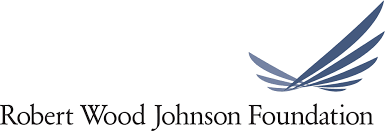 Robert Wood Johnson Foundation
Robert Wood Johnson FoundationThe Robert Wood Johnson Foundation has a wide portfolio related to healing, including research on the Social Determinants of Health.
National Organization for Arts in Health National Organization for Arts in Health
National Organization for Arts in HealthProvides transformational leadership to bring the field of arts in health together, and to move the field forward. Our focus is on the future of arts, health, and wellbeing; and creating tangible impact from our goals and initiatives.
Arts in Medicine Arts in Medicine
Arts in MedicineArts in Medicine integrates all artistic disciplines throughout New York City's Health and Hospital system. Beyond serving partients, the program includes initiatives taimed at staff as a means to reduce reduce stress, support emotional health, and adress "compassion fatugue."
Arts in Health Arts in Health
Arts in HealthA partnership between the Rhode Island Department of Health and the Rhode Island State Council on the Arts, the State Arts and Health Plan is a roadmap for fully integrarting arts and art-based therapies into healthcare and community settings throughout the state.
History & Heritage
-
The traditions, history, and heritage that link us to our past and to each other are simultaneously crucial to our well-being and often ignored. Art strengthens the bridge to our past and carries traditions forward into the future.
Arts, history, tradition, and heritage intersect in all sorts of important and surprising ways. The collective memory of a community resonates inside each member of that community, and if that connection to history is weakened then the ability to participate fully in the community’s present and future is weakened as well. Whether culture is the core of heritage, or is the mechanism through which heritage and tradition are preserved and transformed over time, art is central to cultural health and heritage.
Arts and crafts provide economic independence for artisans in underdeveloped communities, improve educational outcomes for children, and contribute a significant amount to the economy in the form of cultural heritage-related tourism.
Thousands of cultural heritage organizations work to preserve and promote cultural heritage and identity every year. Artists help pull and transform traditional stories from communities, reconnecting members of the community in new and interesting ways. By making cultural history more accessible, we can break down preconceptions and bind our communities together.
- Impact PointsCultural heritage accounts for 68% of all tourism.
When combined with tourism, arts and cultural heritage can be a significant economic catalyst. 68% of long-distance (over 50 miles) American travelers say they included a visit to an arts/cultural heritage site during their trip.
Americans for the Arts.
Engaging in cultural heritage, particularly bilingual education including heritage tongues, improves academic success.Three decades of research confirm that well-implemented immersion in heritage language and culture improves language acquisition, enhances test performance, increases school retention and graduation rates, college entry, and increases parent involvement and cultural pride.
McCarty, T. and T. Lee. "Critical Culturally Sustaining/Revitalizing Pedagogy and Indigenous Education Sovereignty." In Harvard Educational Review, Spring 2014. Retrieved 23 August 2023 from https://www.researchgate.net/publication/265412114_Critical_Culturally_…
Learning heritage languages and cultures improves uptake of English.Research in New Zealand showed that the stronger a child became in traditional Maori language and tradition, the more linguistic, cognitive, and cultural benefits they accrued.
May, S., R. Hill and S.Tiakiwai. "Bilingual Education in Aotearoa/New Zealand." (2006). Retrieved 11 May 2018 from http://www.educationcounts.govt.nz/publications/schooling/5075
Connecting with community heritage galvanizes interest in the community's future.A 2003 study found that a community project built around compiling living history from every age, neighborhood, ethnicity, and background in a community yielded a stronger interest from those interviewed about the current and future identity of the place.
"Writing Austin's Lives." As discussed in "Community Heritage and Culture" (2011). Retrieved 11 May 2018 from https://slco.org/uploadedFiles/depot/communityServices/fZap/seeking_fun….
The arts help grapple with complex heritage and history while preserving it.Artistically preserving heritage can help reconcile difficult history, encourage self-expression, and aid family healing in service to community empowerment and change.
Abriendo Las Cajas (Opening the Boxes) (2009). As discussed in "Community Heritage and Culture" (2011). Retrieved 11 May 2018 from https://slco.org/uploadedFiles/depot/communityServices/fZap/seeking_fun….
- EXAMPLES OF PRACTICE
Chamizal National Memorial
The National Park Service explores Hispanic Culture through parks and historic places across the United States, including at the Chamizal National Memorial in El Paso, TX. Chamizal hosts the Siglo de Oro Drama Festival and the Franklin Smith Gallery showcases historical and contemporary art.
Rodolfo Hernandez directs traditional dances performed to the music of Jalisco, Mexico. Courtesy of Chamizal National Memorial.
EbzB Productions
EbzB Productions works with students to conduct oral history research in their local communities to uncover cultural stories and craft public theatrical performances. Topics have included immigration, local myths, and integration.
A Virginia Cross Elementary student participant in Siler City, NC, as part of a student-generated oral history project, Checkpoint: Hope for You & Me, a collaboration of EbzB Productions & Chatham Arts; courtesy of EbzB Productions.
Indian Arts and Crafts Board
The Indian Arts and Crafts Board works to expand the Indian arts and crafts market and promote the traditions, heritages, and cultures of American Indian and Alaska Native communities. It maintains three museums, conducts an exhibition program, and produces a source directory.
logo
Alliance for California Traditional Arts
The Alliance for California Traditional Arts promotes and supports ways for cultural traditions to thrive now and into the future by providing advocacy, resources, and connections for folk and traditional artists.
Avis Punkin (right) and her granddaughter and 2003 apprentice Carly Tex holding baskets made by Avis. Photo: A. Kitchener.
Kentucky Arts Council Community Scholars Program
The Community Scholars Program trains community members to document, interpret, and disseminate their cultural resources and traditional art forms. Project examples include a blog about bluegrass/rockabilly music and a traveling photography exhibit about Southern funeral traditions.
Participants share family history and folklore at a Community Scholar training session, Bowling Green African American Museum, August 2017. Courtesy of Kentucky Arts Council.
Memphis Black Arts Alliance
The Alliance is dedicated to preserve and promote African-American arts and heritage; sharing information and resources; increasing artistic and economic self-sufficiency; and advocating increased community support for the arts.
The Firehouse Community Arts Center was converted into a multipurpose community arts center. Courtesy of Memphis Arts Project.
- READING LIST
The Economics of Cultural Policy
This book deals with policy-making in the cultural arena from an economic point of view and examines cultural policy in the arts, heritage, cultural industries, urban development, tourism, education, trade, cultural diversity, economic development, and intellectual property.
How the Arts and Cultural Sector Strengthen Cultural Values and Preserve Heritage and History
This is one of several briefing papers created by the APA's Planning and Community Health Research Center on how planners use arts and culture to achieve economic, social, environmental, and community goals.
10 Ways to Keep the "Local" in a Local Historic District
The National Trust for Historic Preservation's blog featured this article 10 Ways to Keep the 'Local' in a Local historic District.
"Over the past several weeks we’ve covered several aspects of creating local historic districts, including deciding to establish a local historic district, considering where its boundaries should be, and getting community buy-in. This week, we’re looking at keeping the local in your historic district, because districts are not a one-size-fits-all solution." [exceprt from blog post]
Atlas of Rural Arts & Culture
A project of Art of the Rural, this atlas maps rural arts and culture, with a focus on rural youth, rural-urban exchange, and an interest in the changing face of rural America.
Make Heritage FunSupported by UNESCO, the website is a global, participative, engagement platform for everything heritage.
- OrganizationsAmerican Folklife Center
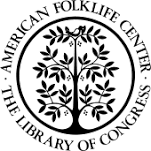 American Folklife Center
American Folklife CenterThe American Folklife Center preserves and presents American folklife through research, documentation, archival preservation, reference service, live performance, exhibitions, publications, and training.
American Folklore Society (AFS) American Folklore Society (AFS)
American Folklore Society (AFS)AFS serves the field through folklore studies. It works to understand the intersections of art and everyday life, and the cultural communication and conflict within and across religious, geographic, and ethnic divides.
International Federation of Arts Councils and Culture Agencies (IFACCA)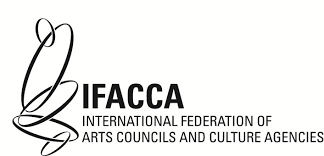 International Federation of Arts Councils and Culture Agencies (IFACCA)
International Federation of Arts Councils and Culture Agencies (IFACCA)IFACCA is the global network of arts councils and ministries of culture, with member organizations in more than 70 countries.
Museum of International Folk Art (MOIFA) Museum of International Folk Art (MOIFA)
Museum of International Folk Art (MOIFA)MOIFA seeks to foster understanding of the traditional arts, create a platform for folk artists to present their work, create accessible exhibitions, and share its resources.
Native Arts and Cultures Foundation (NACF)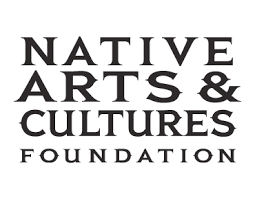 Native Arts and Cultures Foundation (NACF)
Native Arts and Cultures Foundation (NACF)The Native Arts and Cultures Foundation (NACF) is a Native-led, nonprofit, philanthropic organization dedicated exclusively to the perpetuation of American Indian, Alaska Native, and Native Hawaiian arts and cultures nationwide.
GoUNESCO GoUNESCO
GoUNESCOSupported by UNESCO, the website is a global, participative, engagement platform for everything heritage.
Housing
-
There is not a more basic need than housing and the shelter, care, and security that it provides. The arts are a powerful tool to help advocate for housing needs, innovate for new housing models, and drive conversations to build homes in communities that thrive.
Safe and affordable housing is a basic need that affects our health, access to education, and our access to security both financial and physical. Without it we can’t thrive, and whether you’re an artist or someone else in a community, the struggle to find housing that allows for the stability needed to be successful can be difficult and draining.
Artists play a critical role in the vibrancy and vitality of their neighborhood, community, and city. Neighborhoods where artists cluster often become cultural hubs, increasing the value of the surrounding neighborhood. Artmaking can provide innovative and unique ways of raising the profile of housing issues in a community and can be helpful in efforts to balance “gentrification” with “regeneration.”
Activism around housing, as well as the planning, financial distribution, and communications needs of nonprofit organizations, local governments, and developers have all found solutions in arts-based interventions.
- Impact PointsThe arts can lead to a 20% increase in property values.
The creation of a new large arts space in North Adams, MA, increased nearby property values by about 20 percent.
Markusen, A. and A. Gadwa. (2010)
The arts make people more aware of their rights and their community.A study in the United Kingdom found that 20% of people who engaged in participatory arts felt differently about their rights after participating.
Matarasso, F. (1997). Use or Ornament? The Social Impact of Participation in the Arts [Electronic version]. Comedia. Retrieved 10 June 2024 from https://www.americansforthearts.org/node/100680
Culture provides an anchor for community dialogues around housing.A variety of research shows that common cultural history, whether hip hop, community murals, or immigrant heritage and craft, can provide unity in community dialogues about housing preservation that celebrates an area’s unique culture and reflects the needs and values of all who live there.
“Arts Create Cultural Cohesion in Changing Communities.” How Housing Matters. Retrieved 8 April 2018 from https://howhousingmatters.org/articles/arts-create-cultural-cohesion-in…
Integrating the arts can inspire 1,000's of actions from people who might otherwise sit on the sidelines.The use of the arts to illustrate complicated issues can inspire thousands of people to take action who would not otherwise.
Kendler, J. and E. Corr (2016). "How Artists and Environmental Activists Both Do Better Together." Creativity Connects. Retrieved 10 June 2024 from https://www.arts.gov/sites/default/files/Creativity-Connects-Final-Repo…
More art equals more value.The more art, the more desirable a neighborhood is to live. A 10-year study found that an increased presence of art in neighborhoods was correlated with a faster-than-average increase in property values in those neighborhood over that time period.
Seresinhe, C.I. et al. “Quantifying the link between art and property prices in urban neighbourhoods.” Royal Society Open Science (27 April 2016). Retrieved 11 April 2018 from http://rsos.royalsocietypublishing.org/content/3/4/160146.
- Examples of Practice
National Fair Housing Alliance Poetry Slam
This annual event brings together world-renowned spoken word artists from across the country to Slam for Justice, using their vibrant words and performance skills to compel communities to do more to ensure that our society lives up to its values.
National Fair Housing Alliance Poetry Slam 2017 Poetry Slam at Busboys and Poets. https://www.youtube.com/watch?v=VR1cT-TC3d8Paducah Mainstreet Artist Relocation Program
Working at the intersection of artist housing and community development, this unique program offers empty or uninhabited property to artists for $1. Artist residents, through a special financing arrangement, have invested more than $30 million in restoring the community.
An image of Vincent Van Gogh alerts artists looking for empty, fixable homes or vacant lots in Paducah, KY Photo Credit: Noah Adams/NPR
Write a House
Write a House aims to rebuild communities in Detroit, support the arts, redevelop housing, and provide jobs. It renovates empty homes and awards them to emerging writers chosen through a competitive judging process.
image from Write a House blog (http://www.writeahouse.com/blog/were-talking-detroit-writing-and-point-of-view-in-palo-alto)
- Reading List
Exploring the Ways Arts and Culture Intersects with Housing
This scan also indicates that the fields of creative placemaking and affordable housing need each other to be effective and also need to better consider each other as they endeavor to accomplish the overall goal of building healthy communities of opportunity.
How Art Spaces Matter II
This report and its predecessor, How Artist Space Matters (2010), explore how and why art spaces benefit in-house artists, arts organizations, and surrounding neighborhoods and regions. Artspace Projects developed the two case studies detailed in this report, the Riverside Artist Lofts (Reno, NV) and Tashiro Kaplan Artist Lofts and Tashiro Arts Building (Seattle, WA), as well as the three Twin Cities projects explored in our first report. The report provides both an in-depth exploration of how the Riverside and Tashiro Kaplan benefit in-house arts tenants and their neighborhoods and regions.
The State of the Nation's Housing 2017
A decade after the onset of the Great Recession, the national housing market is finally returning to normal. With incomes rising and household growth strengthening, the housing sector is poised to become an important engine of economic growth. But not all households and not all markets are thriving, and affordability pressures remain near record levels. Addressing the scale and complexity of need requires a renewed national commitment to expand the range of housing options available for an increasingly diverse society. [Executive Summary, p.1]
Arts and Culture in Urban or Regional Planning: A Review and Research Agenda
This article reviews the state of knowledge about arts and culture as an urban or regional development tool, exploring norms, reviewing evidence for causal relationships, and analyzing stakeholders, bureaucratic fragmentation, and citizen participation in cultural planning.
- OrganizationsNational Fair Housing Alliance
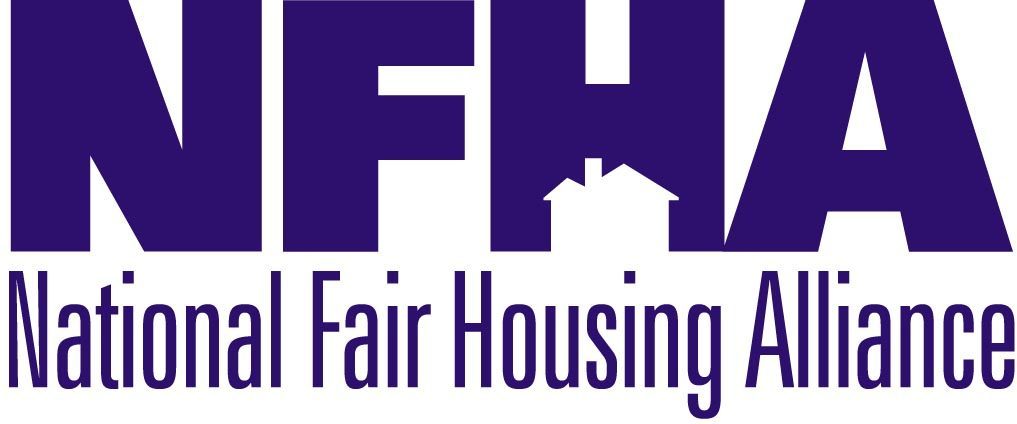 National Fair Housing Alliance
National Fair Housing AllianceThe National Fair Housing Alliance (NFHA) is the only national organization dedicated solely to ending discrimination in housing.
Rebuild Foundation Rebuild Foundation
Rebuild FoundationTheaster Gates' Rebuild Foundation is a platform for art, cultural development, and neighborhood transformation.
NeighborWorks America NeighborWorks America
NeighborWorks AmericaNeighborWorks is a national organization with local affiliates that works around issues of affordable housing and community development, including a subset of work about how the arts can be used to address housing objectives.
ArtPlace America ArtPlace America
ArtPlace AmericaArtPlace was a creative placemaking hub that includes a variety of resources on key areas of focus.
Artspace Artspace
ArtspaceArtspace is a nonprofit that uses the tools of real estate development to create affordable, appropriate places where artists and communities can intersect and live.
Immigration
-
Immigration—the permanent migration of a person or community—can be a disorienting and challenging. The arts’ ability to preserve heritage and tradition and to encourage communication across barriers can ease the journey.
Each new wave of immigrants to the United States brings new perspectives, traditions, and art, which add to the evolving cultural tapestry of America. The unique, complex amount of immigration and integration that American communities constantly go through can place cultures in conflict—but arts and culture is also one of the best ways to create a new harmony.
Immigrants contribute greatly to the artistic and creative experiences that benefits all Americans from all backgrounds. However, immigrants—particularly first-generation immigrants—often choose not to participate in formal mainstream arts and culture activities, favoring participatory arts activities (e.g., amateur choruses, poetry writing circles, hip hop groups, etc.) that tend to be more informal and often connected to their cultural heritage. Immigrants, and particularly their children, tend to adopt the cultural behaviors of their U.S.-born neighbors over time.
The longer an immigrant stays in the United States, the more their arts participation resembles that of the U.S.-born population. The arts also bring immigrant communities together, and act as a bridge to connect to mainstream American culture. Immigrant artists are more likely to operate within the informal arts sector.
- Impact Points85% strengthen community ties
Over 8 out of 10 participatory arts activities strengthen community ties, including across cultural experiences and viewpoints.
Moriarty, P. (2004). Immigrant Participatory Arts: An Insight Into Community-building in Silicon Valley [Electronic version]. Cultural Initiatives Silicon Valley. Retrieved 13 February 2018 from https://www.creativecity.ca/database/files/library/immigrant_arts_lr.pd…
Immigrants 19% more likely to take part in tech-based art.Immigrants are up to 19% more likely to take part in a variety of cultural activities that incorporate technology—particularly the use of television, mobile devices, or the internet to view artforms like classical music, salsa, ballet, contemporary dance, and theater.
Novak, J. (2016). Considering Cultural Integration in the United States: Empirical Essays on Immigrants’ Arts Participation. RAND Corporation. Retrieved 13 February 2018 from https://www.rand.org/pubs/rgs_dissertations/RGSD379.html
57% believe American culture is improved by immigrant cultures.57% of Americans believe that immigrants improve the quality of the food, music, and arts in the United States—a number that has increased by 17% in the last 10 years.
McCarthy, J. “Americans More Positive About Effects of Immigration.” Retrieved on 11 April 2018 from http://news.gallup.com/poll/213146/americans-positive-effects-immigrati….
Immigrants' grandchildren 2x as likely to attend cultural events.Compared to first-generation immigrants, U.S. residents in the country for 3 generations or more participate in live theater at more than double the rate. In general, cultural participation rates rise the more time has passed since immigrating, reaching levels comparable to the US-born population after 15 years of residency.
Novak, J., 2016.
1-in-4 U.S. Nobel Laureates in Literature are immigrants.The number is even higher overall -- 39% of the U.S. science Laureates are immigrants--and many of them thank creative enterprises for their scientific success.
Gresser, E. (2013, June 26). Immigrants make up 25 percent of the US science and technology workforce. Progressive Economy. Retrieved 13 February 2018 from http://www.progressive-economy.org/trade_facts/immigrants-make-up-25-pe…
Culture improves immigrants' psychological well-being.Immigrants who participate in culturally meaningful activities, including their indigenous arts, show improved psychological well-being, enhanced positive emotions and feelings, and deeper social connections with others.
Kim, J. et al. (2015) The importance of culturally meaningful activity for health benefits among older Korean immigrants living in the United States. International Journal of Qualitative Studies on Health and Well-Being. Retrieved 5 April 2018 from https://www.tandfonline.com/doi/full/10.3402/qhw.v10.27501#
Pushing the where and when of the arts.Research shows that immigrant artists are twice as likely as US-born artists to have their projects hosted in informal arts spaces.
Stern, M., Seifert, S., & Vitiello, D. (2008). Migrants, Communities, and Culture. The Reinvestment Fund. Retrieved 13 February 2018 from https://www.reinvestment.com/wp-content/uploads/2015/12/Migrants_Commun…
- Examples of Practice
"Exposure" Municipal Photo Fellowship
As part of an effort to explore civic and societal issues through photography, the City of San Diego has announced the selection of artist John Raymond Mireles for the City’s first-ever photo fellowship program, Exposure. Mireles will work alongside the Office of Immigrant Affairs and Arts and Culture staff to develop a project that shares the stories and lives of immigrants and refugees living in San Diego.
Camera lens images from program site.
Chasing LOVE
The Office of Arts, Culture and the Creative Economy (OACCE) hosted Little Amal, a global symbol of refugee rights, during their welcoming week. Alongside Little Amal were city wide events focused on Arts & Immigration
Little Amal Puppet with hearts and the word love
Casa Azafran, A Home for All
Casa Azafran is both a beautiful event space and home to a collective of nonprofits who offer services in education, legal, health care and the arts to immigrants, refugees and community as a whole.
Mural mosaic art on the façade of the Casa Azafran's building
"Until We Are All Free" Art Kit from CultureStrike
In collaboration with Mobilize the Immigrant Vote (MIV), CultureStrike has created an easy guide to help you with making stencils, banners, and other art projects to fuel events, marches, and actions specifically related to immigration.
artwork inclued in CultureStrick's guides.
Nibble, Global Eats by Local Peeps
Nibble is the culinary entrepreneurship arm of the Somerville Arts Council. Nibble elevates cultural traditions by helping educate and empower immigrant and refugee culinary entrepreneurs to share their diverse foodways and establish economic empowerment in the local restaurant industry.
Nibble chef holding a tray of food, photo by Maria Fernanda Martinez, courtesy of Somerville Arts Council.
The Immigrant Artist Mentoring Program
The Immigrant Artist Mentoring Program, from the New York Foundation for the Arts, pairs immigrant artists from all disciplines with artist mentors who provide mentees with one-on-one support.
NYFA 's Immigrant Artist Mentoring Program.
- Reading List
Considering Cultural Integration in the United States: Empirical Essays on Immigrants' Arts Participation
By 2065, a record-breaking high of 1 in 3 US residents is projected to be either an immigrant or the child of an immigrant. How well immigrants and second-generation immigrants are settling into the US is of great importance to the well-being and vibrancy of the US as a whole. While economic, political, and social facets of immigration are regularly considered for policy-making, relatively little research has examined the cultural and artistic lives of immigrants. Through four empirical investigations, I explore arts participation as a means of broader civic and social engagement facilitating immigrants' integration into the US. [Abstract]
Immigration and the Creative Arts in America
To what extent have immigrants contributed to the growth of the United States creative arts economy? In this paper, we explore the impact of immigration during the Age of Mass Migration on the development of the arts in the U.S. over the past century.
NGA Immigration and Displacement
The works of art in this module represent a wide range of views and perspectives on immigration. Some artists contemplated the experiences of their ancestors in their artwork. Other artists witnessed events or journeys connected to immigration and displacement. Many artists were immigrants themselves.
Bridging Divides, Creating Community. Arts, Culture and Immigration
Bridging Divides, Creating Community: Arts, Culture, and Immigration is a creative placemaking field scan written by John C. Arroyo, Ph.D., AICP, in partnership with ArtPlace America. This field scan seeks to illuminate key priorities within the immigration sector and provide a framework for understanding the ways that arts and culture contribute to local, place-based immigration related outcomes. It is intended for artists and other arts and cultural stakeholders seeking to better understand and collaborate with a particular community development sector, as well as community development practitioners, policymakers, and funders who are interested in how arts and culture partners might further their work.
Arts, Political Activation, & Immigration
Excerpted from Arts & America: Arts, Culture, and the Future of America’s Communities. This essay looks at the role of arts in political activism and immigration over the next 10 to 15 years. The full book of essays can be purchased in Americans for the Arts online store.
Immigration Artist Program Resource Directory
The Immigrant Artist Program at NYFA connects immigrant artists with a wealth of sources for advice, support, professional development, and networking.
- OrganizationsCultureStrike
 CultureStrike
CultureStrikeCultureStrike empowers artists to dream big, disrupt the status quo, and envision a truly just world rooted in shared humanity. They operate through a migrant lens across various issues to create work that highlights the complexity, nuance, and beauty of communities that are often rendered invisible.
Artists from Abroad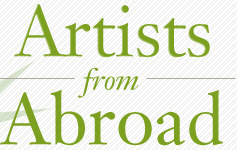 Artists from Abroad
Artists from AbroadArtists from Abroad is an online resource for foreign guest artists and performing arts organization. It also provides information on immigration and tax law for immigrant artists.
Asian American Artists Foundation (A3)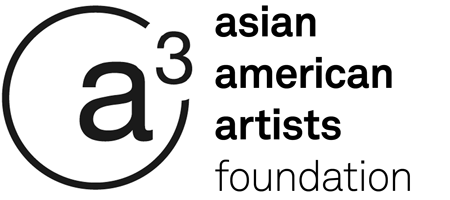 Asian American Artists Foundation (A3)
Asian American Artists Foundation (A3)The A3 Foundation invests in and fosters Asian American artists in media.
67 Sueños67 SueñosImmigrant youth-led organization that tackles issues impacting their communities through "artivism." The organization supports young people to express their own ideas for creating change in their community through the arts.
ARTogetherARTogetherOrganization that builds communities with refugees and immigrants that foster compassion, creativity and human connection.
Welcoming America & ArtPlaceWelcoming America & ArtPlaceIn an effort to identify and foster innovative models of collaboration between arts and immigration fields, ArtPlace announced a strategic partnership in 2018 with Welcoming America. ArtPlace and Welcoming America brought together over 30 national experts in arts and culture, community development, and the immigration sector to discuss strategies for advancing existing knowledge and practice at this intersection.
Infrastructure
-
The basic physical and organizational structures that allow society to operate--broadly termed our infrastructure--encompass everything from buildings and roads to complex social systems. The arts has a role to play in all of those aspects.
The intersection of the arts and infrastructure accrues economic and social impacts through arts infrastructure, such as performing arts centers and public art pieces as well as through the use of arts and culture to improve overall infrastructure in communities.
More recently, artists have begun to collaborate with government officials and businesses on infrastructure planning efforts to improve community engagement, increase equity in planning, and design innovative, unintrusive, and environmentally-friendly buildings.
Infrastructure is all around us, and the arts play a vital role in making that infrastructure as impactful and equitable as possible.
- Impact Points76% more growth in jobs and businesses
Research shows that when higher educational institutions invest in arts infrastructure, the communities around them experience at least 76% more growth in jobs and businesses than similar communities where the schools don't make that investment.
$1B+ annual economic impactCulture-based infrastructure overhauls have been shown to take blighted areas and turn them into economic powerhouses generating over $1B in economic impact each year, and increasing employment by 300%.
The arts foster public-private partnerships to strengthen infrastructure.In towns of all sizes, city councils and local government agencies often transcended traditional turfs and training to specifically to foster arts-driven downtown revitalization.
Markusen, A. and A Gadwa. "Arts and Culture in Urban or Regional Planning: A Review and Research Agenda. Journal of Planning Education and Research 29(3) 379–391. 383. Retrieved 4 May 2018 from http://journals.sagepub.com/doi/pdf/10.1177/0739456X09354380.
86% of arts participants want to get more involved in civic issues.Arts activities increase residents’ interest in getting involved in local issues and projects, including discussions of infrastructure. 86% of participants want to be involved in future projects and people living where projects occurred were more than twice as likely to be civically engaged as those whose blocks did not have projects.
Nicodemus, A., Engh, R., & Mascaro, C. (2016). Adding it Up: 52 Projects by 30+ Artists in 4 Neighborhoods. Metris Arts Consulting. Retrieved 20 January 2018 from https://issuu.com/metrisarts/docs/adding-it-up-final-draft-web
The arts improve livability.Research from the National Endowment for the Arts shows that increased presence per capita of arts and culture non-profits and arts and entertainment establishments correlates strongly with increased livability.
Morley, E., Winkler, M., Zhang, S., Brash, R., & Collazos, J. (2014). The Validating Arts and Livability Indicators (VALI) Study: Results and Recommendations [Electronic version]. National Endowment for the Arts. Retrieved 10 June 2024 from https://www.arts.gov/impact/research/publications/validating-arts-livab…
- Examples of Practice
Sidewalk Poetry
Sidewalk Poetry is a systems-based work that allows city residents to claim the sidewalks as their book pages. Over 1,000 entries have been stamped onto sidewalks from a collection that now includes 54 individual pieces all written by Saint Paul residents. Today, everyone in Saint Paul now lives within a 10-minute walk of a Sidewalk Poem.
A Sample poem on a sidewalk in St. Paul, MN.
Informational Kiosk and Signage Sculpture
Sculptor Joe Chirchirillo created an informational kiosk and signage sculpture on the corners of Main and Houghton streets, as well as West and Water streets.
The signage structure was influenced by signage on the campus of nearby Bennington College.
Housing2Home
Housing2Home, a joint program between The Haven and New City Arts, promotes stability among formerly-homeless clients by combining state-funded rental subsidies with creative interventions.
Front room area of one of the examples of art provided into a home in the program.
Art + Infrastructure
ART+ INFRASTRUCTURE is a public art project focused on adding vibrant art to lonely underpasses, quiet passageways, and often-forgotten structures.
Artist Gerard Pefung completing a mural for the Art + Infrastructure project.
Ask the River
Ask the River is a public art installation to inspire reconnection with the Connecticut River. The Downtown Brattleboro Alliance, in collaboration with several stakeholders, conceived of Ask the River to think about the Transportaiton Center Alleyway in new ways. The result was choreographed performances that animate the streets and walls of Brattleboro and Montpelier with streams of community members and 25-foot-long cyanotype banners. The banners are cut up into scarves and worn by a multitude of makers, connecting them and creating a convergence of river awareness. The Brattleboro town plan considers the importance of a path from the river into the town.
Observers of the panels installed as part of the Ask the River exhibit at the Brattleboro Museum.
- Reading List
Report: Art as Infrastructure
This report is an evaluation of a range of outcomes at the four sites in the Creative Graffiti Abatement Project in Los Angeles County. This report evaluates the success of arts-based strategies in shifting perceptions, increasing positive activity, reducing graffiti vandalism, building a sense of community ownership and building capacity for future arts and culture activities at the sites. While this report takes a summative approach to evaluating outcomes, the evaluator was embedded in planning and public engagement activities throughout the project, combining elements of a developmental evaluation approach with strategies from ethnographic inquiry. The report offers detailed recommendations for public art commissioning agencies, arts organizations, artists and evaluators implementing similar projects.
Arts, Transportation, & Infrastructure
Excerpted from Arts & America: Arts, Culture, and the Future of America’s Communities. This essay looks at how America’s transportation and building infrastructure will shift and transform over the next 10–15 years, as well as the role that the arts may play in positively impacting those changes. The full book of essays can be purchased in Americans for the Arts online store.
Art & Planning Toolkit: A Resource for Massachusetts Cities and Towns
The Toolkit [online] presents a menu of strategies grounded in case studies of real projects that are exemplary of how arts and culture can be an effective component of planning, community development, land use, housing, transportation, economic development, public health, and public safety projects and initiatives. [What is this Toolkit]
How Artists Help Build Equitable, Empathetic Infrastructure
This op-ed from Next City outlines the case for art as infrastructure, particularly in pursuit of equity.
- OrganizationsSmart Growth America
 Smart Growth America
Smart Growth AmericaSmart Growth America empowers communities through technical assistance, advocacy and thought leadership to create livable places, healthy people, and shared prosperity. We work with elected officials at all levels, real estate developers, chambers of commerce, transportation and urban planning professionals, and residents to improve everyday life for people across the country through better development.
Cultural Policy Center at NORC at the University of Chicago Cultural Policy Center at NORC at the University of ChicagoThe Cultural Policy Center's longest-running continuous project is research on the cultural infrastructure of the United States. This national study of the organizational decisions behind, implementation strategies for, and consequences of the building boom in museums, theaters, and performing arts centers in the U.S. between 1994 and 2008. It is the first comprehensive analysis of cultural building in the United States to be carried out at this scale and depth.Next City
Cultural Policy Center at NORC at the University of ChicagoThe Cultural Policy Center's longest-running continuous project is research on the cultural infrastructure of the United States. This national study of the organizational decisions behind, implementation strategies for, and consequences of the building boom in museums, theaters, and performing arts centers in the U.S. between 1994 and 2008. It is the first comprehensive analysis of cultural building in the United States to be carried out at this scale and depth.Next City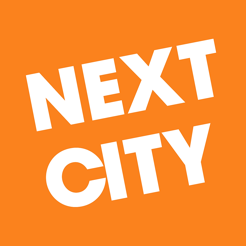 Next CityNext City is a journalism site and thinktank. Next City’s journalism centers marginalized voices while amplifying solutions to the problems that oppress people in cities. At a time when cities face rampant inequality and urgent challenges, Next City’s work as a nonprofit is critical: by spreading real stories and workable ideas from one city to the next, we connect people, places and solutions that move our society toward justice and equity.ArtPlace America
Next CityNext City is a journalism site and thinktank. Next City’s journalism centers marginalized voices while amplifying solutions to the problems that oppress people in cities. At a time when cities face rampant inequality and urgent challenges, Next City’s work as a nonprofit is critical: by spreading real stories and workable ideas from one city to the next, we connect people, places and solutions that move our society toward justice and equity.ArtPlace America ArtPlace America
ArtPlace AmericaArtPlace was a creative placemaking hub that includes a variety of resources on key areas of focus.
Community Arts Stabilization Trust Community Arts Stabilization TrustCommunity Arts Stabilization Trust purchases and leases space for the exclusive use of nonprofit arts organizations. Without our support, some of San Francisco’s most vital arts organizations might be forced to leave because of the rising cost of real estate.
Community Arts Stabilization TrustCommunity Arts Stabilization Trust purchases and leases space for the exclusive use of nonprofit arts organizations. Without our support, some of San Francisco’s most vital arts organizations might be forced to leave because of the rising cost of real estate.
Innovation
-
The progressive improvement of products, systems, and ways of working and living drive productivity, social and economic impact, and future success. These cornerstones of innovation are driven by creativity and culture.
The arts open new avenues of thinking, force people out of their comfort zone, create collaborative and non-hierarchical spaces for new thinking, and encourage imagination.
Even as the arts themselves must innovate, working with new forms of technology and ways of living, they inform the transformation of business, the social sector, education, and more.
Continuous innovation is essential to future survival, particularly in volatile times. The arts make that possible in more places and ways.
- Impact Points54% of innovators engage the arts to succeed.
Entrepreneurs producing new products engage art and design in more than half of cases.
Tether, B. Design in innovation: coming out from the shadow of R&D–an analysis of the UK Innovation Survey of 2005. DIUS Research Report 09–12, Tanaka Business School, Imperial College, University of London; 2009. Retrieved 10 June 2024 from https://www.bl.uk/collection-items/design-in-innovation-coming-out-from-the-shadow-of-rd
Arts-trained innovators are 74% more insightfulThe innovation outputs of teams who had arts-based training showed 111% greater insight into the challenge, a 74% greater ability to clearly identify a relevant problem, a 43% improvement in problem solving, and 68% more impact.
Hindi, N. "The Role of Art in Innovation Skills Development." (2016). Retrieved 10 June 2024 from https://www.linkedin.com/pulse/role-art-innovation-skills-development-nir-h-
The arts spark new ways of thinking and inventing.The arts help workers connect seemingly unrelated questions, problems, and ideas, driving innovation in the workplace.
Wojan TR, Nichols B (2018) Design, innovation, and rural creative places: Are the arts the cherry on top, or the secret sauce? PLoS ONE 13(2): e0192962. Retrieved 21 January 2022 from https://journals.plos.org/plosone/article?id=10.1371/journal.pone.0192962.
Creative thinkers generate more possible solutions.Research shows that high school students given creative interventions innovated more solutions to a proposed problem than those without.
Goldman, KH, Yalowitz, S, Wilcox, E. The impact of arts-based innovation training on the creative thinking skills, collaborative behaviors and innovation outcomes of adolescents and adults. A Research Study Report for The Art of Science Learning funded by National Science Foundation Grant DRL-122411, H. Seifter, Principal Investigator; 2016. Available from https://www.artofsciencelearning.org/wp-content/uploads/2016/08/AoSL-Research-Report-The-Impact-of-Arts-Based-Innovation-Training-release-copy.pdf
CEOs say creativity is the most essential leadership skill.A 2010 IBM survey of 1,500 CEOs from 60 countries and 33 industries worldwide revealed that creativity — more than rigor, management discipline, integrity or even vision — is the most essential leadership skill in an increasingly complex and interconnected world.
Gallagher, C. "The Link Between Art and Innovation." Politico (2013). Retrieved 15 February 2022 from https://www.politico.com/story/2013/04/the-link-between-art-and-innovation-089713
Students who engage with art are 30% more observantObservation drives innovation, and according to research from Yale University, students who engaged with art presented more object findings and were more fluid and innovative in their diagnosis of challenges--30% more!
Kelley, T. The Art of Innovation (2001).
- Examples of Practice
Ada
Ada is the first architectural pavilion project to incorporate artificial intelligence. Ada's knitted light immerses visitors in a responsive and interactive glow of photoluminescence driven by individual and collective human-expression data gathered and housed within Microsoft Research Building 99.
Ada in the Microsoft Research building.
Art Hack Day
Art Hack Day is an event for hackers whose medium is art and artists whose medium is technology held by the nonprofit organization of the same name.
A piece made during Art Hack Day in St. Louis, MO in 2017
Cyborg Arts Co-lab
The goal of the Cyborg Arts co-lab was to produce a tangible proof-of-concept artwork that could theoretically be turned into a cyborg sense (such as sight, feeling, etc). The results would be envisioned to be implanted inside the living tissue of a human animal but would only be built as a proof of concept.
Moon Ribas performing her piece Seismic Percussion.
Mycelia
Mycelia is a “think-and-do-tank” which seeks to empower a fair, sustainable, and vibrant music industry ecosystem involving all online music interaction services using blockchain. Its blog, What can blockchain really do for the music industry, explores its work.
Mycelia’s Carlotta de Ninni giving her views on blockchain
Visions of the Future
The Jet Propulsion Lab collaborated with 9 artists, designers, and illustrators to design travel posters advertising intergalactic travel destinations. The posters are made in the style of vintage national parks ads combining American nostalgia with futuristic views of space travel.
A poster in 1930s art deco style advertising a trip tp rogue planets
- Reading List
Tech as Art: Supporting Artists Who Use Technology as a Creative Medium
This report is the result of a two-year research initiative exploring the multifaceted creative practices of artists who engage with digital technologies. The research examines the creative infrastructure supporting tech-focused artistic practices and provides insight into the existing challenges and opportunities faced by artists and organizations working at the intersection of arts and technology. Tech as Art is part of an Arts & Technology Field Scan conducted by the National Endowment for the Arts in partnership with the Ford Foundation and the Knight Foundation
Rural Arts, Design, and Innovation in America
This report stemmed from a research collaboration with the Economic Research Service at the U.S. Department of Agriculture. It analyzes data from the Rural Establishment Innovation Survey to quantify relationships among arts organizations, design-integrated firms, and business innovators in rural settings
The Art of Innovation: How Fine Arts Graduates Contribute to Innovation
The art of innovation is the result of a nine- month study into the working lives of fine arts graduates and the ways in which they contribute to innovation, both within the arts and in the wider economy.
The Impact of Arts-Based Innovation Training on the Creative Thinking Skills, Collaborative Behaviors and Innovation Outcomes of Adolescents and Adults
The Art of Science Learning Project (AoSL) is a National Science Foundation (NSF)-funded initiative, founded and directed by Harvey Seifter, that uses the arts to spark creativity in science education and the development of an innovative 21st century STEM workforce. This research was guided by three main hypotheses: (1) Arts-based innovation training, compared to traditional innovation training, improves an individuals creative thinking skills including critical thinking, divergent thinking, problem identification, convergent thinking and problem solving; (2) Arts-based innovation training, compared to traditional innovation training, increases individual collaborative behaviors within a team context; and (3) Arts-based innovation training, compared to traditional innovation training, enhances the novelty, impact and feasibility of team innovations. In order to test these hypotheses, the research study used a quasi-experimental design with a pre-test, post-test intact group design, including a control group for comparison purposes.
- OrganizationsCenter for Cultural Innovation
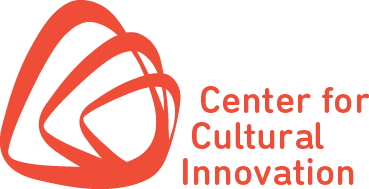 Center for Cultural Innovation
Center for Cultural InnovationThe Center for Cultural Innovation (CCI) was founded in 2001 as a California 501(c)3 nonprofit corporation. Its mission is to support individuals in the arts—artists, culture bearers, and creative entrepreneurs—to realize greater self determination so as to unfetter their productivity, free expression, and social impact, which contributes to shaping our collective national identity in ways that reflect the diversity of society.
Culture Tech Culture Tech
Culture TechCulture Tech is a company that is developing new mechanisms for securing the rights of artists in the digital space while also expanding access to their work.
Google Arts & Culture Google Arts & Culture
Google Arts & CultureGoogle Arts & Culture is a non-profit initiative that works with cultural institutions and artists around the world. Together, our mission is to preserve and bring the world’s art and culture online so it’s accessible to anyone, anywhere.
Nesta NestaNesta is the UK's innovation agency for good. They design, test and scale new solutions to society’s biggest problems, changing millions of lives for the better.Fast Company
NestaNesta is the UK's innovation agency for good. They design, test and scale new solutions to society’s biggest problems, changing millions of lives for the better.Fast Company Fast Company
Fast CompanyFast Company is a monthly American business magazine published in print and online that focuses on technology, business, and design. It publishes eight print issues per year.
Lifelong Learning
-
Learning doesn’t stop just because school does—at our best, humans are endlessly curious and constantly learning. The arts provide a gateway to an endless supply of new ideas for exploration.
The arts make every phase of life better and more fulfilling. Learning through the arts has proven benefits for participants at all stages of life.
Children, teens, adults, and seniors all gain from participation, and the whole community is positively impacted when arts participation rises. In addition to personal benefits to everyone from the very young to the elderly, the development of fuller and more empathetic perspectives on other cultures, other viewpoints, and the civic identity moves communities toward health, vibrancy, and equity.
In early childhood, the arts can boost IQ and get kids school-ready. As young people move toward adolescence, participating in arts programs shows significant improvement in conflict resolution, future orientation, critical response, and career readiness. Arts participation also correlates with higher rates of tolerance and lower rates of juvenile delinquency and truancy. For older adults, arts participation also leads to better physical and mental health, higher morale, lower risk of dementia, and better quality of life.
- Impact Points91% meet new people through the arts.
9 out of 10 arts participants report meeting new people and making new friends through their arts experiences.
Stern, M. & Seifert, S. (2001). Culture Builds Communities Evaluation Summary Report. Philadelphia: Penn School of Social Policy & Practice, University of Pennsylvania. Retrieved 16 May 2023 from https://core.ac.uk/download/pdf/214208983.pdf
Students who participate in the arts are 40% more likely to have diverse friends.Participation in arts activities increases tolerance. 12th graders who participate in the arts are 40% more likely to have friends from different racial groups and 29% less likely to feel that it is ok to make a racist remark.
Catterall, J., Dumais, S., & Hampden-Thompson, G. (2012). The Arts and Achievement in At-Risk Youth: Findings from Four Longitudinal Studies. (Research Report #55). National Endowment for the Arts. Retrieved 20 January 2018 from https://www.arts.gov/sites/default/files/Arts-At-Risk-Youth.pdf
Cultural participants 50% more likely to be involved in other community activities.Cultural participation leads to wider community participation. One study showed that participants most involved in cultural activities were 50% more likely to be involved in other (non-arts) community activities.
Seifert, S. & Stern, M. (2002, January 1). Culture Builds Communities, Evaluation: Summary Report [Electronic version]. Issuelab. Retrieved 17 February 2018 from https://repository.upenn.edu/cgi/viewcontent.cgi?article=1001&context=s…
Music training for 3-5 year olds ups their IQ.In early childhood, the arts have been implicated in improved IQ, spatial cognition, and numeracy compared to kids without the arts training.
Neville, H. "Effects of Music Training on Brain and Cognitive Development in Under-Privileged 3-to-5-Year-Old Children: Preliminary Results," in Learning, Arts, and the Brain, eds. Carolyn Asbury and Barbara Rich, 105-116.
More than 2x as likely to graduate college.The arts help people succeed. Low-income students who are highly engaged in the arts are more than twice as likely to graduate college than their peers with no arts education.
Arts Education Navigator: Facts & Figures. Americans for the Arts. Retrieved on 13 May 2018 from https://www.americansforthearts.org/by-program/networks-and-councils/ar….
The arts reduce the risk of dementia by up to 63%.Activities like dancing, playing an instrument, and reading lower the risk of dementia. Older adults who do at least 11 cognitive or physical activities per month are 63% less likely to have dementia.
Verghese, J. (2006). Cognitive and Mobility Profile of Older Social Dancers. Journal of the American Geriatrics Society 54(8), 1241.
- Examples of Practice
Steppenwolf Education
Steppenwolf Education creates productions and programs that are specifically geared to teachers, young adults, and families. The City Connection model brings Steppenwolf programing outside the theater wall and into the communities providing no-cost, barrier-free programing working to empower Chicagoland youth.
Young people working with Steppenwolf City Connection. Copyright Steppenwolf Theater
Elders Share the Arts (ESTA)
ESTA offers arts programming that ignites creative expression, cultivates elders' roles as bearers of history and culture, and connects them to their communities. It integrates reminiscence, oral history, and artmaking, and its residencies lead to developing and researching replicable programs.
copyright courtesy of Elders Share the Arts
Stagebridge
Stagebridge, the nation’s oldest theater company of older adults, provides professionally taught classes for adults over 50, entertainment and hands-on classes brought to community venues that serve both active and frail elders, and performance-based staff training to healthcare workers and senior services providers.
©Stagebridge, Stuart Kandell
Youth Speaks
Youth Speaks produces youth poetry slams, festivals, and reading series, alongside arts-in-education programs and theater and digital programming. It also has helped launch a national network of more than 70 programs addressing the power of youth.
20 Annual Brave New Voices, San Francisco. Photo by Rebekkah Lablue.
PALETTE
PALETTE, a program of Virginia Commonwealth University, connects students and senior adults through creative arts to promote positive aging and foster intergenerational relationships
Collaboration on painting project at Virginia Commonwealth University’s PALETTE program
- Reading List
The Arts and Human Development
On March 14, 2011, the National Endowment for the Arts (NEA) in partnership with the U.S. Department of Health and Human Services (HHS) hosted a convening in Washington, DC to showcase some of the nation’s most compelling studies and evidence-based programs that have identified cognitive, social, and behavioral outcomes from arts interventions.
This resulting white paper proposes a framework for long-term collaboration among the NEA, HHS, and oth - er federal agencies to build capacity for future research and evidence-sharing about the arts’ role in human development. A worthy aim of that collaboration is to foster data-driven models for including the arts in poli - cies and programs that seek to improve the well-being of Americans at different stages of their lives.
The Arts and Civic Engagement: Involved in Arts, Involved in Life
The Arts and Civic Engagement demonstrates with statistically reliable data that arts participation overwhelmingly correlates with positive individual and civic behaviors. Put simply, Americans who read books, visit museums, attend theater, and engage in other arts are more active in community life than those who do not.
The Creativity and Aging Study The Impact of Professionally Conducted Cultural Programs on Older Adults Final Report
In 2001, the National Endowment for the Arts developed a cooperative agreement with The George Washington University to conduct a multisite national study with the aim of measuring the impact of professionally conducted community based cultural programs on the general health, mental health, and social activities of older persons, age 65 and older. Referred to as the Creativity and Aging Study, the project’s formal title is “The Impact of Professionally Conducted Cultural Programs on Older Adults”. No previous study of this nature using an experimental design and a control group had been carried out. Results reveal strikingly positive differences in the intervention group (those involved in intensive participatory art programs) as compared to a control group not involved in intensive cultural programs.
Something to Say: Success Principles for Afterschool Arts Programs From Urban Youth and Other Experts
Something to Say: Success Principles for Afterschool Arts Pro-grams from Urban Youth and Other Experts endeavors to an-swer these questions. The primary way we approached this project was by seeing youth as consumers of OST activities, and taking many of our questions directly to them. In our research we spoke to young people in their neighborhoods and homes, interviewed researchers and youth development practitioners, visited highly effective programs, and combed the research to address some of the key knowledge gaps in the field of OST arts activities for urban, low-income tweens and teens. [Executive Summary, p. 11]
- OrganizationsAmerican Alliance for Theatre & Education (AATE)
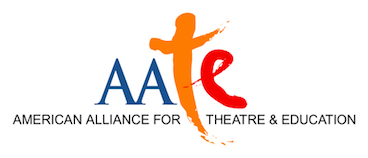 American Alliance for Theatre & Education (AATE)
American Alliance for Theatre & Education (AATE)AATE works to ensure that youth experience theater provided by talented artists and educators. Through its membership of theater artists, teachers, professors, directors, scholars, and playwrights, AATE provides services in 48 U.S. states and 19 countries.
National Center for Creative Aging (NCCA)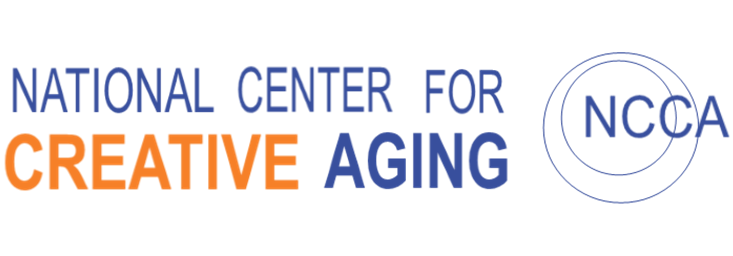 National Center for Creative Aging (NCCA)
National Center for Creative Aging (NCCA)The National Center for Creative Aging is dedicated to fostering an understanding of the vital relationship between creative expression and healthy aging and to developing programs that build on this understanding.
National Guild for Community Arts Education National Guild for Community Arts Education
National Guild for Community Arts EducationWorks to ensure that all people have opportunities to maximize their creative potential. It is increasingly focusing on creative aging and lifelong learning.
Vitality Arts/Aroha Philanthropies Vitality Arts/Aroha Philanthropies
Vitality Arts/Aroha PhilanthropiesThis program of Aroha Philanthropies compiles information on artful aging and funds projects centered on creative processes that bring connection, improve health and well-being, and provide a renewed sense of purpose to older adults in community and residential settings.
Creative Youth Development National Partnership Creative Youth Development National Partnership
Creative Youth Development National PartnershipA partnership of organizations working in concert with the broader field to drive collective action in three strategic priorities to advance creative youth development.
Livability
-
Livability is the sum of factors that affect a community’s quality of life—the environment, economy, social stability, education, and culture. In that mix, can you imagine a community without the arts?
Community livability is composed of economic, architectural, and cultural factors, as well as intangibles like community resilience and levels of citizen engagement. Indicators of livability including things like the capacity for homeownership, the average length of residency, the percentage of housing units that are occupied, voting rates, crime rate, and various measures of economic health and vitality.
The presence of arts organizations, along with opportunities to participate in artmaking, help improve livability immediately. Creative placemaking projects, especially those that involve residents in planning and design, affect livability indicators long term.
For example, participation in cultural activities leads to wider community participation and a greater propensity to volunteer, and creative placemaking projects positively affect residents’ feelings about their neighborhoods.
- Impact PointsCultural participants 50% more likely to be involved in other community activities.
Cultural participation leads to wider community participation. One study showed that participants most involved in cultural activities were 50% more likely to be involved in other (non-arts) community activities.
Seifert, S. & Stern, M. (2002, January 1). Culture Builds Communities, Evaluation: Summary Report [Electronic version]. Issuelab. Retrieved 17 February 2018 from https://repository.upenn.edu/cgi/viewcontent.cgi?article=1001&context=s…
The arts make community residents appreciate each other more.Creative placemaking projects have been making progress tracking outcomes related to livability. One study found that a majority of residents and business owners felt that the programs positively changed their feelings about the neighborhood.
National Endowment for the Arts. (n.d.). Baltimore, MD: Revitalizing Station North. Retrieved 19 February 2018 from https://www.arts.gov/exploring-our-town/revitalizing-station-north
The arts improve livability.Research from the National Endowment for the Arts shows that increased presence per capita of arts and culture non-profits and arts and entertainment establishments correlates strongly with increased livability.
Morley, E., Winkler, M., Zhang, S., Brash, R., & Collazos, J. (2014). The Validating Arts and Livability Indicators (VALI) Study: Results and Recommendations [Electronic version]. National Endowment for the Arts. Retrieved 10 June 2024 from https://www.arts.gov/impact/research/publications/validating-arts-livab…
Cultural participants are 2x as likely to volunteer.Volunteerism within a community is a sure sign of civic pride and engagement, which are crucial to livability. Research shows that arts participants are more than twice as likely to volunteer as those who do not participate in the arts--a trend that holds across artforms and regardless of demographics.
National Endowment for the Arts. (2007). The Arts and Civic Engagement: Involved in Arts, Involved in Life [Electronic version]. Retrieved 16 February 2018 from https://www.arts.gov/sites/default/files/CivicEngagement.pdf
The arts attract residents and businesses.The density of arts organizations and prevalence of arts events plays a role in attracting residents and businesses to (re)locate to a community by improving its image and making it more appealing.
Walesh, Kim and Doug Henton. 2001. "The Creative Community--Leveraging Creativity and Cultural Participation for Silicon Valley's Economic and Civic Future." San Jose, CA: Collaborative Economics.
More trust and appreciation among residents.Intra-community trust is a major component of livability. Research shows that by collaborating on art-making and beautification efforts that benefit a shared neighborhood, residents can increase feelings of trust and appreciation of each other.
Williams, Deidre. 1995. Creating social capital : a study of the long-term benefits from community based arts funding. Adelaide, S. Aust.: Community Arts Network of South Australia.
- Examples of Practice
Hennepin Cultural Corridor
The Hennepin Avenue corridor, designated as a business improvement district, is important for the city’s vitality. City officials reached out to neighborhood organizations, businesses, and cultural institutions to be part of a public dialogue about the area’s future.
The City of Minneapolis is investing in improvements to Hennepin Avenue to ensure it is a functional and vibrant space.
Meeting Place
As a city employee, artist Marty Pottenger noticed that public meetings were either poorly attended or did not reflect the diversity of residents. Thus, Meeting Place was born. It partners with neighborhood associations and artists to connect with residents who reflect their communities’ diversity and to create art that celebrate each area.
Graffiti artist Tim Clorius gathers with Maine Muslim Community Center members before Portland’s first Somali Poetry Slam, from Art At Work’s Meeting Place project. Photo by Marty Pottenger.
Southeast Houston Arts Initiative
The Southeast Houston Arts Initiative was formed to transform its community through improvements to the physical environment by cultural expression projects. The four guiding principles were personal and environmental health, cultural history, urban connectivity, and community organization empowerment.
Photo by Patrick Peters
- Reading List
The Arts in Neighborhood Choice
To better understand the impact of local arts and cultural events on Americans’ choices about where to live, researchers at the National Endowment for the Arts worked with the U.S. Department of Housing and Urban Development (HUD) to ask a series of questions as part of the 2015 American Housing Survey (AHS). The AHS is a HUD-sponsored national household survey that the U.S. Census Bureau (Census) administers every two years. The questions were designed to measure the value that U.S. residents place on living convenient to arts and cultural events, householder satisfaction with access to such events, and householder perceptions of the social and economic impacts of these events on their neighborhoods.
Soul of the Community 2010
The study provides empirical evidence that the drivers that create emotional bonds between people and their community are consistent in virtually every city and can be reduced to just a few categories. Interestingly, the usual suspects — jobs, the economy, and safety — are not among the top drivers. Rather, people consistently give higher ratings for elements that relate directly to their daily quality of life: an area’s physical beauty, opportunities for socializing, and a community’s openness to all people. [from Introduction]
Validating Arts and Livability Indicators Study
The report examines the research on NEA Our Town projects to determine whether proposed indicators were the correct ones for measuring project impact.
Creative Placemaking
This white paper summarizes two decades of creative American placemaking, drawing on original economic research and case studies of pathbreaking initiatives in large and small cities, metropolitan to rural, as well as published accounts. The case studies stretch from Providence, Rhode Island, to Los Angeles, California, and from Arnaudville, Louisiana, and Fond du Lac, Minnesota, to Seattle, Washington. Each reveals a distinctive strategy that succeeded when initiators built partnerships across sectors, missions, and levels of government, leveraging funds from diverse sources and programs.
National Cultural Districts Exchange
The creation of cultural districts, which involves the concerted effort to put in place programs, policies, and systems that encourage the flourishing of culture in communities, is a driver of livability. This exchange provides resources, examples, and connections.
LivabilityWhile primarily an online magazine, Livability is also a clearinghouse for a lot of information about what makes small-to-midsize cities great places to live, including aggregated reporting, primary research, and discussion forums on a variety of topics.
- OrganizationsArtPlace America
 ArtPlace America
ArtPlace AmericaArtPlace was a creative placemaking hub that includes a variety of resources on key areas of focus.
Livability Livability
LivabilityWhile primarily an online magazine, Livability is also a clearinghouse for a lot of information about what makes small-to-midsize cities great places to live, including aggregated reporting, primary research, and discussion forums on a variety of topics.
The Creative City Network of Canada The Creative City Network of Canada
The Creative City Network of CanadaThe Creative City Network of Canada (CCNC) is a Canadian national nonprofit organization made up of municipalities, arts organizations, and individuals working to support cultural development in their communities. CCNC facilitates knowledge sharing professional development in the field of local cultural policy, planning, and research.
Military
-
Members of our armed forces sacrifice for us, and in turn we must ease their burdens, celebrate their bravery, and nurture their continued health. The arts promote healing helping us serve our nation’s military personnel, veterans, and their families.
The arts are essential for the health and well-being of our active duty service members, Veterans, their families and caregivers across the military continuum. The arts promote readiness and resilience from pre-deployment to deployment, and provide viable employment opportunities and marketable skills for reentry and reintegration into the civilian workforce after military service.
While there are many examples of the arts and the military coming together for entertainment purposes like the USO, the integration of the arts can address the physical and mental well-being and recovery of military personnel.
Creative arts therapies are proven to increase the recovery rates of service members with physical, mental, and moral injuries. Arts and military based activities in communities facilitate the difficult transition from military to civilian life for veterans, their families and caregivers, providing socialization, and fostering positive meaningful relationships that bridge the military/civilian divide.
- Impact Points66% say art therapy improved their depression.
Two out of three soldiers who have been treated with art therapy say it improved their depression.
Graves, G. (2008). Group Art Therapy for Patients with Traumatic Brain Injuries: A Pilot Study. Retrieved 19 February 2018 from https://www.slideshare.net/rhepadmin/group-art-therapy-for-patients-wit…
Art therapies yield an 83% decrease in reported stress levels.The arts can play a powerful role in treating the physical and psychological impact of Traumatic Brain Injury (TBI). Art therapies address effects of TBI, yielding a 66% improvement with depression, 50% improvement with anxiety, and 83% decrease of stress.
Americans for the Arts. (2013). Arts, Health, and Well-being Across the Military Continuum: White Paper and Framing a National Plan For Action [Electronic version]. Americans for the Arts/National Initiative for Arts & Health in the Military, 23. Retrieved 19 February 2018 from AFTA. Arts, Health and Well-Being across the Military Continuum: White Paper and Framing a National Plan For Action.
More than 8 out of 10 say art therapy helps.85% of military patients who have access to art therapy say it was helpful in their healing.
National Endowment for the Arts. (n.d.). Creative Forces: NEA Military Health Arts Network. Retrieved 19 February 2018 from https://www.arts.gov/partnerships/creative-forces/why-healing-arts
Art therapies could save the military more than $1.7 billion.Art therapies could save the US military billions of dollars in healthcare costs. Evidence-based treatments, e.g., art therapies, for PTS and major depression could save the US as much as $1.7 billion, or more than $1,000 per veteran.
Americans for the Arts, 2013.
The arts help veterans reintegrate.Creative writing helps returning veterans with re-entry to civilian life. Veterans who participated in expressive writing experienced greater reductions in PTSD symptoms, distress, anger, physical complaints, and reintegration difficulty compared with veterans who did not write at all.
Sayer, N., Noorbaloochi, S., Frazier, P., Pennebaker, J., Orazem, R., Schnuff, P., et al. (2015, October 28). Randomized Controlled Trial of Online Expressive Writing to Address Readjustment Difficulties Among U.S. Afghanistan and Iraq War Veterans. PubMed.gov, 28(5): 381–390. Retrieved 19 February 2018 from https://www.ncbi.nlm.nih.gov/pubmed/26467326
The arts rank in the top 5 for most helpful treatments.Over a year and a half at the National Intrepid Center of Excellence at Walter Reed Medical Center in Maryland, service members ranked art therapy in the top 5 "most helpful in their recovery" of approximately 40 treatment options.
Walker, M., Jones, J., Drass, J., & Kaimal, G. (2017, November). Art Therapy for Active Duty Service Members with Traumatic Brain Injury & Post-Traumatic Stress Disorder. International Journal of Art Therapy. Retrieved 19 February 2018 from http://www.tandfonline.com/doi/full/10.1080/17454832.2017.1388263
The arts inspire new thinking in military treatments.The US Army created new Systemic Operation Design based on principles of design thinking. Despite being involved in two wars, it thought the process important enough to experiment with and adapt it, document and teach it, apply it in the field, and prescribe it across the entire organization.
Ryan, A. (2016, November 4). A Personal Reflection on Introducing Design to the US Army. The Overlap. Blog retrieved 19 February 2018 from https://medium.com/the-overlap/a-personal-reflection-on-introducing-des…
- Examples of Practice
MusiCorp
MusiCorp helps wounded soldiers learn to play an instrument as a core part of their rehabilitation. The success of the program has led to the creation of the Wounded Warrior Band, comprised of injured veterans who became musicians through MusiCorps.
Cpl Josh Cawthorn, USMC (ret), and Spc Nathan Kalwicki USA (ret). Photo by SSgt Tim Brown, USMC (ret). Courtesy of MusiCorps
The Veterans Project: A Long Journey Home by Diavolo
The Veterans Project is equal parts community, creativity, and discovery. This dance program aims to use the practice of movement arts to restore core inner strengths that have been diminished by trauma and help participants transition back into civilian life.
The Veterans Project. Photo by George Simian. Courtesy of Diavolo.
The Telling Project
Through performance, The Telling Project puts veterans and military family members in front of their communities to share their stories. The program gives veterans and military family members the opportunity to speak, and gives their communities the opportunity to listen.
elling: Austin, TX, with Anisa Moyo (foreground) talking about her experiences as a medic deployed to Iraq, Mexican American Cultural Center, Austin, TX, 2013. Written by Jonathan Wei, directed by Stacey Shade Waren
Veterans Art Project
The program offers bronze and ceramics classes to veterans and their families and advocates. These classes are intended to teach artmaking skills and also to utilize the process as a medium to connect veterans with each other and their communities.
image caption: Meaning in Bronze Exhibition at Oceanside Museum of Art
Theater of War
Theater of War Productions presents community-specific, theater-based projects that confront topics such as combat-related psychological injury, end-of-life care, police and community relations, prison reform, gun violence, domestic violence, sexual assault, and substance abuse and addiction.
Theater of War performance at Fort Drum, New York
- Reading List
Arts Deployed: an Action Guide for Community Arts & Military Programming
A collaboration between AFTA’s National Initiative on Arts & Health and the Military and the Local Arts Advancement departments, Arts Deployed is a guide for arts organizations and artists interested in bringing creative arts programming to military and Veteran communities, their caregivers, and families.
Arts, Health, and Well-Being Across the Military Continuum - White Paper and Framing a National Plan for Action
Published in October, 2013 the report, Arts, Health, and Well-Being Across the Military Continuum - White Paper and Framing a National Plan for Action, details a series of recommendations in the areas of research, practice, and policy that came out of two national convenings. The convening were The Arts and Health in the Military National Roundtable (November 2012) and the National Summit: Arts, Health, and Well-Being Across the Military Continuum.
Engaging Veterans through Creative Expression: Oklahoma Arts and the Military Initiative Pilot Program Evaluation Catalogue
A evaluation catalogue that can assist individuals and organizations in providing programming for veterans and military members in their communities. It consists a University of Oklahoma program evaluation of the pilot arts program for residents at the Norman Veterans Center, offered through a collaboration of the Oklahoma Arts Council and Oklahoma Department of Veterans Affairs.
The Arts: Promising Solutions for Meeting the Challenges Facing Today's Military - Then and Now
A Briefing Paper prepared for the National Roundtable for Arts, Health and Well-being Across the Military Continuum, November 30, 2016.
State Arts & Military Initiatives Strategy Sampler
This strategy sampler summarizes existing policy goals, services and relationships of SAAs and RAOs working to support military and veteran populations through the arts. It also highlights programmatic issues and other challenges these agencies face in rea lizing their arts and military goals .
- OrganizationsCreative Forces: National Endowment for the Arts Military Healing Arts Network
 Creative Forces: National Endowment for the Arts Military Healing Arts Network
Creative Forces: National Endowment for the Arts Military Healing Arts NetworkThe Network serves active military personnel and veterans by bringing arts therapists into the core of patient-centered care. Service members use visual arts therapy, music therapy, and therapeutic writing to help address emotional, physical, and neurological challenges.
National Initiative for Arts & Health in the Military National Initiative for Arts & Health in the Military
National Initiative for Arts & Health in the MilitaryThis initiative works across military, government, private, and nonprofit sectors to raise visibility and support of arts and health in the military and advance the arts as tools for health for military staff, family members, and veterans.
Creative Arts Program at Walter Reed National Military Medical Center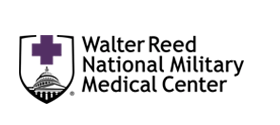 Creative Arts Program at Walter Reed National Military Medical Center
Creative Arts Program at Walter Reed National Military Medical CenterThe program is committed to creating a world-class arts program that advances the field of arts and health while serving its patients and their families and caregivers through state-of-the-art models and best practices.
Planning
-
The planning and directing of a community’s growth, engagement, and development requires ingenuity, broad communication, and the sharing of a common vision.
The arts are proven to inspire and to bridge differences to make more things possible. The arts can provide creative tools to help planning and urban design professionals engage with communities affected by their projects. Using storytelling, visual arts, and technology tools, community members can play a significant role in designing safe, beautiful, and useful spaces that reflect community needs and desires.
Collaborative planning toward a common goal helps communities develop a sense of social cohesion. Design processes that engage the community create ownership among residents. There is a significant correlation between how attached people feel to the place they live and GDP growth. And arts districts help retain vernacular culture, helping to arrest the homogenization that makes cities less livable.
All in all, integrating the arts into the planning of our spaces and places can make them more human, more accessible, and more innovative over time.
- Impact Points20% want to participate in planning more after arts engagement.
Research shows that 20% of people who engaged in participatory arts felt differently about their rights after participating.
Matarasso, F. (1997). Use or Ornament? The Social Impact of Participation in the Arts [Electronic version]. Comedia. Retrieved 23 February 2018 from https://www.americansforthearts.org/node/100680
The arts make people more aware of their rights and their community.A study in the United Kingdom found that 20% of people who engaged in participatory arts felt differently about their rights after participating.
Matarasso, F. (1997). Use or Ornament? The Social Impact of Participation in the Arts [Electronic version]. Comedia. Retrieved 10 June 2024 from https://www.americansforthearts.org/node/100680
Arts participation unites generations, reduces fear, and empowers citizens.Arts participation has a positive effect on social cohesion by bringing generations together, encouraging partnerships and intercultural understanding, reducing fear of crime, and fostering organizational skills. People report feeling more in control of their lives and more activated as citizens.
Jeannotte, S. "Singing Alone? The Contribution of Cultural Capital to Social Cohesion and Sustainable Communities." The International Journal of Cultural Policy, 9(1) 35-49. Retrieved 16 May 2023 from https://www.tandfonline.com/doi/full/10.1080/1028663032000089507?scroll…
Community-engaged design processes create increased ownership among participants.Arts-based community design processes make people ownership over what happens.When people have a sense of ownership of the places they frequent, their communities become better places to live, work, and visit.
Project for Public Places. (2000). How to Turn a Place Around. New York: Project for Public Spaces.
Arts and culture breaks down barriers across demographic and socioeconomic lines.According to the American Planning Association, integrating arts and culture into planning processes places community identity at the fore, engages participants more fully, and breaks down barriers to communication across demographic and socioeconomic lines.
American Planning Association. "The Role of the Arts and Culture in Planning Practice." (2011) Retrieved 18 May 2018 from https://planning-org-uploaded-media.s3.amazonaws.com/publication/downlo…
The arts foster public-private partnerships to strengthen infrastructure.In towns of all sizes, city councils and local government agencies often transcended traditional turfs and training to specifically to foster arts-driven downtown revitalization.
Markusen, A. and A Gadwa. "Arts and Culture in Urban or Regional Planning: A Review and Research Agenda. Journal of Planning Education and Research 29(3) 379–391. 383. Retrieved 4 May 2018 from http://journals.sagepub.com/doi/pdf/10.1177/0739456X09354380.
- Examples of Practice
Department of Play
Department of Play creates temporary play zones in public spaces. Participants envision alternative futures, share experiences, and collaboratively create artifacts. It seeks to frame the city as a malleable, ongoing construction that any resident can experiment with and impact.
Boxtopia, Codman Square, Boston, June 2015. Courtesy of Department of Play.
GO TO 2040
GO TO 2040 is a regional transportation plan that was created with creative public engagement. Nearly 20,000 participants were engaged though public workshops, online tools, kiosks, and fairs and festivals.
Courtesy of Chicago Metropolitan Agency for Planning (CMAP).
Market Street Prototyping Festival
The Festival believes in collaboration and experimentation and was born to make Market Street a more vibrant, connected destination. The City has committed to redesigned sidewalks and Street Life Zones, which are reimagined and activated during the Festival.
Common Ground prototype at MSPF 2016, Cloud Arch Studio, courtesy of Market Street Prototyping Festival.
Imagine Fergus Falls
This collaborative, community-wide planning effort, developed by Springboard for the Arts and a variety of local partners, re-envisioned a rural community through the arts.
courtesy of Springboard for the Arts
- Reading List
The Role of Arts and Culture in Planning Practice
In this series of briefing papers, the American Planning Association — as part of a collaborative project with the RMC Research Corporation and with funding from the Rockefeller Foundation — illustrates how planners can work with partners in the arts and culture sector and use creative strategies to achieve economic, social, environmental, and community goals.
How Creativity and Culture Can Contribute to Community Planning
This paper from the National Endowment for the Arts, written by Springboard for the Arts' Laura Zabel, explores different strategies and techniques for integrating the arts into planning.
Soul of the Community 2010
The study provides empirical evidence that the drivers that create emotional bonds between people and their community are consistent in virtually every city and can be reduced to just a few categories. Interestingly, the usual suspects — jobs, the economy, and safety — are not among the top drivers. Rather, people consistently give higher ratings for elements that relate directly to their daily quality of life: an area’s physical beauty, opportunities for socializing, and a community’s openness to all people. [from Introduction]
The Fourth Pillar of Sustainability: Culture's Essential Role in Public Planning
Explores the many different ways that culture affects and relates to patterns of human activities and policy realms.Art & Planning Toolkit: A Resource for Massachusetts Cities and Towns
The Toolkit [online] presents a menu of strategies grounded in case studies of real projects that are exemplary of how arts and culture can be an effective component of planning, community development, land use, housing, transportation, economic development, public health, and public safety projects and initiatives. [What is this Toolkit]
- OrganizationsArtPlace America
 ArtPlace America
ArtPlace AmericaArtPlace was a creative placemaking hub that includes a variety of resources on key areas of focus.
American Planning Association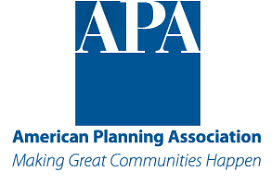 American Planning Association
American Planning AssociationThe APA has events, research, and resources available on arts-based planning, and is also the national service organization for planners.
Project for Public Spaces (PPS)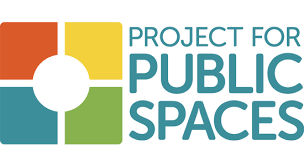 Project for Public Spaces (PPS)
Project for Public Spaces (PPS)PPS is a nonprofit planning, design, and educational organization dedicated to helping people create and sustain public spaces that build stronger communities.
Springboard for the Arts Springboard for the Arts
Springboard for the ArtsSpringboard for the Arts offers resources, workshops, and tool kits for artists of all disciplines to thrive and for communities to connect to artists. It also has a set of projects that intersect with planning, including Imagine Fergus Falls and the Irrigate project.
Metropolitan Area Planning Council (MAPC) Metropolitan Area Planning Council (MAPC)
Metropolitan Area Planning Council (MAPC)The Metropolitan Area Planning Council (MAPC) is the regional planning agency serving the people who live and work in the 101 cities and towns of Metropolitan Boston, and exists to promote smart growth in regional planning, including through the integration of arts and culture.
Political Activation
-
An enlightened, politically activated citizenry is essential to the functioning of our country. The arts inspire such activation, increase involvement, and drive higher rates of voting.
Protestors and political activists come to their rallies and marches armed with banners and signs, often displaying creative slogans to give visuals to their cause. When political activism intersects with the arts, it finds expression for the passions of those seeking justice and social change.
We’ve seen such cohesion between the arts and social justice in people who have risen to fight for the rights of immigrants, responsible gun legislation, LGBT rights, civil rights, and more. There has never been a political movement that did not converge around a core set of imagery meant to articulate core values, nor a political movement that has succeeded that did not use the vehicles of arts and culture to amplify and clarify the goals and messages of the movement.
Art-goers in general are far more likely to vote, and those who work in the arts even more so. In addition, people who engaged in participatory arts felt differently about their rights afterward, with more wanting to continue to engage in local community projects. Furthermore, research shows that the right imagery can transform a person’s stance more quickly and more completely than text alone.
- Impact Points20% more likely to vote
Art-goers are far more likely to vote. American adults who attend art museums or live arts performances are 20% more likely to vote than nonattendees.
National Endowment for the Arts. (2009, October). Art-Goers in Their Communities: Patterns of Civic and Social Engagement (Research Note 98) [Electronic version]. Retrieved 23 February 2018 from https://www.arts.gov/sites/default/files/98.pdf
Arts-based activism doubles attention longer and triples engagement from onlookers.Arts-based activism holds the attention of people almost 2x as long, makes them 3x as likely to engage, and almost doubles the number who take action.
Stephen Duncombe & Silas Harrebye (2021) The Copenhagen Experiment: testing the effectiveness of creative vs. conventional forms of activism, Social Movement Studies, DOI: 10.1080/14742837.2021.1967125
97% of arts administrators vote.People who lead arts agencies locally are 2x as likely to have voted in a federal election, and 4x as likely to have voted in a local or state election, as the general population.
Lord, C. (2017). Baseline Demographic Survey of the Local Arts Field 2017. Published by Americans for the Arts. Retrieved 11 May 2018 from https://www.americansforthearts.org/node/100044
The arts make people more aware of their rights and their community.A study in the United Kingdom found that 20% of people who engaged in participatory arts felt differently about their rights after participating.
Matarasso, F. (1997). Use or Ornament? The Social Impact of Participation in the Arts [Electronic version]. Comedia. Retrieved 10 June 2024 from https://www.americansforthearts.org/node/100680
Young arts participants are 2x as likely to plan to register to vote.Young people engaged in participatory arts are highly motivated to vote. A study of young artists found that 84% of participants were likely or very likely to vote when eligible/in the next election, compared to just 44% of 18-24 year old who voted in the previous election.
Flinders, M. & Cunningham, M. (2014). Participatory Arts and Political Engagement [Electronic version]. UK: Arts & Humanities Research Council. Retrieved 15 May 2023 from https://www.americansforthearts.org/sites/default/files/AHRC_Cultural_V…
The arts increase a person's desire to participate in improving their community.Following engagement in the arts, 63% of participants indicated that they had become more aware of, and more interested in remedying, local challenges.
Matarasso, F. (1997).
- Examples of Practice
The AIDS Memorial Quilt
The Quilt was conceived of by Cleve Jones after attending a march following the assassinations of San Francisco Supervisor Harvey Milk and Mayor George Moscone. Placards bearing the names of AIDS victims were taped to the San Francisco Federal Building and resembled a quilt
Unfolders at Quilt display, Washington, DC, 2012. Courtesy of The NAMES Project.For Freedoms
ForFreedoms is an artist-driven super PAC, which combines political and cultural production to inspire deeper civic engagement from the public. It creates advertising campaigns that have appeared on billboards, bus stops, park benches, lawn signs, and art galleries across the United States.
For Freedoms poster. Courtesy of For Freedoms, Artists Bayaté Ross Smith and Kameelah Janan Rasheed.
Penumbra Theatre Summer Institute
This three-year leadership development project trains teens to use their passion for the arts to promote social justice and equity. The students in turn enrich their communities by standing up, speaking out, and moving those who listen with the power of performance.
August Wilson's Jitney, performed by Penumbra Theatre. Photo by Allen Weeks
Artist Campaign School
Artist Campaign School recruits, trains, and mentors artists and those in the cultural community to run for and hold elected office.
"This is What Democracy Looks Like." Image via Artists Campaign School
Theatre of the Oppressed NYC (TONY)
TONY partners with communities facing discrimination to inspire transformative action through theater. It organizes theater troupes in collaboration with local communities—homeless adults and youth, people living with HIV/AIDS, immigrants, veterans, etc. It also hosts an annual legislative theater festival, which advocates for specific legislative outcomes.
Legislative Theatre 2017: Day 2 (Concrete Justice Troupe), University Settlement, NYC, 2017. Photo by Will O’Hare. Courtesy of Theatre of the Oppressed NYC
- Reading List
Art-Goers in Their Communities: Patterns of Civic and Social Engagement
This report from the National Endowment for the Arts explores the relationship between people who particpate in arts and culture to their invovlement in civic life.
The Arts and Civic Engagement: Involved in Arts, Involved in Life
The Arts and Civic Engagement demonstrates with statistically reliable data that arts participation overwhelmingly correlates with positive individual and civic behaviors. Put simply, Americans who read books, visit museums, attend theater, and engage in other arts are more active in community life than those who do not.
Mixing Pop (Culture) and Politics”: Cultural Resistance, Culture Jamming, and Anti-Consumption Activism as Critical Public Pedagogy
"We theorize how culture jamming as practiced operates as critical public pedagogy, through the ways in which it (1) fosters participatory, resistant cultural production; (2) engages learners corporeally; (3) creates a (poetic) community politic; and (4) opens tran-sitional spaces through détournement (a “turning around”)." [Abstract p. 323]
Participatory Arts and Political Engagement
Our research coupled empirical and desk research to explore the relationship between participatory arts and political engagement. Although undertaken within the confines of a relatively small Development Project, both empirical and desk research showed a positive correlation, particularly in relation to informal forms of participation and personal political engagement. [Executive Summary p. 2]
Arts, Political Activation, & Immigration
Excerpted from Arts & America: Arts, Culture, and the Future of America’s Communities. This essay looks at the role of arts in political activism and immigration over the next 10 to 15 years. The full book of essays can be purchased in Americans for the Arts online store.
- OrganizationsThe Center for Artistic Activism (C4AA)
 The Center for Artistic Activism (C4AA)
The Center for Artistic Activism (C4AA)CFAA is a place to explore, analyze, and strengthen connections between social activism and artistic practice. It trains people to apply artistic principles to social justice organizing techniques.
Vera List Center for Arts and Politics Vera List Center for Arts and Politics
Vera List Center for Arts and PoliticsEstablished at the New School, the Vera List Center is a research center and public forum for art, culture, and politics. It fosters a diverse community of artists, scholars, and policymakers who work to bring about positive change.
US Department of Arts and Culture (USDAC)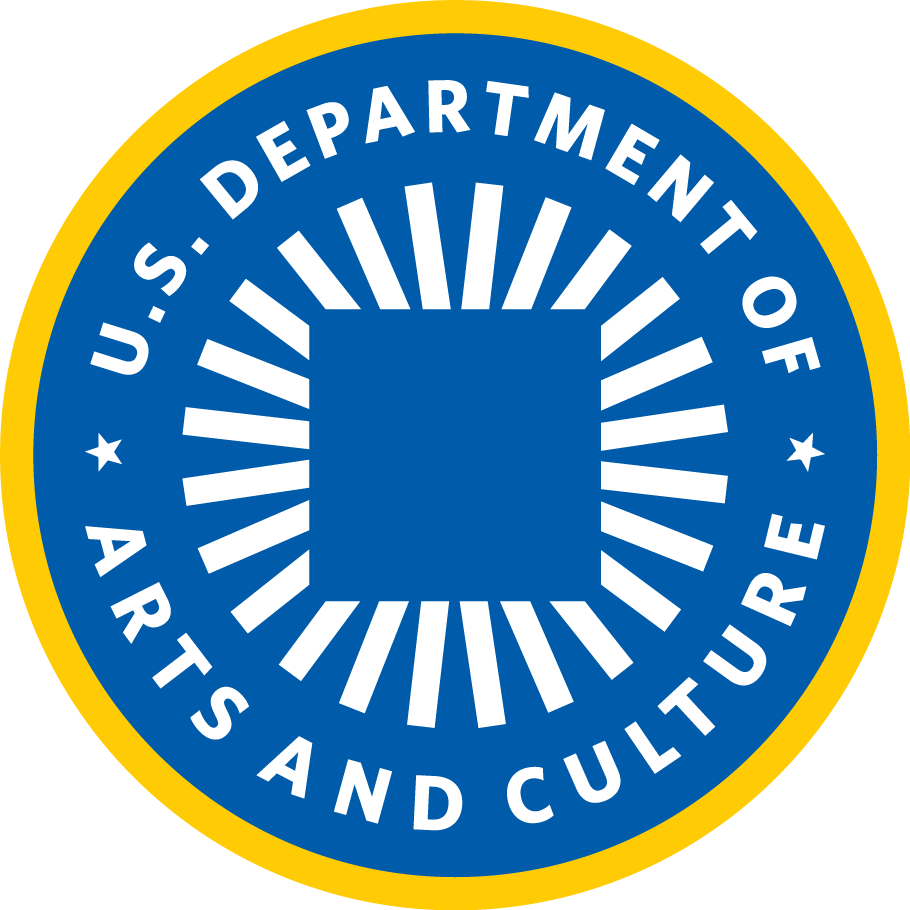 US Department of Arts and Culture (USDAC)
US Department of Arts and Culture (USDAC)USDAC is a grassroots network of citizen-artists committed to “inciting creativity and social imagination to shape a culture of empathy, equity, and belonging.” It is non-centralized, with members across the country working independently toward a common cause.
Animating Democracy Animating Democracy
Animating DemocracyA program of Americans for the Arts that that brings national visibility to arts for change work, builds knowledge about quality practice, and creates useful resources.
Rafael Cintron Ortiz Latino Cultural Center, University of Illinois, Chicago Rafael Cintron Ortiz Latino Cultural Center, University of Illinois, Chicago
Rafael Cintron Ortiz Latino Cultural Center, University of Illinois, ChicagoThe Latino Cultural Center was founded in 1976 and works to help communities deepen their understanding of Latino cultures, increase civic engagement, and harness community knowledge and assets to build coalitions for positive social change.
Prisons & Rehabilitation
-
Incarceration is intended to punish individuals for violating criminal laws, but with an estimated 2.4 million people in U.S. prisons on any given day, the art may provide ways to reduce these numbers.
The United States has 5 percent of the world's population but 25 percent of its prisoners. As we struggle to overcome the many problem associated with this reality, the arts have not only become a proven way to discuss these issues and break down barriers that divide us to find solutions, but they have also become a tool for driving successful rehabilitation programs which reduce the number of return offenders to the prison system.
Arts programs in prisons offer inmates opportunities for self-expression and self-reflection and teach valuable social and emotional life skills. Arts participation lowers racial tension and decreases disciplinary problems and recidivism.
Adult and juvenile offenders who participate in arts programs are more motivated to participate in other kinds of rehabilitation programs and more likely to report positive interactions with others.
In a time when prison populations are growing and the number of repeat offenders is at an all-time high, solutions offered by art programs in prisons could be a major factor in turning the tide.
- Impact PointsArts program participation reduces recidivism by up to 30%.
Arts programs significantly reduce recidivism. Studies in California showed that six months after release rates of parole violation for arts-in-corrections participants were 15% lower than nonparticipants. After two years this difference climbed to 30%.
California Department of Corrections, n.d.
Participation in arts programs results in 75% fewer infractions.Participation in arts programs reduces disciplinary infractions by adult inmates. In a California study, 75% of program participants had fewer infractions than nonparticipants.
Brewster, L. (1983). An Evaluation of the Arts-in-Corrections Program of the California Department of Corrections [Electronic version]. Santa Cruz, CA: William James Association. Retrieved 25 February 2018 from www.williamjamesassociation.org/reports/Brewster_report_full.pdf
The arts encourage better communication, lower racial tension, and improved relationships.Participation in arts programs improves inmates’ ability to understand their own emotions, feel safe expressing themselves, and communicate effectively, all key factors in rehabilitation. Participants also report lowered racial tension and improved relationships with each other and with guards.
Brewster, L., William James Association, & California Lawyers for the Arts. (2017). Arts-in-Corrections: County Jails Project [Electronic version]. California Lawyers for the Arts. Retrieved 20 June 2024 from https://ww2.americansforthearts.org/publications/arts-corrections-count…
Incarcerated youth in arts programs showed 25-39% improvement in social skills.Youth participating in arts programs show significant improvement in social and emotional learning skills, e.g., conflict resolution, future orientation, critical response, and career readiness. Youth participants measured 25–39% higher on these key skills after completing the program.
Chicago Community Trust. (2015). Arts Infusion Initiative, 2010–15: Evaluation Report [Electronic version]. Chicago: Chicago Community Trust. Retrieved 25 February 2018 from https://www.americansforthearts.org/node/100815
Arts participation increases participation in other activities.More than half of arts-in-corrections participants in a California study reported that the self-confidence they gained in the arts programs motivated them to participate in other educational and vocational opportunities.
Brewster, L. (2014, January). California Prison Arts: a Quantitative Evaluation [Electronic version]. (Available from California Lawyers for the Arts). Retrieved 25 February 2018 from https://www.calawyersforthearts.org/uploads/2/1/4/4/21445988/larry_brew…
- Examples of Practice
Each One Reach One
Each One Reach One uses mentor-based performing arts, academic tutoring, and life skills workshops to break the cycle of violence, change the image incarcerated youth have of themselves, and divert them from a life in prison to become productive community members.
Rehersal for upcoming play at Each On Reach One in San Francisco, CA
Prison Creative Arts Project (PCAP)
Housed in the University of Michigan, PCAP works with community members both inside and outside prisons to engage in writing, visual, and performing arts workshops. It hosts a prisoner art exhibition and publishes a literary journal of writing by incarcerated authors.
Formerly incarcerated artists sharing their experiences with gallery visitors at the Artist Panel at the exhibition of Art by Michigan Prisoners, moderated by PCAP Curator Charlie Michaels. Photo by Scott Tompkins
Shakespeare Behind Bars
Shakespeare Behind Bars is a prison theater troupe working with adult and juvenile inmates in Kentucky and Michigan. It offers programs with personal and social issues to incarcerated and post-incarcerated community members, teaching them life skills to ensure their reintegration into society.
Julius Caesar, 2017, directed by Matt Wallace. Inmate cast at Luther Luckett Correctional Complex. Photo by Holly Stone. Courtesy of Shakespeare Behind Bars.
- Reading List
California Prison Arts: A Quantitative Evaluation
This report presents results from a quantitative evaluation of prison arts education.
Arts Infusion Initiative, 2010–15: Evaluation Report
In 2010, an ambitious model for social change emerged in Chicago that aimed to connect detained youth and those at risk for incarceration (“at-risk youth”1) to rigorous and engaging arts instruction, infused with social and emotional learning goals. Dubbed the Arts Infusion Initiative, the Chicago Community Trust (“the Trust”) spearheaded and funded this five year, $2.5 million demonstration while earning cooperation from the local detention facility, public school system, community policing office, and community arts program leaders to integrate arts programming into youths’ school and after school environments. Since its launch, the Arts Infusion Initiative2 has served more than 2,000 youth at an average annual cost of $700 per teen, linking them to high performing arts instruction associated with significant increases in social and emotional learning. [p. 3]
Arts-In-Corrections: County Jails Project
This report shares the results of evluation of 12 to 18 week art classes attended by 64 men hel in the Santa Cruz Main Jail, San Francisco County Jail - San Bruno Complex, MCJ Twin Towers Correctional Facility in Los Angeles, Fresno County Jail and Sacramento County Jail - Rio Cosumnes Correctional Center.
Arts, Prisons, & Rehabilitation
Excerpted from Arts & America: Arts, Culture, and the Future of America’s Communities. This essay looks at changes in the American prison system and the role that the arts may play in positively impacting those changes over the next 10–15 years. The full book of essays can be purchased in Americans for the Arts online store.
Our Voices Count: The Potential Impact of Strength-Based Music Programs in Juvenile Justice Settings
Our Voices Count: The Potential Impact of Strength-Based Music Programs in Juvenile Justice Settings"...the work reported here suggests that activities like ensemble music-making may allow youth to discover and act on their strengths. As one choir member admitted, 'I had fear in my heart, but I had to sing through it.' Correspondingly, it is time for cultural oranizations and researchers to match that bravery by developing robust strength-based programs, along with the research designs and measures that will help to articualte if, why, and under what conditions arts recognize, build, and sustain young people's talents and resources" (Palmer Wolf & Holochwost 5).
Mass Incarceration: The Whole Pie 2018
This report offers some much needed clarity by piecing together this country’s disparate systems of confinement. The American criminal justice system holds almost 2.3 million people in 1,719 state prisons, 102 federal prisons, 1,852 juvenile correctional facilities, 3,163 local jails, and 80 Indian Country jails as well as in military prisons, immigration detention facilities, civil commitment centers, state psychiatric hospitals, and prisons in the U.S. territories.1 And we go deeper to provide further detail on why people are locked up in all of those different types of facilities. [p. 1]
Prison Arts Resource Project: An Annotated Bibliography
The Prison Arts Resource Project (PARP) is an annotated bibliography of evidence-based studies that evaluate the impact of arts programs in U.S. correctional settings. [p. 4]
- OrganizationsArts for Youth Incarceration Network (AIYN)
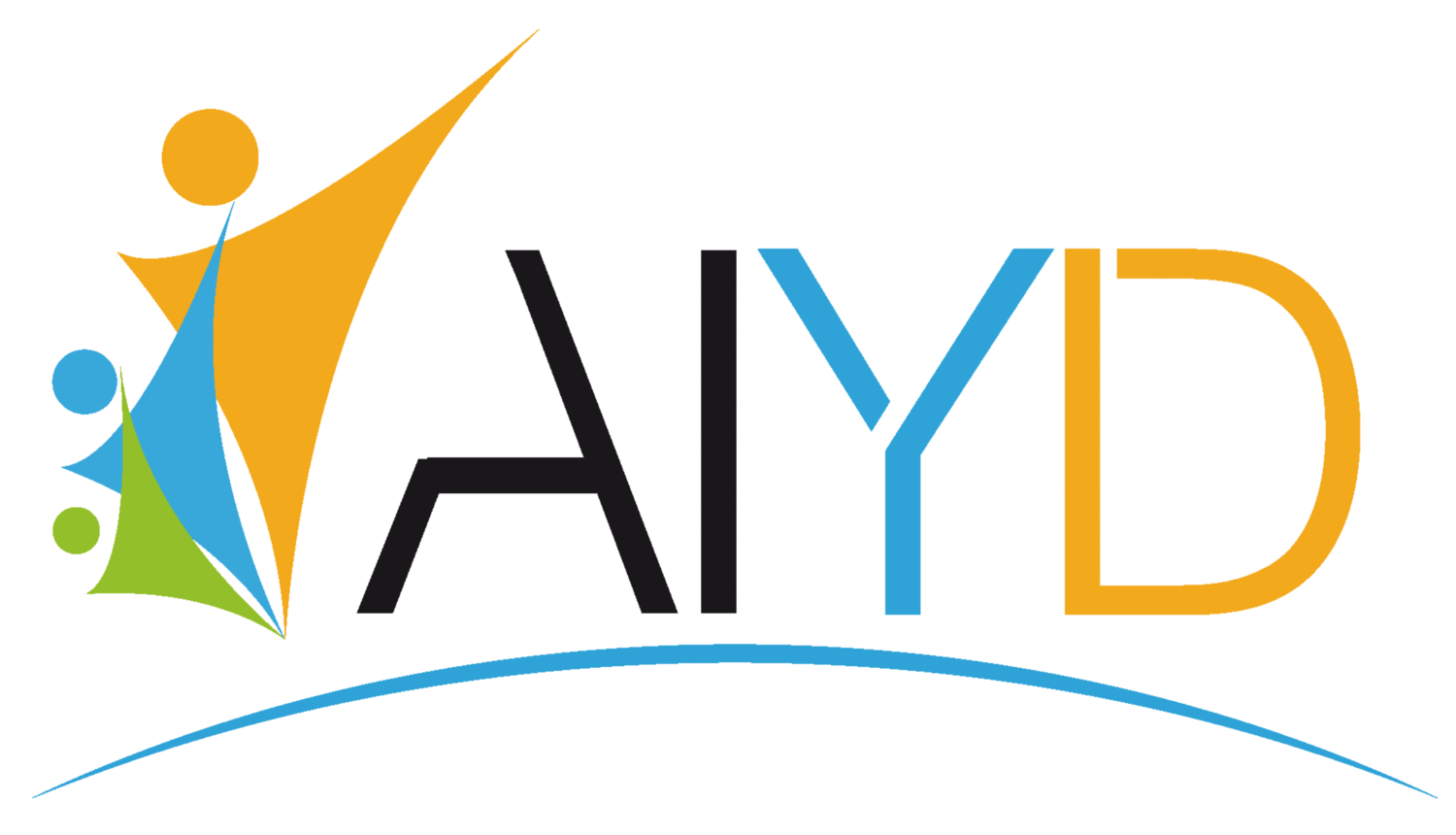 Arts for Youth Incarceration Network (AIYN)
Arts for Youth Incarceration Network (AIYN)A California-based interdisciplinary collaborative that provides exceptional arts programming in order to build resiliency and wellness, eliminate recidivism, and transform the juvenile justice system.
Prison Arts Coalition Prison Arts Coalition
Prison Arts CoalitionThe Prison Arts Coalition is a national network providing information and resources for people creating art in and around the U.S. prison system.
Create Justice Create Justice
Create JusticeAn initiative led by Carnegie Hall and the Arts for Incarcerated Youth Network in Los Angeles, Create Justice brings together a diverse group of artists, young people, policymakers, funders, nonprofits, and researchers from across the country to share ideas and work side-by-side to leverage the power of the arts for youth justice and reform
Arts-in-Corrections/California Arts Council Arts-in-Corrections/California Arts Council
Arts-in-Corrections/California Arts CouncilArts-In-Corrections, an initiative of the California Arts Council, provides arts programing in all state-run prisons in California. This website is a useful resource for program examples and research links.
Prison Policy Initiative Prison Policy Initiative
Prison Policy InitiativeA nonprofit, non-partisan organization that produces cutting edge research to expose the broader harm of mass criminalization, and then sparks advocacy campaigns to create a more just society.
Shakespeare in Prisons Network Shakespeare in Prisons Network
Shakespeare in Prisons NetworkThe Shakespeare in Prisons Network (SPN) serves as a global forum for the prison and community arts practitioner community; promotes the production and study of the plays of William Shakespeare within prison and alternative settings; and advocates on a local, national, and international level on behalf of organizations engaged in arts programming for and by incarcerated and nontraditional populations.
Public Welfare
-
One of our number one concerns as Americans is our safety and the safety of our families and communities. The arts inspire community pride and mutual trust, provide alternative activities, and help make places healthier and safer.
Public welfare addresses the stability and financial viability of families and individuals and the support services in place for them. Arts and culture can help meet public safety goals by improving neighborhood livability and reducing violence and criminal activity. The arts also provide a pathway for communities to articulate needs and organize for change.
Neighborhood arts projects help to build community trust and cohesion and also make it more likely that residents will participate in the community in other ways. People feel safer in communities with art and have more community pride.
Arts participation correlates with lower rates of juvenile delinquency and truancy, and cultural resources are linked to better health, schooling, and security. Arts also help maintain racial and economic diversity and lower rates of racial harassment.
- Impact PointsNeighborhoods with high arts participation are in the top 25% in terms of safety.
Arts participation correlates with lower rates of juvenile delinquency and truancy. Disadvantaged nieghborhoods that have the highest rates of arts participation consistently have among the lowest rates of juvenile delinquency incidents.
Stern, M. & Seifert, S. (2002, January). Culture Builds Community Evaluation: Summary Report [Electronic version]. Philadelphia, PA: University of Pennsylvania Social Impact of the Arts Project. Retrieved 27 February 2018 from
The arts instill community trust and cohesion.Arts participation in neighborhood arts projects helps to build trust, a key measurement of social capital and civic engagement. A Philadelphia study of the Porchlight project shows a substantial increase in social cohesion and trust in neighborhoods where murals were installed.
Tebes, J., Matlin, S., Hunter, B., Thompson, A., Prince, D., & Mohatt, N. (2016). Porch Light Program: Final Evaluation Report [Electronic version]. New Haven, CT: Yale University School of Medicine. Retrieved 28 February 2018 from https://www.muralarts.org/program/porch-light/
Arts participants are 50% more active in their communities.Cultural participation leads to wider community participation. Participants most involved in cultural activities are 50% more likely to be involved in other (non-arts) community activities and are more than twice as likely to volunteer.
National Endowment for the Arts. (2007). The Arts and Civic Engagement: Involved in Arts, Involved in Life [Electronic version]. Retrieved 16 February 2018 from https://www.arts.gov/sites/default/files/CivicEngagement.pdf
Arts-rich communities have 18% less serious crime and 14% fewer reports of abuse and neglect.A NY study shows that lower-income neighborhoods with higher cultural assets show less child abuse and neglect investigations (14%), obesity (5%), and serious crime (18%). Kids from those communities also scored 18% higher in English Language Arts and Math exams than their peers.
Social Impact of the Arts Project. (2017, February). Culture and Social Wellbeing in New York City: Highlights of a two-year research project [Electronic version]. University of Pennsylvania. Retrieved 27 February 2018 from repository.upenn.edu/siap_culture_nyc
Cultural participants are 2x as likely to volunteer.Volunteerism within a community is a sure sign of civic pride and engagement, which are crucial to livability. Research shows that arts participants are more than twice as likely to volunteer as those who do not participate in the arts--a trend that holds across artforms and regardless of demographics.
National Endowment for the Arts. (2007). The Arts and Civic Engagement: Involved in Arts, Involved in Life [Electronic version]. Retrieved 16 February 2018 from https://www.arts.gov/sites/default/files/CivicEngagement.pdf
The arts encourage empathy.Research has shown that exposure to stories of other cultural experiences, such as through literary fiction, significantly increases empathy and the ability to see another person's point of view.
Kidd, David & Castano, Emanuele. (2013). Reading Literary Fiction Improves Theory of Mind. Science (New York, N.Y.). 342. Retrieved 22 August 2023 from https://www.science.org/doi/10.1126/science.1239918
- Examples of Practice
New Orleans Arts Council Youth Solutions (YS)
Youth Solutions is a collaborative youth development initiative that addresses youth trauma and disconnect, neighborhood blight, and under-investment. It uses local artists as change agents to implement neighborhood projects.
Youth Solutions design interns present a concept for a bus stop shelter to design instructor Jebney Lewis. Courtesy of Arts Council New Orleans.
Seeing Spartanburg in a New Light
Seeing Spartanburg is a public art project that uses light installations in nine neighborhoods to improve safety and community pride. It is a collaboration between an installation artist, community groups, city government, and a wide range of residents.
Islands of Light by artist Erwin Redl. Photo courtesy of Chapman Cultural Center.
Tamms Year Ten
Tamms Year Ten—a coalition of current and former inmates, families, artists, and others—was created to protest the policies at Tamms C-MAX prison and to call for an end to psychological torture. It initiated cultural, educational, and political events that called attention to abuses and led to the closing of the prison.
Visions from Solitary: Prisoners’ Imaginations Made Real By Activists’ Photographs. Courtesy of Prison Photography.
Youth Resiliency Institute (YRI)
YRI offers mentoring, training, and development services to create civically engaged, cross-generational teams of community-based advocates who work toward forming stronger communities in Baltimore. One goals is to build the foundation for activism, community regeneration, and grassroots public policy development.
Courtesy of Youth Resiliency Institute.
Porch Light
This joint collaboration between Mural Arts, the City of Philadelphia's Department of Behavioral Health, and Intellectual Disability Services focuses on achieving universal health and wellness among Philadelphians through meaningful works of public art.
Sanctuary © 2016 Mural Arts Philadelphia / James Burns. Photo by Steve Weinik.
- Reading List
Culture and Social Wellbeing in New York City: Highlights of a Two-Year Research Project
Understanding the social value of the arts and culture in New York City neighborhoods was the goal of the research undertaken between 2014 and 2017 by Penn's Social Impact of the Arts Project (SIAP) in collaboration with Reinvestment Fund. This brief is a summary of the conceptual framework, data and methodology, findings and implications of the research discussed in the full report--The Social Wellbeing of New York City's Neighborhoods: The Contributions of Culture and the Arts (March 2017).
Exploring the Ways Arts and Culture Intersect with Public Safety
One of a number of field scans conducted by ArtPlace, this paper summarizes research and best practices in the intersection of arts and public safety.
Porch Light Program: Final Evaluation Report
This study report from Yale University's School of Medicine examined Mural Arts' Porch Light Program with a rigorous scientific method and shares the results of that research.
The Creative Community Builder's Handbook: How to Transform Communities Using Local Assets, Arts and Culture
The Creative Community Builder's Handbook gives you successful strategies, best practices, and "how-to" guidance to turn cultural gems into effective community change. The text delves into key principles of community development and presents 20 case studies from across the U.S. In addition, it lays out five steps to assessing, planning, and implementing creative community building projects.
5 Ways Arts Projects Can Improve Struggling Communities
This excerpt from Tom Borrup's book The Creative Community Builder's Handbook offers up a set of case studies about creating healthier and safer communities through the arts.
- OrganizationsArtPlace America
 ArtPlace America
ArtPlace AmericaArtPlace was a creative placemaking hub that includes a variety of resources on key areas of focus.
Create Justice Create Justice
Create JusticeAn initiative led by Carnegie Hall and the Arts for Incarcerated Youth Network in Los Angeles, Create Justice brings together a diverse group of artists, young people, policymakers, funders, nonprofits, and researchers from across the country to share ideas and work side-by-side to leverage the power of the arts for youth justice and reform
Urban Institute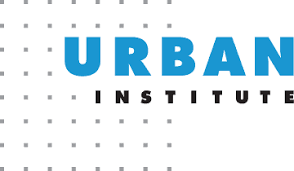 Urban Institute
Urban InstituteThe Urban Institute has a variety of focuses, including around arts and culture, all working toward its mission to open minds, shape decisions, and offer solutions through economic and social policy research.
Mural Arts Philadelphia Mural Arts Philadelphia
Mural Arts PhiladelphiaMural Arts is the nation's largest public art program, dedicated to the belief that art ignites change. It is the home of the Porch Light project, which centers on improving community health through public art.
Religion & Spiritual Well-Being
-
The way we practice religion or maintain our spiritual health within a community or as individuals is deeply personal. This history of art, spirituality, and religion are deeply intertwined, and throughout this long history the arts have been a resilient instrument fortifying religious practices.
The intersection of the arts and religion is as old as spiritual practice itself. All art forms have served as teaching tools, instruments for praise and worship, and revelatory mechanisms. For centuries, religious institutions have also been primary funding partners of art making, and have played central roles in informal or personal practice, including choirs, fabric arts, writing, and social dancing.
The perceived liberal/conservative challenges of this moment run counter to a long and fruitful history of collaboration. Artifice continues to sit at the center of most faith traditions, and the creation of awe and wonder continue to drive a lot of art.
Involving arts in religious practice increases attendance, deepens spiritual understanding, and promotes tolerance. Moreover, the pairing of religion and the arts is a powerful way to provide a “third space” for youth and promote pro-social behavior.
- Impact Points85% of places of worship incorporate art.
Religious practice is enhanced with art. Six out of every seven places of worship (85%) sponsor artistic activities each year.
ibid.
3-out-of-4 churchgoers want more art.About 75% of church members say churches should encourage the artistic talents of their members as part of their practice, and about 50% said that churches would benefit from incorporating new forms of music and art.
Cultural Policy and the Arts National Data Archive. 2003. "Places of Worship as Venues for Artistic Activities." Princeton, NJ: Cultural Policy and the Arts National Data Archive.” Retrieved 9 February 2018 from http://www.thearda.com/Archive/Files/Descriptions/ARTS.asp
64% of churches saw attendance increase with music integration.Two out of three churches with worship practices that incorporate praise bands reported an increase in attendance.
Survey: How to Get People to Attend Church More Often. Software Advice. Retrieved 2 April 2018 from https://www.softwareadvice.com/resources/survey-get-people-attend-churc…
47% of churchgoers say more art would make them attend more.Almost half of all churchgoers said that incorporating more music would motivate them to attend church more often.
Reformed Church in America. The Theology and Place of Music in Worship [Electronic version]. Retrieved 9 February 2018 from https://www.faithward.org/the-theology-and-place-of-music-in-worship/
Singing in a choir improves your quality of life.Participating in a choir or religious singing group significantly improves your quality of life, according to several studies. Singing in a choir offers opportunities for social relationships, social support, emotional expression, and relaxation.
Johnson, J. et al. (2013, Aug 21). Quality of life (QOL) of older adult community choral singers in Finland. International Psychogeriatrics. Retrieved 2 April 2018 from https://www.ncbi.nlm.nih.gov/pmc/articles/PMC3748797/
- Examples of Practice
Aura at the Notre-Dame Basilica
This collaboration between Moment Factor and the Basilique Notre-Dame de Montreal is a 45-minute light and projection show conducted nightly inside a 200-year-old church. Originally created in 2016, the spectacle’s mission is to encourage spectators to discover the beauty and richness of the Basilica through art.
A light and music extravaganza has been created in Montreal's Notre-Dame Basilica. Image: Moment Factory
Dancing for the Gods
The Bharatanatyam, one of the oldest Hindu dances, communicates religious stories through movement and expression and is accompanied by music and singing. Dancing for the Gods is an interactive multimedia website dedicated to Bharatanatyam and brings the form to K-12 classrooms.
Preeti Vasudevan performs in Stories by Hand. Photo by Maria Baranova. Courtesy of Thresh Inc.
Liturgical Arts Conference
The Liturgical Arts Conference believes that all aspects of worship—from vestment making and mandalas to music and Stations of the Cross—are part of liturgy. It offers artistic guidance for those wishing to deepen their service in these realms.
Instructor Suzanne Shleck leads the class Icons: The Gospel in Lines and Color. Photo by the Rev. Jennifer Deaton. Courtesy of Gray Center.
Namgyal Monastery Institute of Buddhist Studies
A sand mandala, created using Tibetan iconography, is used as a tool for consecrating the earth and its inhabitants and provides a visual framework for establishing the mind of the Buddha. Namgyal Monastery creates these mandalas for exhibition worldwide.
Johnson Museum Cornell Namgyal Monastery mandala
Art as Spiritual Practice
Art as Spiritual Practice at the Benedictine Center of St. Paul's Monastery is a collection of the monastic community's art pieces, selected not because of their monetary worth but because they accent the Divine gesture of creativity. The Gallery features a collection by Sisters of the monastery.
Resident artist S. Virginia Matter OSB sculpting a figure.
- Reading List
All in Sync: How Music and Art Are Revitalizing American Religion
"All in Sync mounts a refreshingly thoughtful challenge to the conventional wisdom that contemporary art and religion are mutually hostile spheres. In this balanced and accessible work of scholarship, Professor Wuthnow shows why he is one of the most astute observers of religious trends in America today."—Gustav Niebuhr, former national religion correspondent for The New York Times
Music in American Religious Experience
This book studies the ways in which music shapes the distinctive presence of religion in the United States and Canada.
The Oxford Handbook of Religion and the Arts
The Oxford Handbook of Religion and the Artsdraws on the best international scholarship to open up cross-disciplinary conversation of a wide range of artistic ways of being religious, and of religious ways of being artistic.
Philosophy, Art, and Religion: Understanding Faith and Creativity
'Gordon Graham's Philosophy, Art, and Religion has a claim to being the best book on art and religion published over the past several decades. The book's philosophical thought and prose are exceptional.' Nicholas Wolterstorff, Noah Porter Professor of Philosophical Theology Emeritus, Yale University, Connecticut
Art As Religious Studies
Twelve teachers were asked to write a lecture from their course in religion and art. These essays, with an introduction by the editors, constitute the book.
The History of Dance in the Church
This long form essay discusses the history of dance in the church and the theological perspectives of dance.
The Search for the Spiritual through Art, Cincinnati, OHThis partnership started as a biannual series of Jewish, Christian, and Islamic art. Audiences perceived the art as non-threatening, and it engendered conversation. The program is currently on hiatus, but the team is planning to reboot due to popular demand.
- OrganizationsSociety for the Arts in Religious and Theological Studies (SARTS)
 Society for the Arts in Religious and Theological Studies (SARTS)
Society for the Arts in Religious and Theological Studies (SARTS)This academic society of scholars, clergy, and artists are interested in the interrelationships among theology, religious studies, spirituality, and the arts. It works to foster collaboration to support scholarship, artistic ministries, and engaged classrooms.
Faith on ViewFaith on ViewFaith on View has gathered resources for those who are interested in the intersection of art and Christianity.
American Guild of Judaic Art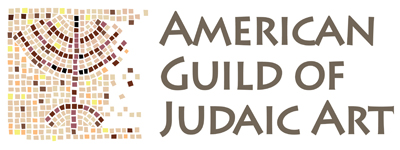 American Guild of Judaic Art
American Guild of Judaic ArtFounded in 1991 in New York City, the American Guild of Judaic Art’s continuing mission is to promote awareness of fine art and craft objects created in the Jewish spirit.
Museum of Contemporary Religious Art (MOCRA)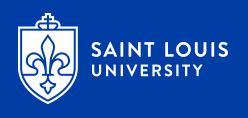 Museum of Contemporary Religious Art (MOCRA)
Museum of Contemporary Religious Art (MOCRA)Saint Louis University’s MOCRA is an interfaith museum of contemporary art that engages religious and spiritual themes. It is dedicated to dialogue between artists and faith traditions, and to serving as a forum for interfaith understanding.
The Brehm Center's Visual Faith Institute The Brehm Center's Visual Faith Institute
The Brehm Center's Visual Faith InstituteThe Visual Faith Institute is a study and exhibition center that seeks to encourage Christian engagement with the visual arts, including supporting visual artists, helping Christians understand the role of the visual arts in the renewal of culture and worship and displaying excellent art at that intersection.
The History of Dance in the Church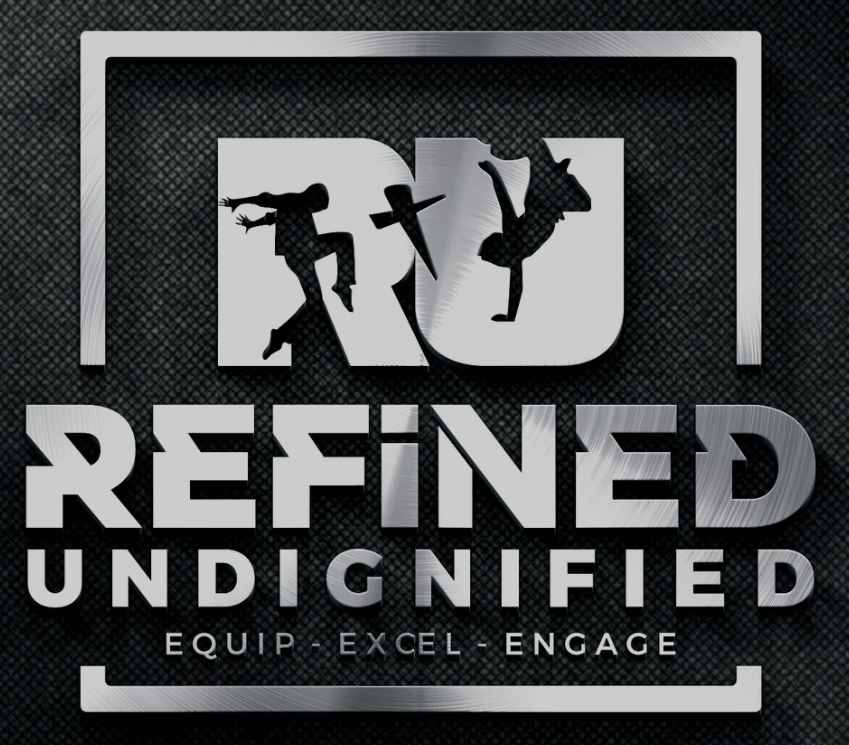 The History of Dance in the Church
The History of Dance in the ChurchRefined/Undignified is a discipleship program that seeks to equip students to be spiritual leaders and excel in dance.
Science
-
Studying, discovering, documenting, and explaining aspects of the world in which we live through science is crucial to our progress as humans and society. It also is engaged strongly with creativity, artistic representation, and design.
Arts and science benefit each other. Artistic practice hones skills, teaches innovation, patience, and creativity, and sparks new ways of thinking about and navigating scientific problems.
The arts also help explain complex concepts to the general public, drive increases in confidence among learning scientists, and help illuminate analytical challenges in creative ways.
The arts are not opposite of science--the two are closely linked, and are responsible for major breakthroughs and broader understanding of the world.
- Impact Points105% retention of science content through the arts
Research shows that students exposed to scientific concepts through artmaking retain it more and for longer--even months later!
https://releases.jhu.edu/2019/03/05/singing-for-science-how-the-arts-can-help-students-who-struggle-most/
The arts can make complex concepts accessible.Researchers have found that artist-created visualizations of complex scientific concepts not only help the general public better understand--the help the scientists themselves understand the meaning of the data and devise next steps.
Wilson, S. (2002). Information Arts: Intserctions of Art, Science, and Technology. MIT Press: 37.
A scientist is more likely to be a Nobel laureate if they also are artists.Compared with other researchers, proportionately more Nobel prizewinners and members of the US National Academies pursued interests such as arts, theatre, or creative writing.
https://scholar.google.com/scholar_lookup?title=&journal=J.%20Psychol.%20Sci.%20Tech.&volume=1&pages=51-63&publication_year=2008&author=Root-Bernstein%2CR.
Arts and crafts help train scientists to be more effective and confident in the lab.Research shows that chemistry students who are trained on how to cook are more likely to be confident in their abilities in chemistry.
https://www.nature.com/articles/d41586-021-00334-2
Humans process visuals 15 times faster than text--in as little as 13 milliseconds!The way complex concepts like climate change and sustainability of the environment are presented is crucial in convincing people of the urgency. Using the arts can drastically increase comprehension.
Jacobsen, E. Comment on "The 60,000 Fallacy." Retrieved 4 May 2018 from https://policyviz.com/2015/09/17/the-60000-fallacy/.
8% higher sales growth when arts and science are combined.Research shows that firms that merge arts and science skills in the workforce had more sales growth than science-only firms.
Siepel J, Camerani R, Pellegrino G, Masucci M. The fusion effect: the economic returns to combining arts and science skills. A report for Nesta. London: Nesta; 2016.
- Examples of Practice
Configuration Spaces of Rigid Origami
Configuration Spaces of Rigid Origami explores the intersection between origami, the ancient Japanese art of paper folding, and mathematics to predict how materials fold.
An origami model constructed of multiple phizz units.
Community Engagement in Science Through Art - Glukupikron
Students in the 2016 iteration of the Community Engagement in Science Through Art program created a steel sculpture titled 'Glukupikron' meaning "sweet-bitter". The structure is an abstraction of an imaginary molecule that combines glucose (sugar) and phenylthiocarbamide (a bitter tasting molecule). Through this piece, the students were playing with the idea that chemistry is life and life is bittersweet. The piece also featured an interactive augmented reality component in which visitors could direct a smart device (smart phone, ipad, etc) at the hole in the structure to receive chemistry fact, poetry, and prose that relates to the concept of bittersweet chemistry.
A photo of the Glukupikron sculpture at its unveiling.
Community Engagement in Science Through Art - The Brain Complex
Students in the 2019 iteration of the Community Engagement in Science Through Art program created a four-piece sculpture that represents the lobes of the brain. Each lobe contains a peep hole that allows visitors to peer inside to see artistic representations of chemical processes that occur in the brain.
Photo of the finished Brain Complex sculpture
The Mathenaeum
The Mathenaeum is an interactive exhibit at the National Museum of Mathematics that presents math in a visual, artistic and creative manner, allowing visitors of all ages to apply a pallet of operations to transform basic mathematical shapes into unique three-dimensional digital sculptures.
Children interacting with the Mathenaeum exhibit to transform basic shapes into three dimensional sculptures
The Sound Digestive System: A Strategy for Music and Sound Composition
Sound Digestive System is an audio visual project that uses the digestive system processes into algorithmic sound composition.
The Sound Digestive System with nine food particles being digested at different intervals.
- Reading List
The Integration of the Humanities and Arts with Sciences, Engineering, and Medicine in Higher Education
The National Academies of Sciences, Engineering, and Medicine have released the report, The Integration of the Humanities and Arts with Sciences, Engineering, and Medicine in Higher Education. This report examines the evidence behind the assertion that educational programs that mutually integrate learning experiences in the humanities and arts with science, technology, engineering, mathematics, and medicine (STEMM) lead to improved educational and career outcomes for undergraduate and graduate students. It explores evidence regarding the value of integrating more STEMM curricula and labs into the academic programs of students majoring in the humanities and arts and evidence regarding the value of integrating curricula and experiences in the arts and humanities into college and university STEMM education programs.
Living in Data: A Citizen's Guide to a Better Information Future
In Living in Data, Thorp proves that thinking about data in a human context makes us better problem solvers and builds a healthier relationship between us and our data—one that puts our well-being front and center—and that there is a path forward beyond the extractive, impersonal nature of the “big data” era.
Illuminating the Crossroads: Perspectives on the Intersection of Art and Science
Illuminating the Crossroads strives to show how science and art come together to speak a common language. Science is the quest to understand the physical world around us. Art is the desire to express the mental world within us. This curated online gallery within Google Arts & Culture explores where arts and science intersect in meaningful ways.
Consilience: The Unity of Knowledge
Using the natural sciences as his model, Wilson forges dramatic links between fields. He explores the chemistry of the mind and the genetic bases of culture. He postulates the biological principles underlying works of art from cave-drawings to Lolita. Presenting the latest findings in prose of wonderful clarity and oratorical eloquence, and synthesizing it into a dazzling whole, Consilience is science in the path-clearing traditions of Newton, Einstein, and Richard Feynman.
- OrganizationsLeonardo: The International Society for Arts, Science, and Technology
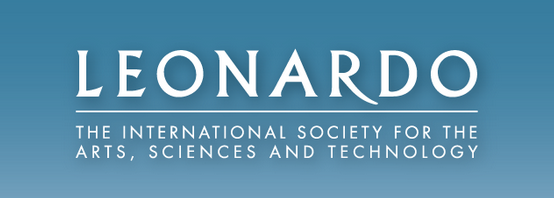 Leonardo: The International Society for Arts, Science, and Technology
Leonardo: The International Society for Arts, Science, and TechnologyFearlessly pioneering since 1968, Leonardo serves as THE community forging a transdisciplinary network to convene, research, collaborate, and disseminate best practices at the nexus of arts, science and technology worldwide.
DC Arts Science Evening Rendezvous / Cultural Programs of the National Academies of Science DC Arts Science Evening Rendezvous / Cultural Programs of the National Academies of ScienceThe DC Art Science Evening Rendezvous (DASER) is a monthly discussion forum on art and science projects in the national capital region and beyond. DASERs provide the public with a snapshot of the cultural environment of the region and foster interdisciplinary networking.Society for Literature, Science, and the Arts
DC Arts Science Evening Rendezvous / Cultural Programs of the National Academies of ScienceThe DC Art Science Evening Rendezvous (DASER) is a monthly discussion forum on art and science projects in the national capital region and beyond. DASERs provide the public with a snapshot of the cultural environment of the region and foster interdisciplinary networking.Society for Literature, Science, and the Arts Society for Literature, Science, and the ArtsThe Society for Literature, Science, and the Arts welcomes colleagues in the sciences, engineering, technology, computer science, medicine, the social sciences, the humanities, the arts, and independent scholars and artists. SLSA members share an interest in problems of science and representation, and in the cultural and social dimensions of science, technology, and medicine.American Academy of Arts & Sciences
Society for Literature, Science, and the ArtsThe Society for Literature, Science, and the Arts welcomes colleagues in the sciences, engineering, technology, computer science, medicine, the social sciences, the humanities, the arts, and independent scholars and artists. SLSA members share an interest in problems of science and representation, and in the cultural and social dimensions of science, technology, and medicine.American Academy of Arts & Sciences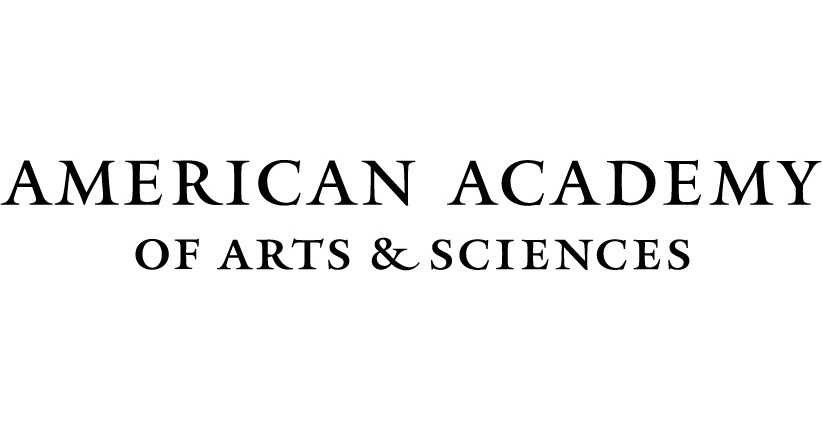 American Academy of Arts & SciencesFounded in 1780, the American Academy of Arts and Sciences honors excellence and convenes leaders from every field of human endeavor to examine new ideas, address issues of importance to the nation and the world, and work together to cultivate the arts and sciences.Fast Company
American Academy of Arts & SciencesFounded in 1780, the American Academy of Arts and Sciences honors excellence and convenes leaders from every field of human endeavor to examine new ideas, address issues of importance to the nation and the world, and work together to cultivate the arts and sciences.Fast Company Fast Company
Fast CompanyFast Company is a monthly American business magazine published in print and online that focuses on technology, business, and design. It publishes eight print issues per year.
Technology
-
Arts and technology have always had a symbiotic relationship. Enhancing technological development with principles from creative and design processes drives innovation, and in turn new technologies are adapted and transformed by artists to create new art forms that challenge our world views and provide new ways of interacting with art.
Creativity generates new ideas and approaches while innovation implements them. Because the arts are so firmly rooted in creative expression, they have an immense possible impact on technology and innovation, as well as on the economy. Creative industries that use and expand new technology generate billions of dollars each year. Technologists and artists often collaborate on projects that create new tools and technologies, while inventing entirely new artistic media.
Technology is also inspiring artists as they find new means of expression through technology, and has democratized the process of creating. From digital art to kinetic pieces, and works that tap into the internet, artists are creating provocative new and interactive art forms. The proliferation of technology into the hands of every individual carrying a smart phone has also begun to reshape the definition of the artist. As the disciplines of art and technology continue to grow in tandem and fuse, they will jointly produce the innovations of tomorrow.
- Impact Points60% say creativity is most important
When asked, 60% of CEOs cite creativity as the most important leadership quality needed today.
Carr, A. (2010, May 18). The Most Important Leadership Quality for CEOs? Creativity. Fast Company. Retrieved 16 February 2018 from https://www.fastcompany.com/1648943/most-important-leadership-quality-c…
$28 billion in streaming music per year by 2030Artists' work online is central to the future of the digital economy. Goldman Sachs report estimates revenue from streaming music will rise to $28 billion per year by 2030.
Owsinski, B. (2017, September 2). Goldman Sachs Predicts $28 Billion Streaming Music Market, But Should Anyone Care? Forbes. Retrieved 16 February 2018 from https://www.forbes.com/sites/bobbyowsinski/2017/09/02/goldman-sachs-pre…
Arts graduates 2x more entrepreneurial than other U.S. workersBetween 10% and 20% of arts school graduates founded organization demonstrating that arts alumni are 2x more entrepreneurial than the national average of 5% of U.S. workers who are self-employed in their or business.
Strategic National Arts Alumni Project. “Special Report: Career Skills and Entrepreneurship Training for Artists: Results of the 2015 SNAAP Survey Module, p. 7. Retrieved 11 May 2018 from https://www.americansforthearts.org/node/100691
77% of arts organizations agree, technology broadens what’s considered artThe notion of art is changing: 77% or arts organizations strongly agree with the statement that digital technologies have “played a major role in broadening the boundaries of what is considered art.”
Thomson, K., Purcell, K., & Rainie, L. (2013, January 4). Arts Organizations and Digital Technologies. Pew Research Center. Retrieved 16 February 2018 [https://www.americansforthearts.org/node/100688]
78% of art organizations say digital technologies increase engagementMost of the participating organizations strongly or somewhat agree with the statements that technology and social media have made art a more participatory experience (92%), and that they have helped make art audiences more diverse (83%).
ibid.
65% growth in design talent in technology industryAccording to LinkedIn, the highest echelon of the technology industry is vying for more design talent - Facebook, Google, and Amazon have collectively grown art and design headcount by 65% in the past year - with much headroom to hire more.
Maeda, John. Design in Tech Report 2017, (2017), https://designintech.report/2017/03/11/design-in-tech-report-2017.
- Examples of Practice
NEW INC
NEW INC, an experimental initiative of the New Museum, is an incubator for art, design, and technology. The shared workspace offers artist-technologists professional development and a unique environment to create their work. Tools for Show, founded in 2017, is one example of an interdisciplinary team based at NEW INC.
The newinc space (circled) found next to the New Museum in the Bowery, New York City.
New Frontier at Sundance Institute
New Frontier is an initiative that identifies and fosters independent artists working at the convergence of film, art, media, live performance, music, and technology. It features artists using technologies such as 3D printing, virtual reality, and augmented reality.
A Sundance Film Festival Power of Storytelling panel participant tries out a Samsung Gear VR headset. Sundance Institute.
veº
Fashion designer Camila Chiriboga is redefining fashion with accessible technology. From self-navigating shoes for the blind to hidden pockets for dialysis machines and medication, Chiriboga's men's fashion line, veº empowers peoples' unique abilities, allows them to become more independent, and inspires others toward inclusive universal design.
Camila Chiriboga shows a client how to use cell phone app to get description of the clothes she designed for him.
Ascribe
Ascribe is an arts and technology start up that lets artists create a unique cryptographic ID that permanently links the artist to their work. The ID enables artists to establish authenticity and authorship of digital content and lets them control the way their work is used after a sale. The Portfolio Review and Ascribe joined forces to combine a shared vision that supports photographers and puts them back at the helm of their creative practice.
Ascribe website
Mycelia
Mycelia is a “think-and-do-tank” which seeks to empower a fair, sustainable, and vibrant music industry ecosystem involving all online music interaction services using blockchain. Its blog, What can blockchain really do for the music industry, explores its work.
Mycelia’s Carlotta de Ninni giving her views on blockchain
- Reading List
Arts Organizations and Digital Technologies
The report Arts Organizations and Digital Techologies shares results of a survey to explore how arts organizations use technology and how it impacts their work.
Cultural organizations like theater companies, orchestras, and art museums are using the internet, social media, and mobile apps to draw in and engage audiences, provide deeper context around art, and disseminate their work beyond the stage and the gallery.
Information Arts: Intersections of Art, Science, and Technology
This compendium offers the first comprehensive survey of international artists who incorporate concepts and research from mathematics, the physical sciences, biology, kinetics, telecommunications, and experimental digital systems.Are Artists the New Interpreters of Scientific Innovation?
Artist in residence at industrial and government organizations has become secondary to the more well know artist in resident at "luxury-summer-camp" wgere they remove themselves from the noise and duties of day to day land concentrate on their own creative growth. This artilce discusses the resurgence of interest in the idea of inviting artists to observe, learn and work within mainstream government agencies and institutions, among entrepreneurs and scientists as well as among the artists themselves.
Creativity Enhancement with Emerging Technologies
The article suggests that a holistic strategy which combines developing technology alongside creative action to produce technology that can play a part in extending the boundaries of human though and action.
Design in Tech Report 2017
Report identifies and defines computational design as a key driver in the growth of tech businesses. Computational designers are those who deal mostly in code and build constantly evolving products that impact millions of people’s lives.
- OrganizationsZero1
 Zero1
Zero1A Silicon Valley hybrid arts organization that connects creative explorers in art, science, and technology to provoke and explore new ideas that build engaged and vibrant communities.
Gray Area Gray Area
Gray AreaGray Area is a San Francisco-based arts and technology organization that creates positive social impact through applying art and technology to education, civic engagement, and public programs.
Network for Good Bridging the Digital Divide Network for Good Bridging the Digital Divide
Network for Good Bridging the Digital DivideThis group seeks to decrease the gap between those who have access to technology and the skills to benefit from it in the United States.
Empower Change Foundation Empower Change Foundation
Empower Change FoundationConnects, empowers, and champions efforts of progressive individuals by developing and leveraging leading-edge technology, focusing on education, technology, cultural maturity, health and health sciences to promote human advancement as well as donor and partner visibility via collaborative efforts to expedite solutions.
STEM to STEAM STEM to STEAM
STEM to STEAMChampioned by the Rhode Island School of Design (RISD) with support from teachers, researchers, policy makers, students, and business people, a team of student research assistants works to apply their firsthand knowledge of Art + Design education to exploring new avenues for STEM to STEAM.
Tourism
-
Tourism—whether state-to-state or international—is both an economic driver and an engine for increased understanding and empathy between different communities. Arts and culture destinations are key factors in determining where people choose to travel.
Tourism is a business that contributes economically and socially to our communities, and cultural tourism is even better business. According to the Americans for the Arts’ Arts & Economic Prosperity 5 study, arts and culture travelers stay longer and spend more than other travelers, resulting in a strong economic impact for the communities with arts and culture offerings.
In addition, cultural tourism—whether you’re heading to the next town over or halfway around the world—inspires connection, empathy, and a renewed appreciation for the ways of others. Communities understand the role that arts and culture have in strengthening tourism, regional identity, and person-to-person connection. Increasingly, municipal governments have allocated local hotel/motel taxes to the arts, encouraging growth and continued investment.
The arts are the fourth largest driver of tourism and influence decisions made when planning travel. Experiences can include brick-and-mortar establishments (e.g., museums and theaters) along with transitory events (e.g., festivals and community projects). They appeal not only to domestic audiences but also to foreign ones, with a significant number traveling specifically to experience new cultures.
- Impact Points81% of tourists
8-in-10 U.S. tourists are considered cultural tourists.
Payne, J. (2018). Insider Exclusive: Heritage Tourism: Facts & Figures. American Bus Association. Retrieved 21 January 2021 from https://www.buses.org/news/article/insider-exclusive-heritage-toursim-facts-figures
35.3 million travel for the arts.The arts drive travel planning. 35.3 million adults say that a specific arts, cultural, or heritage event or activity influenced their choice of destination.
President’s Committee on the Arts and the Humanities. (2005). Cultural & Heritage Tourism in the United States by the President’s Committee on the Arts and the Humanities [Electronic version]. Retrieved 3 March 2018 from http://www.americansforthearts.org/by-program/reports-and-data/legislat…
Cultural tourists spend 60% more than other tourists.Research shows that cultural tourists spend nearly twice as much while traveling as other tourists do--an average of around $1,000 versus $600 per trip--providing important additional economic impacts to destination communities.
ABS. (2013) Arts and Culture in Australia: A Statistical Overview, 2012. Statistics retrieved 16 May 2018 from http://artfacts.australiacouncil.gov.au/overview/global-13/ov-fact48/.
The arts engage tourists of all ages.Attracting tourists across the age spectrum is central to a community's tourism economy. Engagement in arts and cultural interests rate high for Millennials (73%), Boomers (64.8%), and Gen Xers (67.8%).
Hargrove, C. (2014). Cultural Tourism: Attracting Visitors and Their Spending [Electronic version]. Washington, DC : Americans for the Arts. Retrieved 3 March 2018 from http://www.americansforthearts.org/by-program/reports-and-data/legislat…
2 out of 3 travelers say travel increases empathy.Research shows that 68% of travelers say that traveling to another culture increases their empathy, and 77% say they can communicate better with different types of people after traveling.
Harris Poll. "The Business Traveler Survey." (2018) Statistics retrieved from "Hyatt Place, Hyatt House Brands Reveal Findings from Business Traveler Survey" on 16 May 2018.
Cultural tourism may be a secret to peace (no, really).A growing body of literature connects culturally-based tourism to "soft diplomacy," and highlights the strong links between cultural exchange and increased intercultural dialogue, mutual understanding, political stability, and peacebuilding.
Carbone, F. International Tourism and Cultural Diplomacy: A New Conceptual Approach Towards Global Mutual Understanding and Peace through Tourism. (2017) Tourism, 65(1), 61-74. Retrieved 15 May 2018 from https://hrcak.srce.hr/file/263329.
16% of communities reinvest tourism revenues directly into culture.Increasingly, communities recognize that tourism benefits from the arts and are increasing money available for local arts agencies. 16% receive funding from local hotel/motel taxes.
Americans for the Arts. (2016). Local Arts Agencies in America: 2016 [Electronic version]. Retrieved 3 March 2018 from http://www.americansforthearts.org/sites/default/files/25%20Highlights%…
- Examples of Practice
African American Music Trails of Eastern North Carolina
African American Music Trails helps travelers explore African American music in eastern North Carolina. Researchers, writers, and photographers have worked with local residents and arts organizations to provide in-depth insiders’ views of music and musicians.
Gospel singer Latisha Scott and the Edgecombe County High School Band. Photo by Titus Brooks Heagins for the North Carolina Arts Council.
Wyoming County Rural Arts Initiative (WCRAI)
WCRAI funds artistic microenterprises and small businesses to increase tourism to the Finger Lakes Region of New York. Started in 2016, several artists have already opened shops or increased production in towns throughout the county.
Wyoming County Rural Arts Initiative project funding recipient Robert Doyle at his photography studio speaking with colleagues about their work in July 2017. Photo courtesy of Leslie Locketz.
The City of Providence Department of Arts, Culture, and Tourism
The Providence Department of Art, Culture + Tourism (AC+T) ensures the continued development of a vibrant and creative city by integrating arts and culture into community life while showcasing Providence as an international cultural destination.
People in the PVD Fest 2017 parade. Photo by Erin Smithers.
- Reading List
Monograph: Cultural Tourism: Bridging America Through Partnerships in Arts, Tourism and Economic Development
To build a long-lasting relationship, culture and tourism must join hands in collaboration, implementation and communication.Cultural Tourism: Attracting Visitors and Their Spending
Americans for the Arts has commissioned five essays spanning the intricacies of arts, entertainment, and cultural districts specifically for policymakers, arts leaders, planning professionals, community development practitioners, and others who are interested in developing new districts or adapting existing ones.
- Creating Capacity: Strategic Approaches to Managing Arts, Culture, and Entertainment Districts
- Cultural Districts: Bottom-Up and Top-Down Drivers
- Cultural Tourism: Attracting Visitors and Their Spending
- Art and Culture Districts: Financing, Funding, and Sustaining Them
- State Cultural Districts: Metrics, Policies, and Evaluation
These essays and reports are part of our National Cultural Districts Exchange, where you can find more information on cultural district legislation, case studies, a national district survey, and a collection of webinars. www.AmericansForTheArts.org/CulturalDistricts
The Cultural and Heritage Traveler Study
The primary objective of MSA’s travel and tourism white paper series is to provide education and resources to increase visitation to museums and increase business at museum stores.
Arts, Tourism, & Cultural Diplomacy
Excerpted from Arts & America: Arts, Culture, and the Future of America’s Communities. This essay looks at the changing face of tourism in America, as well as the role that the arts may play in positively impacting those changes over the next 10–15 years. The full book of essays can be purchased in Americans for the Arts online store.
Tourism as a Driver of Peace
Countries with a more open and sustainable tourism sector tend to be more peaceful. This research from the World Travel & Tourism Council looks for the first time at the empirical links between tourism and peace.
Understading the Critical Issues for the Future of Travel and Tourism
This report from the World Travel & Tourism Council looks at the impact of envirnonmental and sustainability issues on the future of global tourism.
The Impact of Culture on Tourism
This book provides an analysis of the relationship between tourism, culture and the attractiveness and competitiveness of destinations. It reviews national or regional experiences and practices of destinations where cultural resources are driving overall attractiveness. It also examines the development of tourism production and distribution processes in relation to cultural resources, identifying the key factors and policy interventions which can maximise the attractiveness of destinations as places to visit, live and invest in.
- OrganizationsCulturalHeritageTourism.org
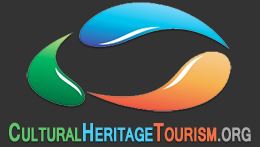 CulturalHeritageTourism.org
CulturalHeritageTourism.orgCulturalHeritageTourism.org provides a platform for cultural heritage and destination tourism professionals to connect and share best practices.
Cultural Tourism Alliance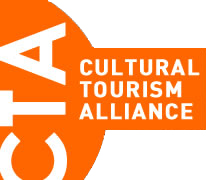 Cultural Tourism Alliance
Cultural Tourism AllianceThe Cultural Tourism Alliance is group of tourism marketing professionals who share the vision and challenge of increasing tourism to towns, cities, regions, and states in the United States through the promotion of authentic and unique cultural and heritage offerings.
National Trust for Historic Preservation National Trust for Historic Preservation
National Trust for Historic PreservationThe National Trust works to save historic places in the United States. It believes that historic places help define and distinguish communities by building a strong sense of identity.
US Travel Association US Travel Association
US Travel AssociationUS Travel represents 1,200-member organizations in the travel industry. It provides articles, reports, and toolkits addressing the role of culture in travel.
United Nations World Tourism Organization United Nations World Tourism Organization
United Nations World Tourism OrganizationThe World Tourism Organization is the United Nations agency responsible for the promotion of responsible, sustainable, and universally accessible tourism.
Transportation
-
The integrity and ease of our transportation systems, services, and roads is crucial to how we function in today’s world. Underlying these systems—helping plan them, making them safer, ensuring they’re integrated into communities—is, you guessed it, the arts.
Since the launch of the first collaborative transportation systems, artists have been commissioned to beautify the spaces, places, and vehicles that comprise these systems with murals, mosaics, writing, and other artwork. And the integration of creativity, whether through architectural design, artifice, interior design, or placemaking, has been core in every major design movement in U.S. history.
More recently, artists have begun to collaborate with government officials and businesses on transportation planning efforts to improve safety, access to roads and transit systems, deeper engagement with future transportation decisions, and environmentally-friendly solutions to community transit challenges.
The integration of the arts into both the planning process and the physical components of existing transit systems improves the user experience, increases feelings of safety and well-being, creates more community cohesion, and can educate users on the environmental and social implications of different transit projects and options.
- Impact Points$97 million because of the arts
A $97 million railcar system came to fruition because of arts-based activism in El Paso, TX.
"Arts, Culture, and Transportation: A Creative Placemaking Scan." Commissioned by ArtPlace America. Retrieved 4 May 2018 from https://www.artplaceamerica.org/view/pdf?f=http://t4america.org/wp-cont….
Art empowers communities to creatively imagine their infrastructure.Certain forms of public art can empower communities by opening up a dialogue and inviting critical as well as creative imagining to take place.
Raven, Arlene, ed. Art in the Public Interest (Ann Arbor: UMI Research Press, 1989), 10.
100% clean transit environmentA drastically reduced amount of graffiti and vandalism (which they now claim as a 100% clean transit system) in the New York City subway system is largely credited to their Arts in Transit program.
Bata, A. "Intelligent Transportation Systems for New York City Transit." In Proceedings of the 14th World Congress on Intelligent Transport Systems (ITS), Held Beijing, October 2007. Retrieved 4 May 2018 from https://trid.trb.org/view/1082379.
Art in transit stations reduces barriers to navigation for non-English speakers.Art pieces cued to the businesses or industries associated with particular hubs, as well as the integration of more traditional wayfinding symbols like arrows and pointing fingers can help ease congestion and direct passengers, including those unable to read written signage.
Abramson, C. (1994). "Safety, Wayfinding, Circulation, and Orientation." Art and the Transit Experience. Places, 9(2). Retrieved 4 May 2018 from https://escholarship.org/uc/item/4jr6h2mt
The arts can be the spark that moves multi-million-dollar transportation projects from theory to reality.In El Paso, TX, an artist's creative persistence through visual and performative art ultimately yielded a $97 million investment in the return of streetcars to the town.
"Arts, Culture, and Transportation: A Creative Placemaking Scan." Commissioned by ArtPlace America. Retrieved 4 May 2018 from https://www.artplaceamerica.org/view/pdf?f=http://t4america.org/wp-cont….
- Examples of Practice
El Paso Transnational Trolley
This project started as a fictional marketing campaign for the historic streetcar line that connected El Paso with Juarez, Mexico. The project attracted so much community interest that city funds have been raised to rebuild the streetcar.
Poster installation from the El Paso Transnational Trolley project. Photo by Peter Svarzbein.
Envision Nolensville Pike
Led by Conexión Américas, this is a comprehensive creative placemaking process to help transform bus shelters, roads, and parks in a diverse neighborhood.
Community members participate in a Creative Lab in the Envision Nolensville Pike, Nashville. Photo courtesy of Conexión Américas and Transportation America.
Manhole Masterpieces
Across Japan, manholes are viewed as more than just a way to hide access to sewer lines, cables, and other infrastructure. In the hands of artists, manhole covers become works of art.
Manhole in Osaka Japan
Rain Ravine
This artwork collects the water that falls on and near it and creates a playful environment that also salvages and allows the building to have a zero-net waterflow, meaning it collects and filters more water than it uses.
A collaboration between the rainfall and the built environment, Rain Ravine fulfills one of the petals of the Living Building Challenge. Frick Environmental Center, Frick Park, Pittsburgh, PA. Artist Stacy Levy
Transportation Art by Youth Program
Created by the Pima Association of Governments, the Transportation Art by Youth Program serves 40-50 students each summer, allowing students to acquire artistic and work experience. The goal of the program is to humanize the roadway system, enhance urban gateway features, and to help the unique community identitiy from a youth perspective.
Students from Marana High School collaborated with artist Trevor O'Tool to create this roadside installation.
- Reading List
Arts, Culture and Transportation: A Creative Placemaking Field Scan
This field scan is a summary of the ways in which artists are currently contributing to place-based transportation projects. Although it includes a discussion of art in transit and public art programs (both defined later in this document), the field scan focuses primarily on artistic projects directly addressing a transportation challenge and produced in partnership with others working on that challenge. The field of public art is also shifting in this direction, due to changes in artistic practice and in funding, so that now many public art programs address various stages of transportation projects in collaboration with other partners.
Arts, Transportation, & Infrastructure
Excerpted from Arts & America: Arts, Culture, and the Future of America’s Communities. This essay looks at how America’s transportation and building infrastructure will shift and transform over the next 10–15 years, as well as the role that the arts may play in positively impacting those changes. The full book of essays can be purchased in Americans for the Arts online store.
The Scenic Route: A Primer on Creative Placemaking in Transportation
This report is for peope planning, designing and building transportation projects and provides an primer to creative placemaking, an emerging approach that every community should consider.
Art & Planning Toolkit: A Resource for Massachusetts Cities and Towns
The Toolkit [online] presents a menu of strategies grounded in case studies of real projects that are exemplary of how arts and culture can be an effective component of planning, community development, land use, housing, transportation, economic development, public health, and public safety projects and initiatives. [What is this Toolkit]
- OrganizationsArtPlace America
 ArtPlace America
ArtPlace AmericaArtPlace was a creative placemaking hub that includes a variety of resources on key areas of focus.
Transportation for America Transportation for America
Transportation for AmericaTransportation for America is a service organization for transportation professionals that provides a number of resources to support collaborations with the arts sector.
Metropolitan Area Planning Council (MAPC) Metropolitan Area Planning Council (MAPC)
Metropolitan Area Planning Council (MAPC)The Metropolitan Area Planning Council (MAPC) is the regional planning agency serving the people who live and work in the 101 cities and towns of Metropolitan Boston, and exists to promote smart growth in regional planning, including through the integration of arts and culture.
U.S. Department of Transportation U.S. Department of Transportation
U.S. Department of TransportationAn agency of the U.S. government, the Department of Transportation ensures of nation has the safest, most efficient and modern transportation system in the world that improves the quality of life for all American people and communities.
Workforce Development
-
Workforce development is our collective responsibility—to provide training and support that produces exceptional and well-equipped workers who in turn secure our economic strength. The arts help create well-rounded workers who drive innovation, foster participation, and excel at communicating in an ever-changing and swifter business environment.
Workforce development is any training or support program that aims to produce outstanding and well-prepared workers. Combining the arts with workforce development programs helps create well-rounded workers who not only have “hard,” technical skills in their field, but also have creative thinking skills that foster innovation and drive our global economy.
Workforce development grows economic stability and prosperity by focusing on the skills of the individuals who make our economic engine run. Successful programs focus either on the needs of the people or those of the sector. Building robust growth and health in available jobs can involve finding and developing opportunities, training and supporting individuals, and expanding and enriching individuals’ outlook through other areas like arts and culture.
- Impact PointsCreativity is a top 3 desired skill.
By 2020, creativity will be the third most desired skill by employers.
The Future of Jobs: Employment, Skills, and Workforce Strategy for the Fourth Industrial Revolution. (2016) World Economic Forum. Retrieved 15 May 2018 from https://www.weforum.org/reports/the-future-of-jobs.
50% of all executives say the arts got them where they are today.The arts are integral to career success. Nearly half of all executives say the arts significantly contributed to their career success.
Shugoll, M. (2015) Unmasking Business Success: Executive Perceptions of Arts Engagement and Workforce Skills. Retrieved 15 May 2018 from https://theatreforward.org/success/.
Creativity is a top 3 desired skill.By 2020, creativity will be the third most desired skill by employers.
The Future of Jobs: Employment, Skills, and Workforce Strategy for the Fourth Industrial Revolution. (2016) World Economic Forum. Retrieved 15 May 2018 from https://www.weforum.org/reports/the-future-of-jobs.
Arts and culture creates nearly 4.7 million jobs.Arts and cultural production in 2015 represented 4.3% of the US economy, produced $689.7 billion and created 4.7 million jobs.
Restrepo, F. (2015). Arts & the Workforce [Electronic version]. Excerpted from Arts and America: Arts, Culture, and the Future of America’s Communities. Washington, DC: Americans for the Arts. Retrieved 3 March 2018 from https://www.americansforthearts.org/sites/default/files/Arts&America_Wo…
9 out of 10 executives participated in the arts in school.A history of arts participation correlates with career success: 90% of CEOs reported participating in the arts in school.
Lichtenberg, J., 2008.
Nobel prize winning scientists are almost 3x more likely to have an artistic hobby.The arts increase your likelihood of rising to the top of your field. Research has shown that the top scientists in the world, particularly Nobel prize winners, are 2.85 times as likely than average people to have an artistic hobby.
Root-Berstein, R. "Arts Foster Scientific Success: Avocations of Nobel, National Academy, Royal Society, and Sigma Xi Members." (2008) Journal of Psychology of Science and Technology, 1(2):51-63. Retrieved 15 May 2018 from https://www.researchgate.net/profile/Kendell_Pawelec/publication/247857….
- Examples of Practice
East Street Arts (ESA)
ESA provides creative workforce development for persons with disabilities and local artists and makers. It includes diverse populations in arts programming by hiring and training local artists to hold workshops with persons of all abilities and develop a salable product.
Artist with their work. Courtesy of Mary Schiffer.
Improv Consultants
Improv Consultants provides business training and executive coaching with a team composed of improvisers, facilitators, and executive coaches. The intersection of improvisation and business training helps teams collaborate, imagine, and communicate more effectively while having fun.
Workshop by Improv Consultants
Made in NY Production Assistant Training Program
The program partners with the NYC Mayor’s Office of Media and Entertainment to deliver a skills training program to low-income New Yorkers with barriers to employment in the NYC film and TV industry. It also helps to diversify the industry.
Made in NY Production Assistant Training Program Cycle 49 graduates. Courtesy of Made In New York.
Upstate Alliance for the Creative Economy (ACE)
ACE works to strengthen support for creative freelancers, creative organizations, and individuals involved in creative work. At its heart, ACE is about strengthening the Capital Region’s creative economy to drive business development, increase jobs, and promote tourism.
ACE Inside Business Event at EYP Architecture and Engineering. Photo by Adrian Fernandez.
- Reading List
Ready to Innovate
The Conference Board and Americans for the Arts, working with the American Association of School Administrators, surveyed 155 U.S. business executives (employers) and 89 school superintendents and school leaders (superintendents) to determine the skills and abilities that cultivate creativity. The survey results reflect employers? recognition that building an innovative workforce will depend on developing employees' creative abilities.Arts & the Workforce
Excerpted from Arts & America: Arts, Culture, and the Future of America’s Communities. This essay looks at changes in the American economy and the workforce and the role the arts may play in positively impacting those changes over the next 10–15 years and beyond. The full book of essays can be purchased in Americans for the Arts online store.
America's Creative Economy
This research project was designed to profile and analyze how the creative economy is currently being defined, segmented and quantified throughout the United States of America. We assessed what we can learn from aggregating creative economy profiles, and whether there is the possibility of producing a ‘core’ national profile definition and accompanying data descriptors [Executive Summmary]
The Impact of Arts Education on Workforce Preparation
This Issue Brief provides examples of arts-based education as a money- and time-saving option for states looking to build skills, increase academic success, heighten standardized test scores, and lower the incidence of crime among general and at-risk populations.Developing the creative and innovative potential of young people through non-formal learning in ways that are relevant to employability
This report is about how non-formal learning and especially youth work can enhance the creative and innovative capacities of young people in ways that are relevant to employability. It goes beyond identifying the skills and competences involved, to present illustrative examples of practice and cross-sectoral cooperation.
- OrganizationsNational Creativity Network
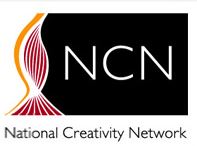 National Creativity Network
National Creativity NetworkThe National Creativity Network engages, connects, informs, promotes, and counsels cross-sector stakeholders who use imagination, creativity, and innovation to foster flourishing individuals, institutions, and communities across the United States.
Workforce Development Institute (WDI) Workforce Development Institute (WDI)
Workforce Development Institute (WDI)Based in New York state, WDI offers information on how to facilitate projects that build skills and strengthen employers’ ability to hire and promote workers. Its work is accomplished through partnerships and collaborations with businesses, unions, other nonprofits, educational institutions, and government.
The Artian The Artian
The ArtianThrough seminars, blogging, community events, workshops, and presentations, TheArtian exposes, promotes, and educates about the value of art to drive innovation in business. Its blog and community provide resources to help drive innovation by embracing art and creativity.
The pARTnership Movement The pARTnership Movement
The pARTnership MovementThe pARTnership Movement, an initiative from Americans for the Arts, wants business leaders to know that partnering with the arts can build their competitive advantage. It provides reasons to partner, how to find a partner, success stories, and research.
Youth Education
-
Providing a comprehensive education for our children, both in and outside of school, improves our country. Studies repeatedly show the positive effects on students when the arts are part of a well-rounded education.
The arts have intersected with education strongly and inextricably for all of human history. Each of the art disciplines (music, visual art, theater, dance and media arts ) can carry forward a civilization's history, teach lessons, and celebrate our individual and collective heritage.
In more recent history, starting with early advocates like John Dewey, both formal and informal education in the United States have demonstrated imagination, better test scores, more civic engagement, public savings, increased lifelong earning potential, better community cohesion, and more. Arts and youth development also extends beyond the classroom to the domain of what is now called Creative Youth Development, which means the longstanding theory of practice that integrates creative skill-building, inquiry, and expression with positive youth development principles, fueling young people’s imaginations and building critical learning and life skills.
The rich and well-documented links between the arts and education, both formal and informal, create a robust case for supporting pro-arts education funding and pro-arts education policy in every community
- Impact Points$1 for the arts saves $9 on other costs.
After school arts programs save cities money. For every $1 spent on afterschool programs, $9 is saved by reducing welfare and crime costs, improving academic performance and increasing kids' earning potential.
Green, L., 2017.
More than 2x as likely to graduate college.The arts help people succeed. Low-income students who are highly engaged in the arts are more than twice as likely to graduate college than their peers with no arts education.
Arts Education Navigator: Facts & Figures. Americans for the Arts. Retrieved on 13 May 2018 from https://www.americansforthearts.org/by-program/networks-and-councils/ar….
Students who participate in the arts are 5x less likely to drop out.Students excited by school stay in school. Low-income students who participate in the arts, both in school and after school have a drop out rate of just 4%--5x lower than their peers.
ibid.
4 out of 5 young adults were more likely to vote after engaging in the arts.The arts make young adults more civically engaged. 78% of young adults who had arts-rich experiences were more likely to vote or participate in a political campaign.
Catterall, J., Dumais, S., & Hampden-Thompson, G. (2012: The Arts and Achievement in At-Risk Youth: Findings from Four Longitudinal Studies (Research Report #55), 21. Washington, DC: National Endowment for the Arts.
Arts-engaged kids average 100 points higher on their SAT.Students who take four years of arts and music classes average almost 100 points better on their SAT scores than students with only a half-year or less.
Arts Education Navigator: Facts & Figures.
Available after school arts programs cause neighborhood crime to drop up to 5%.Arts programs reduce crime levels. Participation in afterschool arts programs causes juvenile crime to fall by 4.2% on average, and slightly more (5.4%) in lower-income cities.
Gregg, M., Gupta, R., & Bach-Coulibaly, M. (2014, May 6). After-school Programs & the Arts as Tools for Youth Development. Footnote. Retrieved 4 February 2018 from http://footnote.co/after-school-programs-the-arts-as-tools-for-youth-de…
- Examples of Practice
AS220
AS220 Youth focuses its arts education program on youth ages 14 to 21 that are in the care and custody of the state. It engages youth in a creative process to lead them to positive social, educational, and vocational outcomes.
AS220 is a creative incubator for at-risk and beyond-risk youth.
Mosaic Youth Theatre of Detroit
Mosaic empowers young people by helping them develop patterns of cooperation, disciplined work habits, and effective problem-solving skills through the creation of high-quality, professional-level performances of theater and music.
Let It Shine, Joe’s Pub, NY, June 2017. Photo by © 8SP_Simon Luethi.
SAY Sí
SAY Sí strives to have each student artist become a productive and thoughtful citizen by enhancing their social, academic, cognitive, and vocational competencies and improving their self-esteem and self-identity.
SAY Sí senior Victoria Villaseñor speaks at the annual HelloGoodbye ceremony, where seniors are recognized and middle school artists are welcomed into high school programs
The Wooden Floor
The Wooden Floor uses dance to transform the lives of young people in low-income communities through a long-term approach grounded in exploratory dance education. One hundred percent program graduates enroll in higher education.
Students of The Wooden Floor perform Folk Dance in Gold, Choreographed by Keely Garfield and The Wooden Floor dancers. Photo by Christine Cotter © 2017 The Wooden Floor
Cheyenne River Youth Project (CRYP)
CRYP is an authentic grassroots initiative that intersects culture, history, heritage, and service. It is designed to meet the specific needs of the Cheyenne River Sioux Reservation through innovative youth programming, vital family services, and educational public events and activities.
Young boys performing traditional dance at RedCan Graffiti Jam. Image courtesy of Cheyenne River Youth Project
- Reading List
The Arts and Achievement in At-Risk Youth: Findings from Four Longitudinal Studies
This report examines arts-related variables from four large datasets -- three maintained by the U.S. Department of Education and one by the Department of Labor -- to understand the relationship between arts engagement and positive academic and social outcomes in children and young adults of low socioeconomic status (SES). Conducted by James Catterall, University of California Los Angeles, et al., the analyses show that achievement gaps between high- and low-SES groups appear to be mitigated for children and young adults who have arts-rich backgrounds.
Something to Say: Success Principles for Afterschool Arts Programs From Urban Youth and Other Experts
Something to Say: Success Principles for Afterschool Arts Pro-grams from Urban Youth and Other Experts endeavors to an-swer these questions. The primary way we approached this project was by seeing youth as consumers of OST activities, and taking many of our questions directly to them. In our research we spoke to young people in their neighborhoods and homes, interviewed researchers and youth development practitioners, visited highly effective programs, and combed the research to address some of the key knowledge gaps in the field of OST arts activities for urban, low-income tweens and teens. [Executive Summary, p. 11]
Arts & K–12 Education
Excerpted from Arts & America: Arts, Culture, and the Future of America’s Communities. This essay looks at pending changes within the K–12 American formal education system and the role that the arts may play in positively impacting those changes over the next 10–15 years. The full book of essays can be purchased in Americans for the Arts online store.
Setting the Stage: National Summit on Creative Youth Development
This report is based on research conducted to gather insights from arts, humanities, and science based youth development programs on the keys to their practice, impact, and future. The report serves as briefing materials for the National Summit on Creative Youth Development: Unite. Celebrate. Activate held in March 2014. The Summit was presented by the Massachusetts Cultural Council in partnership with the National Guild for Community Arts Education and the President’s Committee on the Arts and the Humanities.
Creative Youth Development (CYD) Webinars
Presented by the Creative Youth Development National Partnership, this year-long technical assistance series is designed to increase understanding of CYD practice, build capacity, and advance the field.
- OrganizationsNational Guild for Community Arts Education
 National Guild for Community Arts Education
National Guild for Community Arts EducationWorks to ensure that all people have opportunities to maximize their creative potential. It is increasingly focusing on creative aging and lifelong learning.
The Alliance for International Youth Development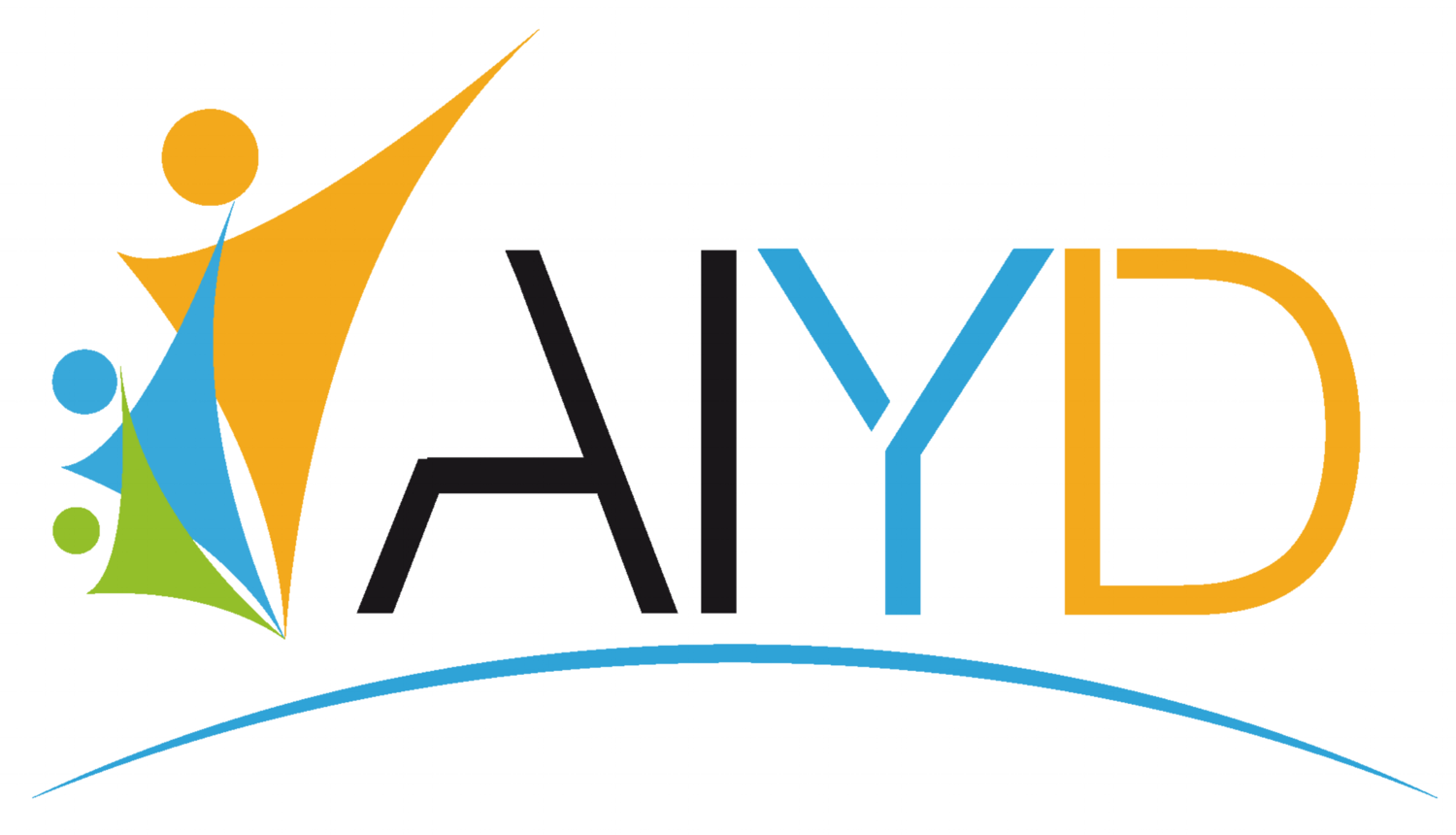 The Alliance for International Youth Development
The Alliance for International Youth DevelopmentThis group provides an opportunity for engaged organizations and individuals to share effective practices across all sectors of international youth development and to inform programs and policies that support and impact youth.
Creative Youth Development National Partnership Creative Youth Development National Partnership
Creative Youth Development National PartnershipA partnership of organizations working in concert with the broader field to drive collective action in three strategic priorities to advance creative youth development.
National Art Education Association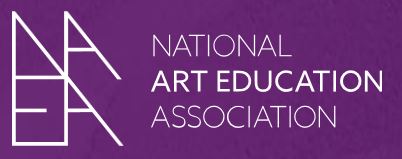 National Art Education Association
National Art Education AssociationThe leading professional membership organization exclusively for visual arts educators advancing visual arts education to fulfill human potential and promote global understanding.
Arts Education Partnership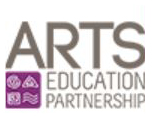 Arts Education Partnership
Arts Education PartnershipA national network of organizations dedicated to advancing the arts in education through research, policy, and practice. AEP’s vision is that every student in America succeeds in school, work, and life as a result of a high-quality education in and through the arts.
There are many types of art: theater, music, visual art, media art, literature, dance, opera, craft, and more. Regardless of the type, the arts transform people and communities every day.
The pursuit of equity and diversity is about improving conditions and addressing systems to create equal justice and opportunity for everyone. The arts have always been central to such movements and always will.
EXPLORE THE IMPACT OF THE ARTS

